


















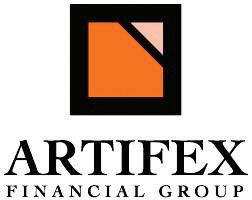
Americans and the Holocaust, on display at the Dayton Metro Library's main library through June 21.
The traveling version of the U.S. Holocaust Memorial Museum’s Americans and the Holocaust exhibit is on display at the Dayton Metro Library's main library through June 21. Dayton Metro Library is one of 50 academic and public libraries in the United States — and the only one in Ohio — to host Americans and the Holocaust for its initial tour.
The U.S. Holocaust Memorial Museum in Washington, D.C. opened the original exhibit


More about the film Charlotte.............Page 26
in 2018 to mark the museum’s 25th anniversary.
Museum staff and curators collaborated with Ken Burns, Lynn Novick, and Sarah Botstein for their 2022 PBS documentary, The U.S. and the Holocaust
Dayton Metro Library will host four programs at the main library connected to the exhibit in June:

• Daytonians and the Holocaust: The View From Here, a talk by Dayton Jewish Observer Editor and Publisher Marshall Weiss, at 7 p.m., Monday, June 5;
• The JCC Jewish Film Fest screening of Charlotte, at 7:15
Temple Israel’s Jewish Cultural Festival returns Sunday, June 11 from 11 a.m. to 7 p.m.
Food will be available for purchase from El Meson, Brock Masterson's, and My Favorite Muffin.
Also available will be treats from Graeter’s, Temple Israel’s bakery, and The Dayton Beer Co.
Entertainment includes The Flying Klezmerians, Mary “Mahira” Rogers with Steve Wyke and Marc Gilbert, the Shimmy Cats, the Dayton Metro Barbershop Chorus, and the Miami Valley Symphony Orchestra.

The children's area, near the open-air vendor marketplace, will include a petting zoo, sto-
ries, games, and crafts.
The schedule of speakers inside the temple includes:
• Jayne Klose and Bonnie Beaman Rice, Combatting Stereotypes and Antisemitism, 12:30 p.m.
• Meredith Moss Levinson moderating Diversity of Jewish Culture and Tradition, 2 p.m.
• Tom Bainbridge, Vicki Kemmerer, and Jese Shell, Jews Can Be Farmers Too, 3:30 p.m.
• Rabbi Karen BodneyHalasz, Diversity of Jewish Practice in America, 5 p.m.


Nonprofits at this year’s Mitzvah Alley are Sidewalk Soldiers, Montgomery County Prevention Coalition, Brunner Literacy Center, and the Soroptimists.
p.m., Thursday, June 8;
• The second day of a conference for Holocaust educators, on Wednesday, June 14 (June 13 at Wright State University);
• Belonging Versus Othering, a panel discussion on immigration, at 6 p.m., Thursday, June 15.
Volunteer docents will lead several 25-minute guided tours of Americans and the Holocaust in June; the complete schedule is at daytonmetrolibrary.org.
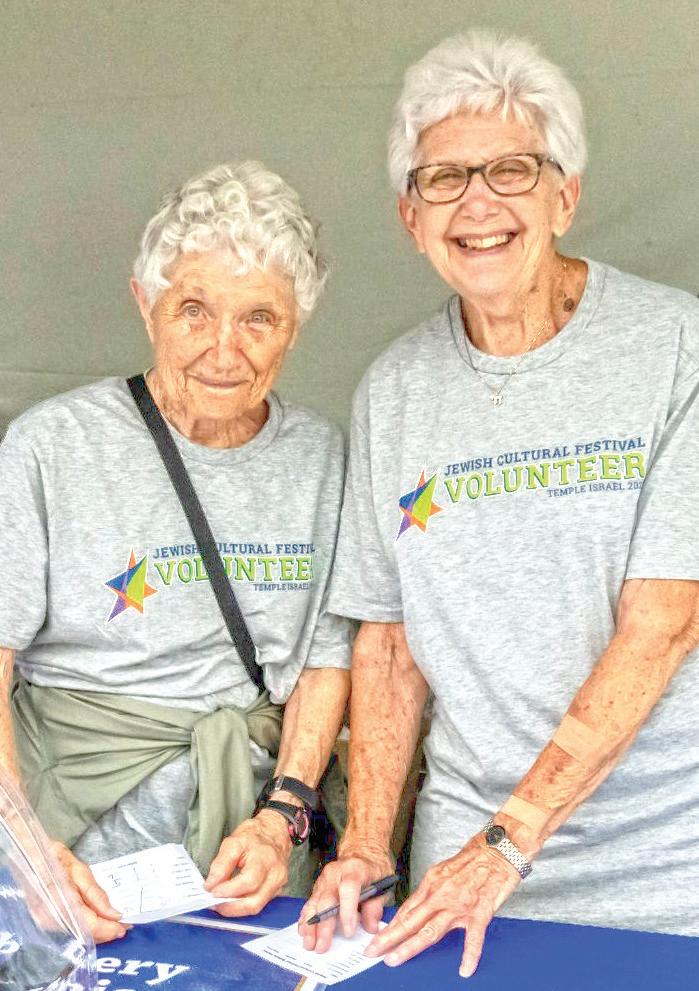
The main library is located at 215 E. Third St. Registration is requested for all tours and programs, at daytonmetrolibrary. org. — Marshall Weiss
The festival is held at Temple Israel, 130 Riverside Dr., Dayton. Admission is free. For details, go to tidayton.org/festival.

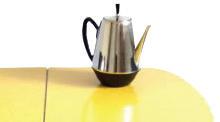


The traveling version of the U.S. Holocaust Memorial Museum's Americans and the Holocaust exhibit, on display through June 21 at the Dayton Metro Library's main library, poses questions to those who take it in — What did Americans know? What more could have been done?

The exhibit's lead historian, Rebecca Erbelding, has said it challenges people regardless of their preconceived notions.

“If you come in thinking the United States did everything it could to stop the Holocaust, you’re going to get challenged. That preconception will not be with you when you leave. If you think the United States could not have done anything, you’re going to be challenged as well," she told The Observer in a previous interview.
Here, The Observer looks at what Daytonians knew and how they responded to reports of the














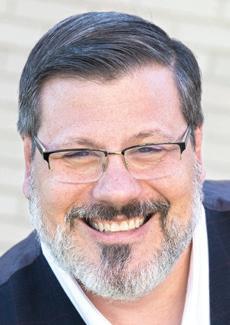

Old Kveller, what advice do you have for the Class of 2023?
One word: LITHIUM.

Nazis' atrocities against the Jews.
An examination of local daily newspapers of that time period shows that Daytonians were kept well informed of Nazi Germany's antisemitic rhetoric, edicts, and actions against Jews under its control, from the rise of the Third Reich in 1933 through the Nazi genocide of more than 6 million Jews by the time of Nazi Germany's surrender in May 1945.

These news reports, usually from wire services, were presented with frequency and prominence, often on the first page or in the first few pages of the front section of Dayton's daily newspapers. They were augmented by strong editorials, opinion pieces, and syndicated columns denouncing the actions of Nazi Germany against the Jews of Europe.

If newspaper readers living in Dayton in the Continued on Page Four
The enormity of the Holocaust has the potential to render it unknowable. So we listen to the stories. We understand the stories as best we can, as pieces in a mosaic. Especially crucial is to apply what we learn about the Shoah to the ethical challenges we face today. With that in mind, be sure to take in the Americans and the Holocaust exhibit, participate in its programs, and mark Thursday, June 15 at 6 p.m. on your calendar to attend Dayton Metro Library's panel discussion on immigration. Belonging Versus Othering will feature UD Sociology Prof. Theo Majka, Dayton Metro Library Newest American Specialist Gabriela Pickett (also a Dayton Public Schools board member), Welcome Dayton's Desire Ntwayingabo, and Eichelberger Center For Community Voices/WYSO's Neenah Ellis. Amaha Sellassie, director of the Center for Applied Social Issues and assistant professor of sociology at Sinclair College, will serve as moderator.
Daytonians were kept well informed of Nazi Germany's antisemitic rhetoric, edicts, and actions against Jews under its control
Continued from Page Three
1930s or 1940s claimed they didn't know what the Nazis were doing, they would have been in denial or willfully ignorant.
Though some in Dayton's German community showed their support for Nazi Germany and Hitler's fascist regime, their attempts to organize were short-lived and solidly denounced by the organized German community here.
For its part, Dayton's organized Jewish community mobilized to provide what relief it could for the persecuted Jews of Nazi Europe. Dayton's Jews prepared to receive and provide for its share of what would turn out to be the very few European Jewish refugees who could flee and make their way to America.
Dayton's YWCA reported in 1910 that the city was home to 5,816 people of German origin and a Jewish population of 4,500.
Eastern European Jews lived in the neighborhood of Wayne Avenue and Wyoming Street in the East End, as did German immigrants and their adult children.
"If you were lucky, your mother gave you a penny, and you could buy a single piece of candy, or better yet, a large, soft pretzel on which you spread thick mustard, at one of the two corner stores — Motzel's or Schommer's," Dayton Daily News sportswriter Si Burick recalled of the old neighborhood of his childhood in a 1971 column. Those corner stores were German-owned.
Burick's father was the rabbi at Beth Abraham Synagogue, which dedicated its new building at 530 S. Wayne Ave., across from Jones Street, in August 1918.
The synagogue had hired Becker's German Band for the procession to the new building.
"As they approached the edifice built for the preservation of Orthodox Jewish tenets and ethics, the bandsmen proudly burst into an enthusiastic rendition of Onward, Christian Soldiers," Burick added.
Near Beth Abraham Synagogue, at 610 S. Wayne Ave., stood Liederkranz Hall, the base of operations for Dayton's celebrated German men's chorus.
Burick remembered that Jews in the neighborhood would rent
daytonjewishobserver.org
Editor and Publisher Marshall Weiss mweiss@jfgd.net
937-610-1555
Contributors Candace R. Kwiatek Rabbi Levi Simon
Advertising Sales Executive Patty Caruso, plhc69@gmail.com
Administrative Assistant Samantha Daniel, sdaniel@jfgd.net 937-610-1555
Billing Sheila Myers, smyers@jfgd.net 937-610-1555
Proofreader Rachel Haug Gilbert Observer Advisor Martin Gottlieb
Liederkranz Hall for meetings, Yiddish theatre productions, charity balls, and weddings.
Jewish-owned businesses also bought ads in Dayton Liederkranz's concert series program books. Among them were Cincinnati Bakery, O.K. Bakery, The Metropolitan, Israel Brothers Scrap Metal, and attorney Sidney Kusworm Jr.
Liederkranz chorus members admired the stately beauty of the new Beth Abraham building. The ensemble began taking its yearly publicity photos on the steps in front of the synagogue.
The 1928 book, German Pioneers of Montgomery County, Ohio: Early Pioneer Life in Dayton, Miamisburg, Germantown, based on the lectures of H.A. Rattermann, a scholar of the history of Germans in the United States, includes a photo of B’nai Yeshurun on Jefferson Street (now Temple Israel) on a page along with images of Dayton’s Holy Trinity Church, St. Mary’s Catholic Church, and Emmanuel Catholic Church. Rattermann considered the temple to be among the German houses of worship here.
There was a history of social overlap among Germans in Dayton and Dayton's Jews from Germany, who settled here mainly between the 1840s and 1870s and had established B'nai Yeshurun downtown.
In 1911, for example, The Dayton Daily News reported that "about 1,000 people enjoyed a genuine old German evening at the Allen School. (B'nai Yeshurun's) Rabbi David Lefkowitz
delivered an interesting address supplemented with stereopticon views of German scenes, and Mrs. Lefkowitz rendered a number of German songs."
In a 2018 interview with The Observer, a person who used to be responsible for the Liederkranz-Turner archives, which is now at Wright State University, related that one year, when the Nazis were in power in Germany, a member of the Liederkranz chorus held up a small Nazi flag when the group took its portrait on Beth Abraham Synagogue's steps.

She noted that she had included that photo in the Liederkranz-Turner archival collection when it was given to Wright State in 2013. Despite repeated attempts to locate that image in the collection, The Observer has not been able to find it.
In 1936, an ad in a Dayton Liederkranz concert program featured the endorsement of a Republican candidate for Congress by Father Charles Coughlin of Detroit, whose virulently antisemitic broadcasts reached more than 3.5 million Americans over the radio.
The Dayton Daily News (Democratic and owned by James Cox) and The Dayton Journal and The Dayton Herald (Republican and both owned beginning in April 1935 by Frank Knox, owner of the Chicago Daily News) would cover Nazi antisemitism and the Holocaust thoroughly, though the Daily News did so nearly from
the beginning of Hitler's rule in January 1933.
The Daily News relied on Associated Press as its wire service; the Journal Herald often used United Press.
The Daily News distributed a March 28, 1933 AP story about an overflow rally of 57,000 at Madison Square Garden sponsored by the American Jewish Congress to protest the mistreatment of Jews in Germany.
Along with the story, the Daily News published an unsigned editorial taking Hitler to task for raving against Germany's Jews and for censoring news in Germany, though it still expressed the belief that "now that he has the people in his power, (Hitler) has no real desire to carry out his promises to persecute the Jews."
A year later, the Daily News and the Herald reported on Germany's continuing persecution against the Jews.
"Hitler tells the world that 'the National Socialist revolution is over. It has fulfilled all its hopes.' When the concentration camps have been emptied,
In conjunction with the Americans and the Holocaust exhibit at the Dayton Metro Library's main library, Marshall Weiss will present the talk Daytonians and the Holocaust: The View from Here at 7 p.m., Monday, June 5 at the main library, 215 E. Third St. The free program is also presented by Miami Valley Jewish Genealogy & History. Reservations are requested at daytonmetrolibrary.org.
Published by the Jewish Federation of Greater Dayton Mary Rita Weissman President Dan Sweeny President Elect Marni Flagel Secretary Neil Friedman Treasurer Ben Mazer VP Personnel Teddy Goldenberg VP Resource Dev. Dr. Heath Gilbert Immediate Past Pres. Cathy Gardner CEO
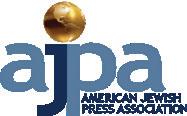
The Dayton Jewish Observer, Vol. 27, No. 10. The Dayton Jewish Observer is published monthly by the Jewish Federation of Greater Dayton, a nonprofit corporation, 525 Versailles Dr., Dayton, OH 45459.
Views expressed by columnists, in readers’ letters, and in opinion pieces do not necessarily reflect the opinion of staff or layleaders of The Dayton Jewish Observer or the Jewish Federation of Greater Dayton. Acceptance of advertising neither endorses advertisers nor guarantees kashrut.
The Dayton Jewish Observer Mission Statement

To support, strengthen and champion the Dayton Jewish community by providing a forum and resource for Jewish community interests.
Goals • To encourage affiliation, involvement and communication.
• To provide announcements, news, opinions and analysis of local, national and international activities and issues affecting Jews and the Jewish community.

• To build community across institutional, organizational and denominational lines.
• To advance causes important to the strength of our Jewish community including support of Federation agencies, its annual campaign, synagogue affiliation, Jewish education and participation in Jewish and general community affairs.
• To provide an historic record of Dayton Jewish life.
The Dayton Jewish Observer

the torturing of dissenters and Jews stopped, Hitler will be believed," a Sept. 7, 1934 Dayton Daily News editorial stated.
Two months after the Nuremberg Race Laws were enacted against Germany's Jews, on Nov. 27, 1935, the Herald published United Press' interview with Hitler in Berlin in which the dictator equated Bolshevism with Judaism.
"The necessity of combatting Bolshevism is one of the fundamental reasons for Jewish legislation in Germany. This legislation is not anti-Jewish but is pro-German. Through these laws, the rights of the Germans shall be protected against destructive Jewish influences."
The Observer looked at local newspaper coverage at key points in Hitler's path to his mass extermination of the Jews: the invasion of Austria and the Kristallnacht pogroms in 1938, the invasion of Poland in 1939, the herding of Jews into ghettos in 1940 and 1941, and news of the Final Solution trickling out as early as March 1942.
By Kristallnacht — Nazi Germany's attacks on Jews, their property, businesses, and synagogues on Nov. 9 and 10, 1938 — the Herald matched the Dayton Daily's coverage. The papers also ran wire photos of the damage in the aftermath of Kristallnacht.
"World indignation over persecution of Jews in Germany has had the effect of hastening solutions for this aspect of the refugee problem," read a hopeful Nov. 18, 1938 Dayton Herald editorial.
"Before the closed gates of the world, another persecution appeals," a Nov. 26, 1938 Dayton Daily editorial lamented. "Nazi Germany lays savage hand upon its fewer than a million Jews. Poland makes life hard for its 3.5 million Jews. Fascist Italy starts persecuting the Jews. Wanted: A land of refuge for 5 or 6 million Jews! There are still vast, empty spaces on the earth. Where is one such to serve as a refuge for the Jews?"
The Herald published that editorial a day after it ran a UP news story that "The British government cannot increase Palestine emigration at present because it might prejudice the forthcoming Jewish-Arab conference, Malcolm MacDonald, colonial and dominions secretary, told parliament...'when we promised to facilitate a national home for Jews in Palestine we never anticipated this fierce persecution in Europe. We made no promise that Palestine should be a home for everyone seeking escape from such a calamity. Palestine's rather meager soil cannot support more than a fraction of the Jews who wish to escape Europe.'"
Three hundred members of Dayton's Jewish community met July 10, 1933 to launch a campaign for the American Jewish Joint Distribution Committee to feed, clothe, and shelter "the Jews who have been driven by the Hitler edict from their homes in Germany and forced to seek humble abode in the slums of the cities," The Dayton Daily News reported. The $10,000 raised (equivalent to $231,575 today) would also be used for Jewish emigration from Germany, though the United States remained virtually closed
to Jews in Germany and Eastern Europe.
In its coverage of that 1933 campaign, the Dayton Daily essentially reprinted the entire speech given to the gathering by JDC's chairman, Rabbi Jonah Wise, who detailed the desperate needs of Germany's Jews.
A year later, the campaign drive was reorganized into the United Jewish Council, an annual campaign, with former Ohio Gov. James Cox — publisher of the Daily News — as a key speaker.
In the summer of 1935, Temple Israel's Rabbi Louis Witt traveled across Europe to learn about the plight of its Jews.
"The cold, planned persecution of the Jews in Germany is far more sinister than any bloody pogrom that might be instituted," Witt told those at the opening event of the 1935 United Jewish Council campaign, according to the Daily News.
"The right to live is being denied the Jew, in that
their right to earn a livelihood is being taken from them. Deprived of such right to earn their own bread, the Jews are being forced into the lowest forms of degradation possible."
The rabbi added that German nationalism "honestly believes that it will teach the nations how to get rid of the Jew on the basis of their blood, his race blood."
The United Jewish Council campaign also provided funds for local and national Jewish organizations. However, at the end of 1936, its board agreed that "every appeal be cut to a minimum in favor of the overseas emergency."
From then on, 70 percent of the money Dayton's United Jewish Council collected each year went to relief for Jews in Nazi Europe. By 1943, the annual campaign raised $56,450 — $984,186 in today's money.

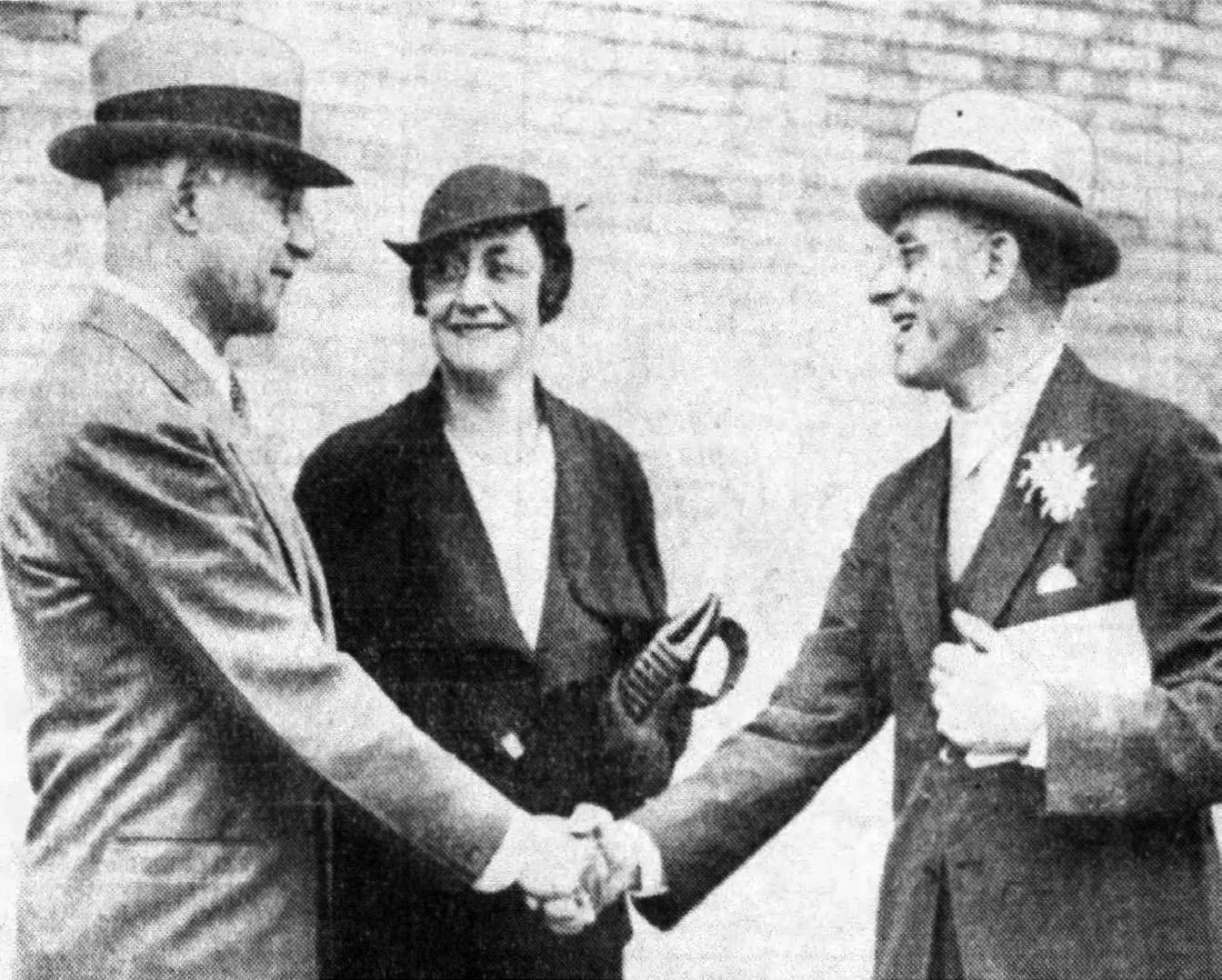
The council also approved Witt's motion in June 1938 that "where an affidavit is furnished by an individual or individuals necessary for an emigrant or emigrants to immigrate to our community, that it is the responsibility of the Jewish community, provided such affidavit is approved by the Jewish Federation for Social Service and furnished at its insistence."
Rebecca Erbelding, lead historian of the Americans and the Holocaust exhibit, explained that local organizations such as Dayton's Jewish Federation were generally not permitted to sponsor individuals or groups directly. It was groups such as the National Council for Jewish Women, Hebrew Immigrant Aid Society, the American Friends Service Committee, and the National Refugee Service that helped connect refugees with willing sponsors.
Then, organizations such as Jewish Federations "assisted with resettlement — with finding jobs, enrolling in school, obtaining retraining, and general 'Americanization,'" Erbelding said.
Dayton's United Jewish Council and Jewish Federation — along with regional Jewish organizations and national umbrella organizations for Jewish rescue and relief — attempted to prepare an infrastructure to accept Jewish refugees from Nazi Europe.
In 1939, Dayton's United Jewish Council and Jewish Federation agreed to accept a refugee family and a refugee child each month, and to provide them with medical and dental care, furnishings, food, light, and rent.
But between 1938 and 1941, Dayton was only able to resettle 70 Jews who had escaped the Nazis. The vast majority of Jews in Nazi-occupied territory had no way out. Few nations would take them in.
According to the U.S. Holocaust Memorial Museum, between 1938 and 1941, 123,868 Jewish refugees immigrated to the United States. And after July 1941, emigration from Nazi-occupied territory was virtually impossible.
Immigration of Eastern Europeans had been virtually shut down to "undesirables" by the U.S. Congress in 1924. And yearly allocations of U.S. visas from Germany and Austria were locked in at 27,370.
Even so, numerous news accounts in the aftermath of Kristallnacht reported that the United States and England in particular considered expanding the Continued on Page Six
Continued from Page Five
number of immigrants allowed in from Germany and Nazi-controlled Austria. It didn't happen.
In November 1938, following Kristallnacht, a Gallup poll asked Americans if they approved or disapproved of the Nazi treatment of Jews in Germany. Ninety-four percent disapproved, six percent approved.
When asked, “Should we allow a larger number of Jewish exiles from Germany to come to the United States to live,” 71 percent said no, 21 percent said yes, and 8 percent had no opinion.
Jews who sought to flee the Nazis were thwarted at every turn by the U.S. State Department and its byzantine, ever-changing, ever-tightening obstacles to emigration from Germany and Nazi-occupied lands.
In the 1930s, more than 12 million people of German origin lived in the United States. Of them, the U.S. Holocaust Memorial Museum estimates that 25,000 became members of the pro-Nazi paramilitary German American Bund after it was established in 1936. The Bund as it was called, was in league with Jew-baiting radio broadcaster Father Charles Coughlin and his Christian Front group. In Dayton, listeners could tune into Coughlin's broadcasts on WHIO radio, also owned by James Cox, even as Cox's Dayton Daily lambasted Coughlin in a Dec. 2, 1938 editorial for telling his listeners after Kristallnacht that the Jews had inspired and financed the Russian Revolution.
A year later, the National Association of Broadcasters established its own self-regulating code committee to force Coughlin off the air.
Officially, Bund members were supposed to be American citizens of German lineage. Most were German citizens. The Bund claimed it had no direct connection to Nazi Germany. It did.
In his book Gangsters Vs Nazis: How Jewish Mobsters
Battled Nazis in Wartime America, Michael Benson writes that "the distinction was legal as well as moral. The instant that the Bund admitted to representing a foreign power, it would lose the protections of the U.S. Constitution."
Daytonians read in their local dailies about violence and riots at Bund meetings across the country, that members of the American Legion would show up and physically attack Bund members.
What Daytonians didn't know was that Jewish mobsters and their Jewish muscle men disguised as American Legion members would assault Bund members, and that it was at the secret
behest of a Jewish judge in New York City.
In mid-February 1938, the Dayton Herald and Dayton Daily News announced that a national Bund leader, G. Wilhelm Kunze, was scheduled to speak in Dayton on March 17 at Liederkranz Hall, and that "plans have been discussed for opening a Nazi camp in this vicinity."
A day after the report, the Dayton Daily ran an update that Liederkranz society officials had reversed course.
"Members of the Dayton Bund engaged the hall for the speech about four weeks ago, according to Christ Koerner, Liederkranz secretary who booked the meeting. In the light of the widespread antagonism which Kunze's addresses have aroused, however, Henry Funder, president, and Carl Shultheis, treasurer, conferred with Koerner Tuesday morning and arrived at the decision to cancel the lease of the hall."
The Herald reported on March 16, 1938 that Kunze would arrive in Dayton the next day as originally scheduled, but that he would only meet with members of the Dayton Bund and its president, William G. Ruhnke, along with a small group of invited guests in a private session.
The update added that "the Dayton Bund has severed connections with the Federation of German Societies, it was learned, in order not to embarrass members of organizations affiliated with the Federation."
Also prior to and because of Kunze's visit, the Dayton Daily printed a statement on March 12, 1938 from six local veterans groups expressing their "avowed opposition," albeit indirectly, to "certain movements which they term 'un-American.'"
The Dayton Bund held the private meeting on the evening of Thursday, March 17, 1938 at the Gibbons Hotel.
Present were 15 local Bund members, five invited guests including American Legion Post 5 Commander and Steele High School Principal Jay William Holmes, and one reporter each from the Daily News and the Dayton Journal.
In an interview more than two decades ago with The Observer, Maxwell Nathan said the Journal assigned him to cover the meeting at the insistence of the Dayton Bund. It would only allow him, a Jew, to cover the meeting for the Journal, with no explanation given.
Nathan's March 18, 1938 piece reported that Kunze outlined the Bund's purposes and delivered an "antisemitic attack" at the meeting, "an attack on an 'atheist and international movement' described as threatening the United
States."
The Dayton Daily's coverage quoted Dayton Bund President Ruhnke as saying the session "was purposely made a closed meeting after conferences with the American Legion's Holmes."
Kunze wore a gray shirt with "an emblem in his tie pin." He opened his address with the Nazi salute, which he explained was also, "in the case of the Bund, the greeting from one Aryan to another."
As the newspapers reported, American Legion Post Commander Holmes followed Kunze's talk with his own comments about what patriotism meant to Americans, and that his high school was "made up of all races and creeds, and the finest traits and characteristics were found in no one class or group, but in all of them."
A week later, Dayton Bund President Ruhnke resigned his post and said he would quit the organization when his membership expired a week later.
Ruhnke told the Dayton Herald that his resignation and withdrawal from the Bund "had nothing to do with an investigation of the organization instituted at Columbus by (state) Attorney General Herbert S. Duffy."
In response to the accusation that the national Bund had plans for three camps to open in Ohio, including one in Dayton, Ruhnke told the Herald that the report was "the silliest thing ever."
Carl Shultheis, treasurer of the Dayton Liederkranz society, published a letter April 22, 1938 in the Dayton Daily in his role as president of the Federation of German Societies of Dayton, comprising 20 local German organizations.
"The German American Bund has no connection whatever with any of the German-American societies in Dayton," he wrote.
"The Federation had nothing whatever to do with the engagement of William Kunze in Dayton recently, and is not interested in or connected with the movement in which Kunze is engaged... it takes no part in the propagation of any foreign doctrine of any kind whatever."
Journal reporter Maxwell Nathan told The Observer that was the last he ever heard about the Bund in Dayton.
Daytonians would read an AP report in the Nov. 19, 1938 Daily News, 10 days after Kristallnacht, of a speech in Queens, N.Y. by Bund national head Fritz Kuhn, proclaiming that the Bund "is out to do for this country what Hitler is doing for Germany, namely, rid it of the Jews."
Membership in the Bund across the United States shrank after Kuhn was convicted in 1939 of embezzling Bund funds and was sentenced to prison. On his release in 1943, he was rearrested as
an enemy agent and deported to Germany after the war. G. Wilhelm Kunze was indicted for membership in a Nazi spy ring in 1942. He was sentenced to federal prison and released in 1945.
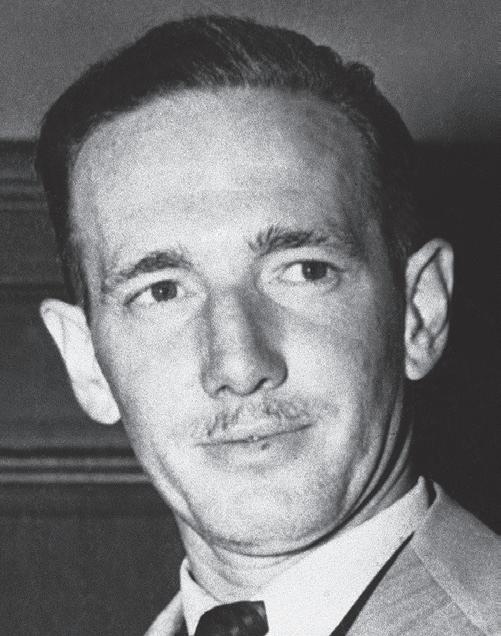
The U.S. government outlawed the Bund in December 1941, when the U.S. entered World War II.
To Nazi Germany, the German American Bund had become an embarrassment. Germany then encouraged Nazis and Nazi sympathizers in the United States to support the America First Committee, which began in 1940 as an isolationist movement to keep the United States out of the war in Europe.
It started as a movement of college students and grew into a grassroots mobilization of Americans who recalled the horrors that American boys faced in World War I. America First would become infiltrated by Nazis and Nazi supporters.
Instructions from the Nazi government to its America First operatives: stick to the single message of keep America out of the war. America First membership peaked at about 800,000.
Its most famous spokesperson was American aviation hero Charles Lindbergh. His speech in Des Moines, Iowa on Sept. 11, 1941, went "off message" when he said, "The three most important groups who have been pressing this country toward war are the British, the Jewish, and the Roosevelt administration."
Lindbergh added that he could not condone "the persecution of the Jewish race in Germany," but that the Jews, "instead of agitating for war, should be opposing it in every way, for they will be among the first to feel its consequences."
Daytonians read about it in the Daily News and the Herald
Eight days later, on Sept. 19, 1941, U.S. Sen. Gerald Nye of North Dakota spoke to 2,500 people at Memorial Hall in Dayton as part of a meeting of the local committee of the America First movement.
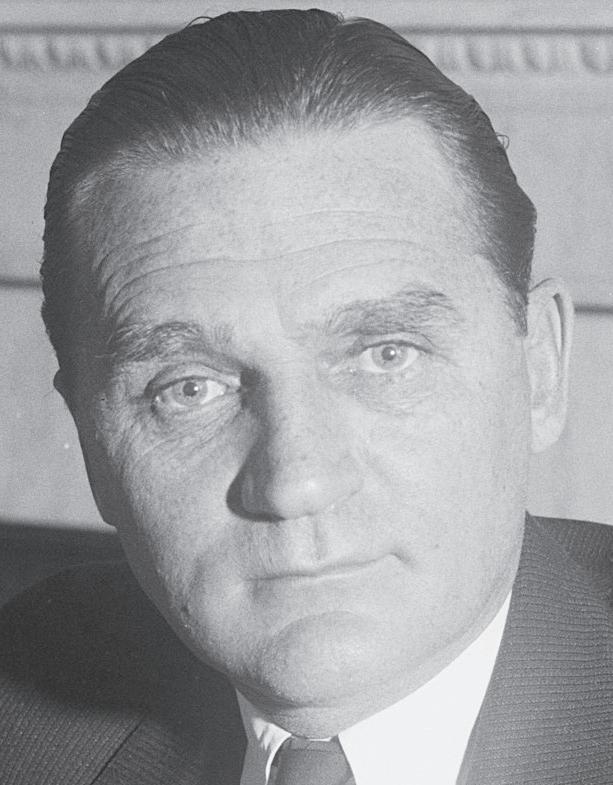
"Local members of the CIO (Congress of Industrial Organizations) formed an 18-man picket line in front of the hall before and after the meeting," the Journal Herald reported. "The signs carried anti-Nazi and anti-America First statements."
The most applause of the evening, lasting for two or three minutes, The Journal Herald reported, was given to the name of Charles Lindbergh.
In an interview with the Journal Herald after the speech, Nye said he approved of Lindbergh's Des Moines speech a week earlier.
"I agree with Lindbergh that the Jewish people are a large factor in our
'Plans have been discussed for opening a Nazi camp in this vicinity.'Isolationist Sen. Gerald Nye, an America First supporter
movement toward war," Nye said. "This is only natural. The Jewish people have suffered under the Nazi regime and they wish to see the Nazis defeated. For the same reason that the Jewish people in this country are among the leaders of the war movement, the German people in this country are often found in the ranks of those who wish to avoid entanglement."
In his speech, Nye said that neither Lindbergh nor any other leaders of America First were antisemitic.
"The Nazis have not been working secretly in America for nothing in the decade past," a Nov. 10, 1941 Dayton Daily editorial stated about America First.
"There is a relatively small but highly vocal element here which wants Hitler to win the war. To that end, they want America to help, not hinder, Hitler's fight... The sincerely pacific (pacifist) members of America First have found themselves, by their affiliation, helping Hitler. They discover that the leaders with which they find themselves associated in America are heroes in Berlin."
The Japanese attack on Pearl Harbor on Dec. 7, 1941 and the United States' entry into World War II marked the dissolution of the America First Committee.
Dayton attorney Irvin G. Bieser, a leader with Dayton's America First Committee, was quoted in the Dec. 8, 1941 Journal Herald: "The time for argument concerning national policy is passed. Now we must join together and prosecute the cause of the war to its fullest extent."
It was in January 1942 when the Nazis formulated the "Final Solution to the Jewish Question," the mass murder of all Jews in the lands it held. Confirmation to the outside world came on Aug. 29, 1942 from the World Jewish Congress' representative in Switzerland,
who attempted to telegram the information to World Jewish Congress President Rabbi Stephen Wise in New York.
The U.S. State Department intercepted the telegram, calling it a "war rumor." Wise received the message from another source, and in November 1942 informed the press in the United States of the Final Solution and that the Nazi regime had already slaughtered more than 2 million Jews in its grasp.
In Dayton, elements of the big picture came through news reports beginning as early as March 16, 1942, when the Dayton Herald carried a UP report from Stockholm, Sweden that "Neutral sources said today that Germans had started a new systematic mass extermination of Jews in western (white) Russia and the Baltic countries and that the victims included many Jews just deported from Germany, Austria, Czechoslovakia and other occupied countries," including 86,000 Jews in Minsk, tens of thousands in Lithuania and Latvia, and that in Estonia, the entire Jewish population of 4,500 had been killed.
The Herald carried a report on June 26, 1942 distributed from London by its owner, the Chicago Daily News, that "out of the gray horror the Nazis have made of Poland came new evidence today of the systematic extermination of the Jewish population with the death toll from various causes now estimated at more than 700,000."
"According to a special report sent through secret channels to representatives of the Polish national council here, disease and starvation are allowed to operate to the fullest extent. Where these means are considered insufficient or slow, massacre tactics often
are substituted, these sources say.
"Polish sources insist the Nazis are using portable gas chambers in some sections...one such instance was reported at the village of Chelmno, near Lowicz, where Jews were crowded 90 at a time into the chamber."
American Jewish organizations appealed to Jews across the world to observe Dec. 2, 1942 as a day of mourning and prayer for the victims of Hitlerism, the Dayton Daily News reported.
"The appeal pointed out that 2 million Jews already had died and that 5 million others are threatened with extermination under a new Hitler order...The organizations pointed out that the 'greatest calamity in Jewish history' had occurred and that millions of Jews now 'live in the shadow of impending doom.'"
By the end of the war in Europe, more than 6 million Jews would be exterminated at the hands of the Nazis and their accomplices.
At Passover 1943, the Dayton Herald's April 22 editorial read, "In time to come the people of a later generation will read with greater horror than we can now anticipate the bloody record of our age, on which the darkest blot will be the wholesale extermination of the Jews in Nazi-conquered lands. This slaughter has been largely overshadowed by the clash of armies in global war, but it will not be overlooked when the history of our era is recorded. For it was with the massacre of the Jews that Adolf Hitler began his assault on our civilization."
Marshall Weiss is editor and publisher of The Dayton Jewish Observer and project director of Miami Valley Jewish Genealogy & History.

In Dayton, elements of the big picture came through news reports beginning as early as March 16, 1942
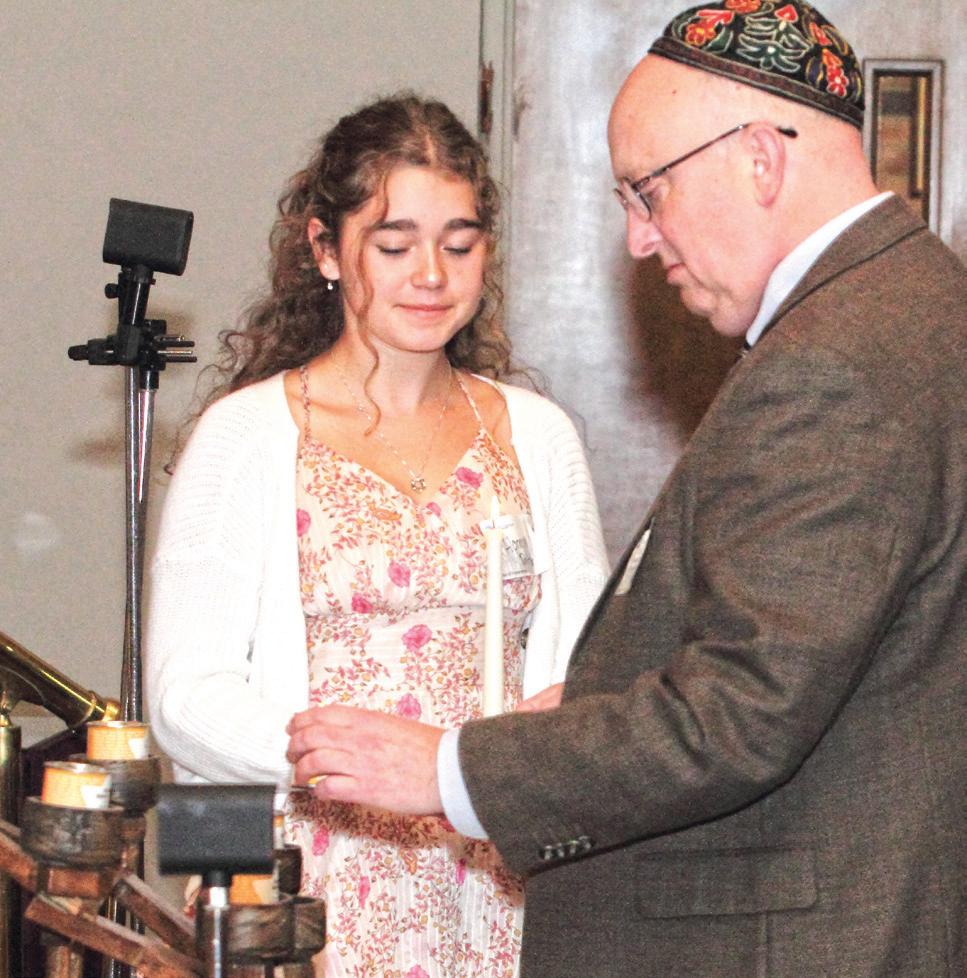
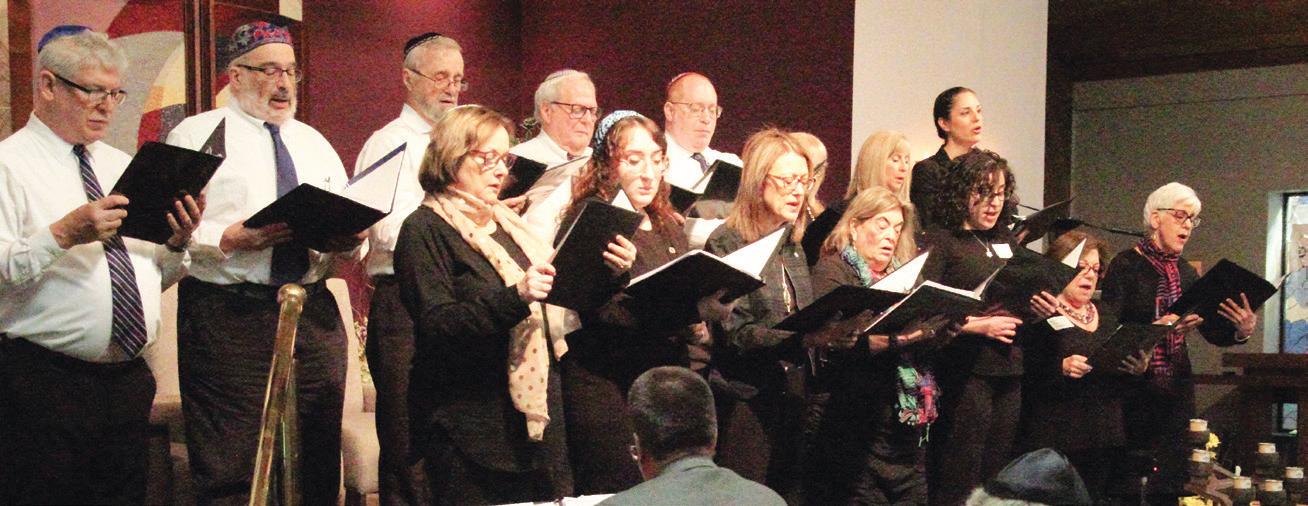
Holocaust survivors shared their stories as part of the commemoration (L to R): Ira Segalewitz, Henry Guggenheimer, Felix Garfunkel, Renate Frydman, Robert Kahn, 2nd-generation survivor and Yom Hashoah Committee Member Mark Gordon, and Larry Katz at the podium.

the observance.

Division I Art, Grades 5-8
1st Place: Mallory Mitchell, Brookville Intermed.
2nd Place: Noah Levinson, Hillel
3rd Place: Malaya Maldonado, St. Anthony Catholic
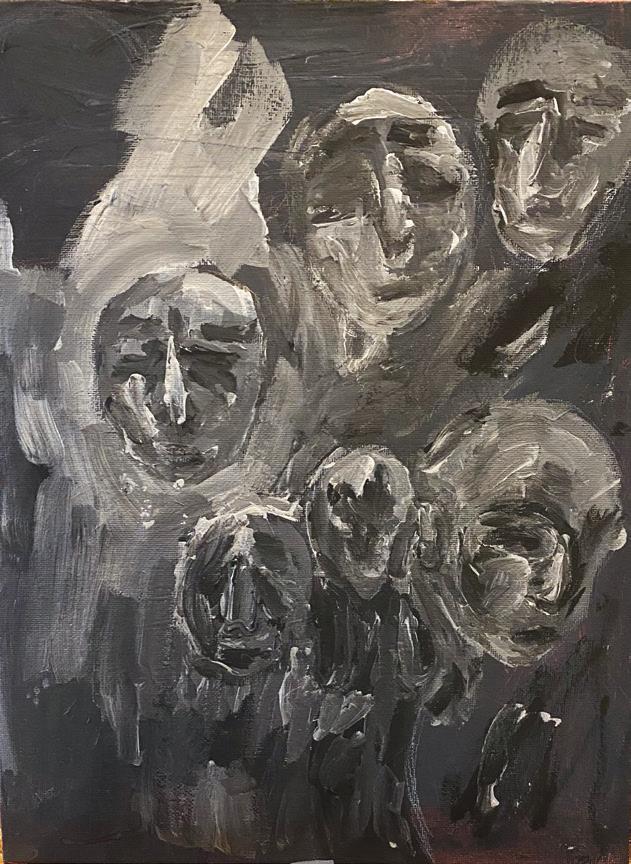
Hon. Men.: Megan Luebke, Brookville Intermed.
Division II Art, Grades 9-12
1st Place: Ocean Brown, Stivers
2nd Place: Olivia Neises, Stivers
3rd Place: Vina Osborn, Stivers
Hon. Men.: Acelyn Troyer, Stivers
Hon. Men.: Alexia Nalls, Stivers
Division I Poetry/Prose, Grades 5-8
1st Place: Tommy Coplin, Hastings
2nd Place: Owen Dinsmore, Hillel
3rd Place: Noah Levinson, Hillel
Hon. Men.: Evan Waugh, Northmont
Hon. Men.: Evan Robinson, Northmont
Division II Poetry/Prose, Grades 9-12
1st Place: Seth Trent, Stivers
2nd Place: Sophie Behnke, Stivers
3rd Place: Seth Gibson, Stivers
Hon. Men.: Promiss McCoy, Stivers
Children and parents work on a tzedakah box craft to learn about acts of lovingkindness as part of the PJ Library and PJ Our Way program concurrent with the Yom Hashoah Observance. Before the observance, Holocaust educator Renate Frydman met with area teenagers for
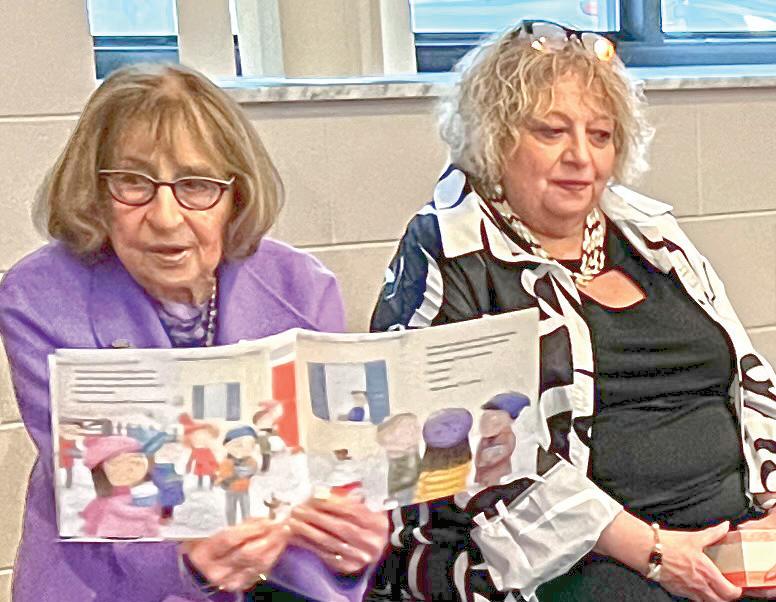
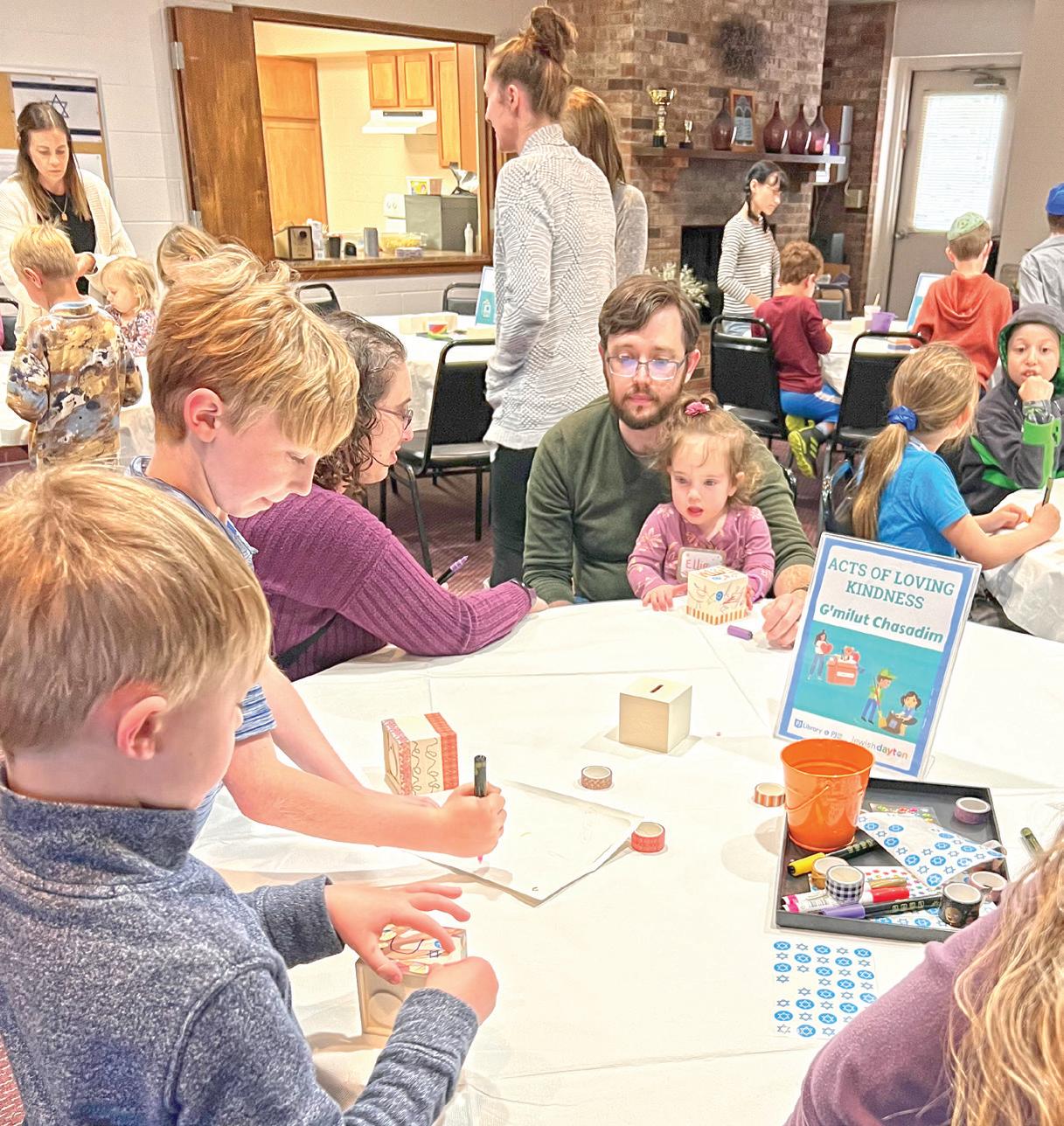
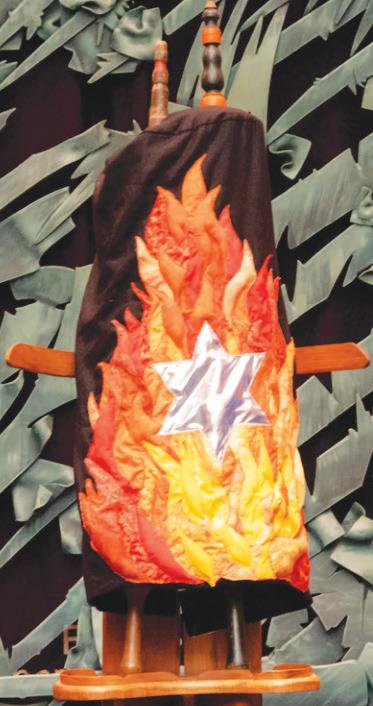
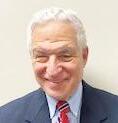
On April 23, The TempleTifereth Israel in Beachwood brought together 19 Czech Torah scrolls as part of a reunion and celebration of their survival of the Holocaust, their rediscovery and repair in 1963 by the Memorial Scrolls Trust, and how they’re now cared for by congregations and organizations all around the world.
As part of the program, scrolls were gathered from entities throughout Ohio, Michigan, and Pennsylvania.
Participating communities included The Temple Congregation Shomer Emunim in Sylvania near Toledo, Knesseth Israel Temple in Wooster, Temple Israel in Dayton, Temple Israel in Columbus, Temple El-Emeth in Youngstown, The TempleTifereth Israel in Beachwood, Temple Israel Ner Tamid in Mayfield Heights, B’nai Jeshurun Congregation in Pepper Pike, Anshe Chesed Fairmount Temple in Beachwood, Gross Schechter Day School in Pepper Pike, Temple Beth Israel-Shaare Zedek in Lima,
Suburban Temple-Kol Ami in Beachwood, Jewish Senior Life-Prentis Apartments in Oak Park, Mich., Congregation Beth Shalom in Pittsburgh, and Temple Sholom in Blue Ash near Cincinnati.
The Czech Torah at Dayton's Temple Israel
Each Torah scroll was paraded through the sanctuary before being displayed together at the front of the room, with each scroll being called to the bima (stage) by its community name with a representative from its custodial organization. Each representative then read a line from The Temple’s scroll as part of the program with the help of The Temple-Tifereth Israel clergy Rabbi Jonathan Cohen and Cantor Kathryn Wolfe Sebo, who also sang a song with The Temple’s orphan scroll.
Created by The Temple member Ed Magiste, with the help of Memorial Scrolls Trust volunteer and Fairmount Temple member Susan Ringel, the program also featured speeches from Cleveland State University Prof. Mark Cole and Memorial Scrolls Trust trustee Lois Roman.
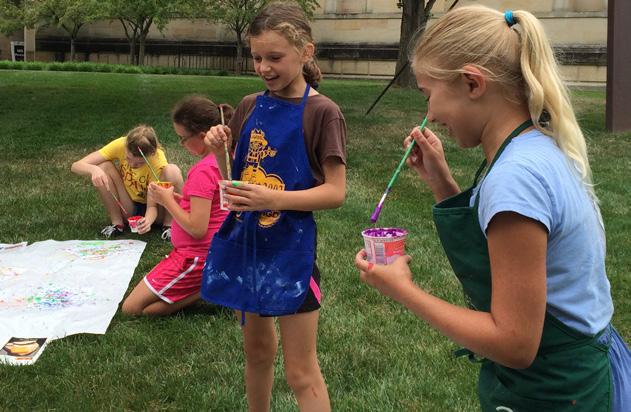

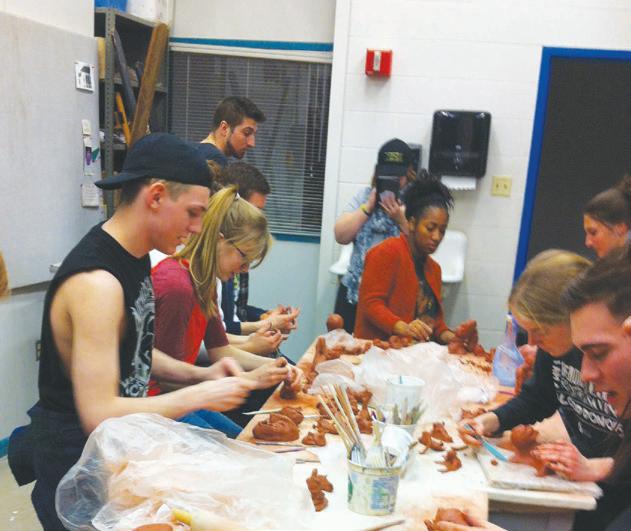
Roman described these efforts, and that of the work MST does, as “four miracles,” starting with their collection and storage, followed by the fact only one World War II bomb landed in Prague leaving the synagogue they were housed in relatively untouched even though Czech Jewry was “decimated,” that they were rediscovered and sold to a London investor, and then landed in the hands of what would become Memorial Scrolls Trust.
In 1942, the Nazi officials in charge of the Czech “Protectorate” created the Central Jewish Museum in Prague, and shipped over 10,000 ritual objects from liquidated Jewish communities and synagogues to the museum, including ceremonial objects, books, pictures and embroidered vestments.
The museum curators, who were later taken to Terezin and Auschwitz, cataloged the collection. As part of that cataloging process, approximately 1,800 Torah scrolls were taken to the museum with the hope they’d be returned to their communities.
After World War II, those scrolls were taken to the abandoned Michle Synagogue in suburban Prague. They stayed there, in disuse in the 18thcentury stone building.
Through the effort of what
is now MST, 1,564 scrolls were packed and sent to London to be restored, and in 1964, the Westminster Synagogue was selected as trustee and the Memorial Scrolls Committee was established to distribute the repaired scrolls on permanent loan to communities around the world.
Each scroll is numbered according to its listing with Memorial Scrolls Trust, and is also labeled with the community it came from, if that information is available. There are 1,400 scrolls in circulation, with the collection dating from the 1200s to the early 20th century.
“All of the scrolls you see here today have this shared legacy, but each has a unique back story, written for a specific Jewish community in
a small town or a large city that was lost in the Shoah,” she said. “Today is not just a reunion of Torah scrolls – it is a commemoration of dozens of lost Jewish communities that were vibrant and active before the Holocaust.”
Editor's note: At the reunion, Rabbi Karen Bodney-Halasz represented Dayton's Temple Israel with its Czech Torah, believed to be from the town of Ceske Budejovice and written in the middle of the 19th-century. The day of the reunion, Temple Beth Or in Washington Township hosted the Dayton Area Yom Hashoah Observance. Its Czech Torah — from Klatovy, a town in southwest Bohemia — remained in the congregation's holy ark for the commemoration.
U.S. Rep. Mike Turner (R-Ohio, 10), chairman of the House Intelligence Committee, led a bipartisan congressional group of House Intelligence Committee members that met with Israeli Prime Minister Benjamin Netanyahu in Israel on May 4.

“Iran is 50 North Koreas. It is not merely a neighborhood bully like the dynasty that rules North Korea,” Netanyahu told the visiting lawmakers, according to the prime minister’s office. “This is an ideological force that views us, Israel, as the small Satan, and views you as the Great Satan.”
Netanyahu warned that a nuclear Iran, which could threaten and blackmail every U.S. city, would amount to “a changing of history,” per Netanyahu’s office.
Last year, Turner urged U.S. President Joe Biden to support the Abraham Accords.
“The geopolitical and economic impacts of the Abraham Accords have created waves of change towards peace and progress throughout the Middle East and around the world,” Turner wrote at the time.
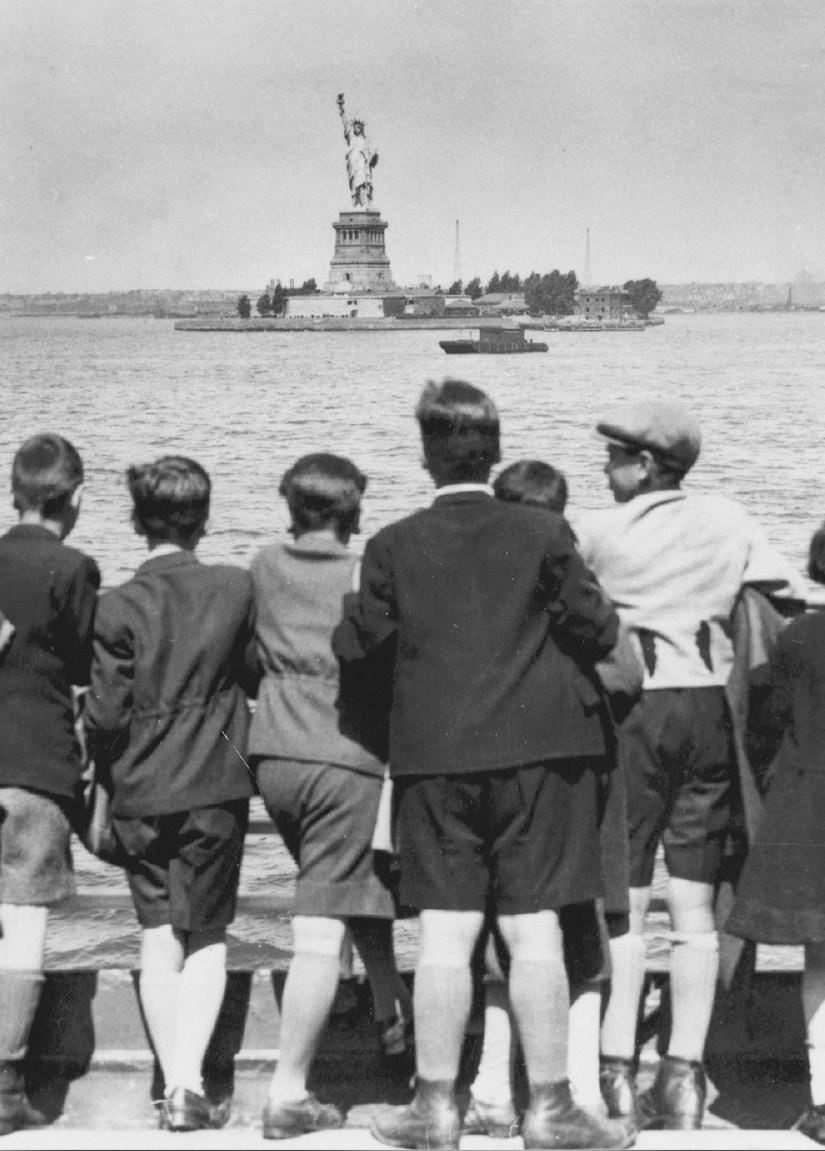
Turner has also criticized the “deeply flawed” Iran deal, under former President Barack Obama.
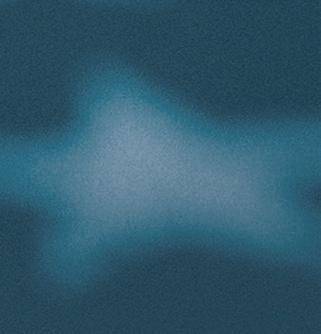
According to Turner, the delegation of 11 members of Congress — six Republicans and five Democrats — met with directors of the Mossad and Shin Bet "to discuss the regional security concerns of a nuclear Iran, operations of Iranian-backed terror groups, the deepening Russian-Assad alliance in Syria, and China’s attempts to integrate further into the Middle East."

A key objective of the trip, Turner wrote in an opinion piece distributed by Ohio Jewish Communities
New Angel
Stanley Frankowitz
Renewing Angels
Scott & Brenda Meadow
Double Chai
Patty O'Connell
Cherie Rosenstein
Diane & Ralph Williams
Subscribers


















Harriet & William Fenberg
Kevin Freckman
Michael Precker
Current Observer
Champion+
Andrea Scher Rabiner
Current Observer

Champions
William Marwil
Howard Michaels
Milton Nathan
on May 22, was "to build relationships between our committee...and the intelligence services of U.S. allies in the region."
"In our meeting at the Knesset with members of the Defense and Foreign Affairs Committee, it was a discussion on how the U.S. and Israel can further support Ukraine in the face of its greatest aggressor, Russia, that demonstrated the depths of our nations’ shared values and unwavering support for democracy," Turner wrote.
Those on the weeklong trip also visited Jordan and Egypt to meet with heads of state and their intelligence services.
— JNS.org and The Dayton Jewish Observer
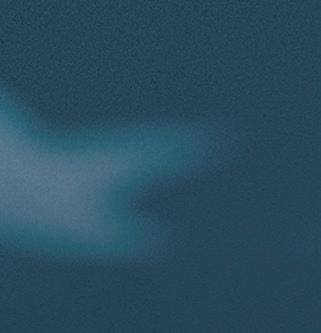








Susan & Jonas Gruenberg
Neil & Gina Kahn
Drs. Renata & Perry Lubens
Marvin & Susan Mason
Gary Pacernick
Bernard Rabinowitz
Brenda Rinzler
Greg Schreck
In memory of Dorothy Cherny
Shane by Stanley J. Cherny
Zerla Stayman
Steve & Shara Taylor
Temple Anshe Emeth
Current Angels
Jeffrey Abrahams
Elaine Abramson
Ken Baker, K.W. Baker & Assoc., LLC
Anita Barrett & Family
Skip & Ann Becker
Sylvia Blum
Frieda Blum
Buck Run Doors & Hardware Inc.
Natalie R. Cohn
Betty Crouse
Cathy Gardner
Felix Garfunkel
Mrs. Jack Goldberg
Kim & Shelley Goldenberg
Lynn & David Goldenberg
Debby & Bob Goldenberg
Rochelle & Michael Goldstein
John Gower
Carol Graff
Art & Joan Greenfield
Harold & Melissa Guadalupe
Dr. & Mrs. Stephen Harlan
Robert & Vicky Heuman
Linda & Steve Horenstein
Joan Isaacson
Rachel Jacobs
Michael Jaffe
Linda Jarvis
David & Susan Joffe
Dennis Kahn &
Linda Ohlmann Kahn
Susan & Stanley Katz
Allan & Linda Katz
Don & Harriet Klass
Debbie & Norbert Klopsch
Cantor & Mrs. Jerome Kopmar
Edye Leuin
Beverly A. Louis
Suzi & Jeff Mikutis
Kristen Mitchem
Irvin & Gayle Moscowitz
Eleanor Must
Myrna Nelson
In honor of Natalie M. Davis
RN NICU Neonatal, Cedar Sinai Hospital, L.A., grandaughter of Martin Nizny
Phil Office
Sharyn Reger
Susan & Nathaniel Ritter
Dr. & Mrs. Gerald Rubin
Sumner Saeks
Burton & Alice Saidel
Barbara Sanderow
Linda & Joel Shapiro
Diane Lieberman Slovin
Jeff & Cathy Startzman
Myron Stayman
Maggie Stein
Marc & Maureen Sternberg
Col. Jeffrey Thau, USAF, (Ret.) & Rina Thau
Bob & Suzanne Thum
Louis & Doris Ullman
Current Guardian Angels


Dr. Douglas & Mrs. Bethany Einstein
Tara & Adam Feiner
Marni Flagel
Bella Freeman
Elaine & John Gaglione
Scot & Linda Denmark
Susan Dlott
Howard & Sue Ducker
Esther & DeNeal Feldman
Bruce & Debbie Feldman
Lynn Foster
Cindy Pretekin & Jeff Froelich
Todd & Gabriele Leventhal
Sarah Moore Leventhal
Laurie & Eddie Leventhal
Meredith Moss Levinson
Norm & Kay Lewis
Ellie Lewis
Judy Lipton
The Waldman Family
Judith Weber
Donald & Caryl Weckstein
Peter & Joan Wells
Michael & Karen Weprin
Ronald Bernard & Judy Woll
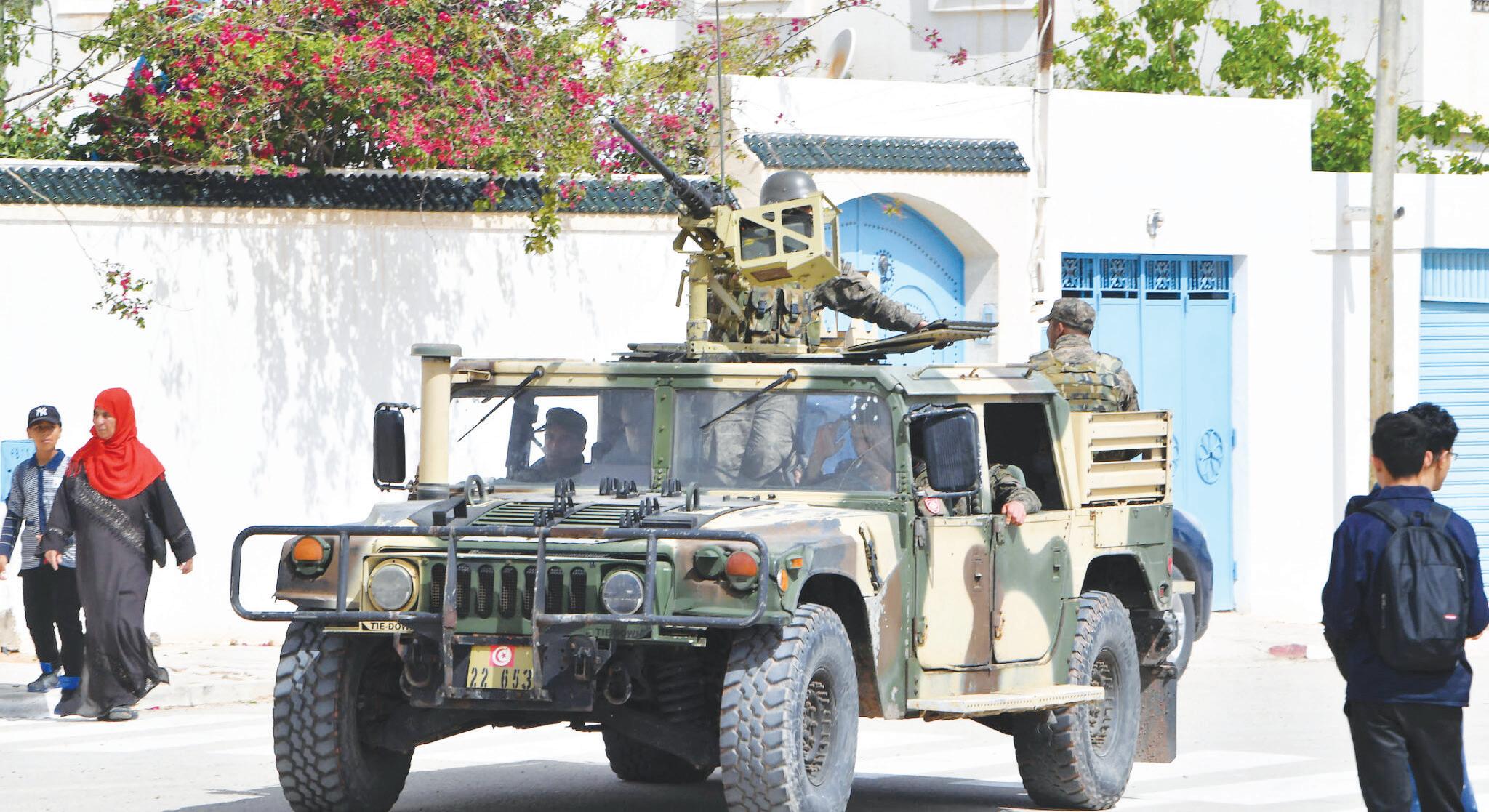 By Ben Sales, JTA
By Ben Sales, JTA
When a security official opened fire outside a Tunisian synagogue during a pilgrimage the night of May 9, killing two Jewish pilgrims and two security guards, he shattered what was meant to be a day of sacred celebration for the country’s Jews and their compatriots around the world.
The shooting at the synagogue in Djerba, an island in Tunisia, is the deadliest attack on the holy site in more than 20 years. It brought tragedy to a public celebration of Jewish life at Africa’s oldest Jewish house of worship.
Here’s an introduction to the Jews of Tunisia, the annual pilgrimage to Djerba, and how the community is reacting to the attack.
Jews have lived in Tunisia since ancient times. Archaeological evidence has shown that there was a Jewish community in the area that once surrounded the Roman city of Carthage, and Jewish life continued to exist there as the territory was conquered by Muslim empires, France, and Nazi Germany. During the Holocaust, the Nazis seized Jewish property, put thousands of Jews in forced labor camps, and persecuted them in other ways.
Tunisia gained independence in 1956. During and after Israel’s victory in the Six-Day War in 1967, Jews endured an increasingly hostile environment, including antisemitic riots and the torching of a synagogue in Tunis.
In the years that followed, the vast majority of the coun-



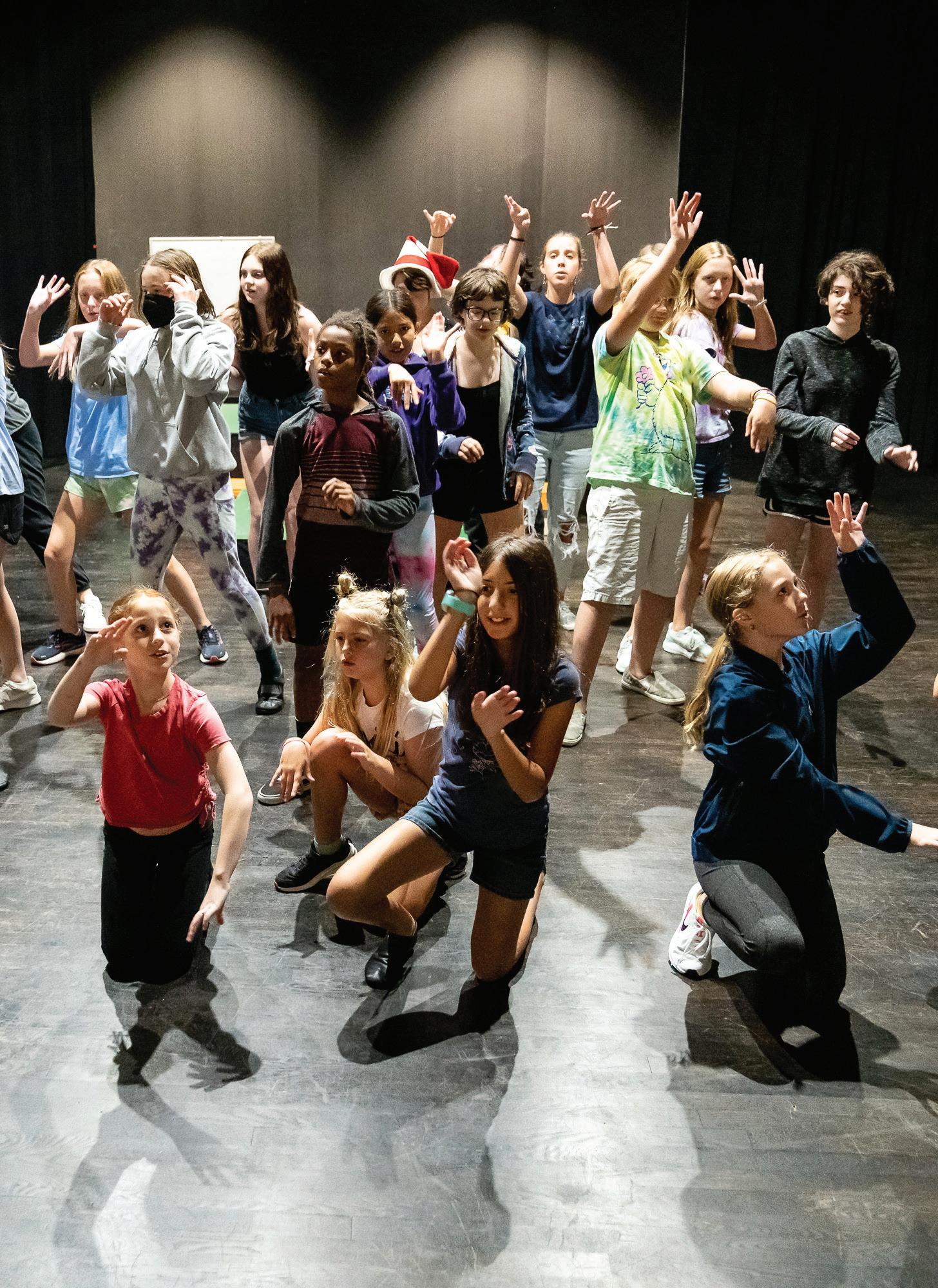
try’s Jews emigrated, shrinking a Jewish population that once may have numbered more than 100,000 to around 1,000-1,500 today.
What is the Djerba synagogue, and why does it host an annual pilgrimage?

Tradition has it that the synagogue on the island of Djerba was founded at the time of the destruction of the First or Second Jewish Temple in Jerusalem in either 586 B.C.E. or 70 C.E., and contains a stone from the temple. Today the synagogue, which was rebuilt in the 19th century, has rows of benches, brilliant whiteand-blue arches, as well as
an outdoor arcade and other resplendent design features. The synagogue’s name, El Ghriba, means “the isolated one” and comes from another legend. According to A History of Jewish-Muslim Relations, published in 2013, local Jews long ago found the body of a girl who lived and died alone — but whose body was miraculously preserved. That incident was also the inspiration for the annual pilgrimage on the holiday of Lag B’Omer, which takes place each spring, a little more than a month after the beginning of Passover. Pilgrims who come to the synagogue pray, dance, Continued on Page 31



— Gayle & Irvin Moscowitz with their parents, Milton & Harriet Moscowitz & Edward & Frieda Weisbrod
Beforea vacation to New Orleans, Irvin Moscowitz researched Ancestry.com to find the cemetery where his great-grandparents were buried. “I have pictures and heard stories about my family, but standing by their graves from 1840 made me feel like I was right there with them. That’s when I knew we needed to maintain our cemeteries for future generations.”
Closer to home, Irvin and his wife, Gayle, visit their parents and his grandparents at Beth Jacob’s cemetery in Dayton. They contributed to the Jewish Cemeteries of Greater Dayton campaign to “guarantee that we can take care of the people who took care of us.”

As a Kohen, Irvin kept clear of cemeteries for a long time. “I’ve made peace with the ways in which I could get close to the people that mean the most to me,” he said. “I figured out a way not to trample on my heritage but to fulfill my need to be respectful and honor my family. When I walk through a wellkept cemetery, I get a feeling that I’m actually close to someone who’s no longer here. I’ll put a stone on the headstone to let them know I’m there. It always brings back a lot of warm memories.”
Jewish Cemeteries of Greater Dayton is an endowment organization created to maintain our three Jewish cemeteries in perpetuity. Please join us as we strive to maintain the sanctity, care, and integrity of these sacred burial grounds.
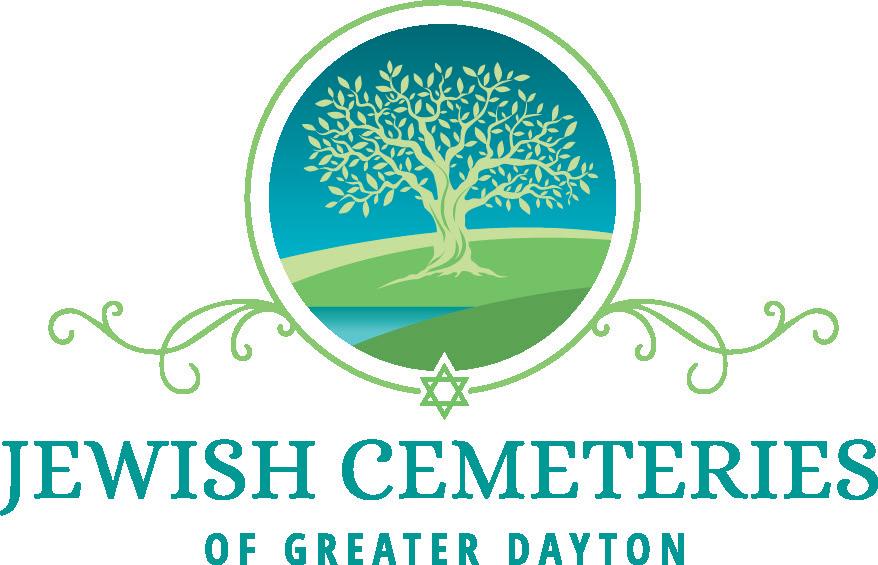
For a decade starting in 2002, Jennifer Laszlo Mizrahi devoted herself to pro-Israel advocacy. After that, the Jewish philanthropist and activist from Annapolis, Md. went all in to fight for disability rights, working in the field for the next decade. Now, Mizrahi is focused on climate change.

“Let me put it this way: In 2021, we donated to one climate organization, and in 2022, we donated to 17 of them,” Mizrahi said, referring to the small charity fund she runs with her husband, tech entrepreneur Victor Mizrahi. This year, the couple made their largest climate-related donation yet, sending a group of nine climate reporters to Israel to meet tech startups working on ways to reduce greenhouse gas emissions. Mizrahi and her husband have also begun commercially investing in such startups.
“I was hoping other people would solve it,” she said. “But the pace of the change is not nearly meeting the demand at the moment. I felt that even though I don’t know the subject, I’m just going to have to do it because I have kids and I don’t want this world to fall apart.”
Climate change has long ranked at or near the top of a list of issues concerning Jews in the United States, according to multiple surveys, and Jews have been heavily involved in the wider climate movement.
But until recently, the issue had a marginal place on the agendas of Jewish communal organizations, which neglected climate even as the subject took on importance in the activism and policies of other religious communities and in the larger philanthropic world.
Mizrahi’s newfound emphasis on climate is an early example of a larger shift that is underway in Jewish philanthropy, a multibillion-dollar world made up of thousands of individual donors, charitable foundations and nonprofit organizations.
“It’s the beginning of what will become a more widespread focus among Jewish groups,” said Rabbi Jennie Rosenn, the founder and CEO of the Jewish climate group Dayenu. “We’re seeing an awakening to this as a profoundly Jewish issue, and awakening to the role that the Jewish community has to play in addressing the climate crisis.”
Scientists say that decisions regarding carbon emissions made in the next few years will affect life on Earth for thousands of years to come. The most recent warning came in March, when leading global experts with the Intergovernmental Panel on Climate Change published a new report, stating that “there is a rapidly closing window of opportunity to secure a liveable and sustainable future for all.”
The coastal United States is vulnerable to extreme storms, sea-level rise, severe heat and other weather disruptions — a situation dramatized in the recent Apple television series Extrapolations, in which a rabbi contends with rising sea waters infiltrating his Florida synagogue. Meanwhile, Israel is experiencing a slew of impacts from drought and floods to security threats tied regional climate-related instability. The last few months have seen a flurry of new initiatives aimed at both greening Jewish institutions and directing collective action on climate.
In December, for example, Rosenn’s group published a report calculating that endowments of Jewish organizations, from family foundations to local Jewish Federations, are invested in the fossil fuel industry to the tune of at least $3 billion. The report launched an ongoing campaign called All Our Might that urges Jewish leaders to withdraw these investments and put the money toward clean energy instead.
Meanwhile, many of the most prominent Jewish organizations in the country — representing local Jewish Federations, Hillel chapters, summer camps, com-
‘We owe it to our families to take care of them.’
'We're seeing an awakening to this as a profoundly Jewish issue, and awakening to the role that the Jewish community has to play in addressing the climate crisis.'
munity centers, day schools, and nearly every religious denomination — had already joined a new green coalition organized by another Jewish environmental group and were preparing to unveil pledges to do more in the fight against climate change.
The unveiling of the climate pledges happened in March, under the leadership of Adamah, a nonprofit created through the merger of two stalwarts of Jewish environmentalism, Hazon and the Pearlstone Center.

“Climate and sustainability have not been on the list of priorities for the vast majority of Jewish organizations; this coalition and these climate action plans reflect a deep paradigm shift and culture change moving forward,” Adamah CEO Jakir Manela said at the time.
The commitments made by members of Adamah’s Jewish Climate Leadership Coalition include sending youth leaders to global climate summits, reducing emissions of buildings and vehicles and lobbying the federal government to pass climate policies.
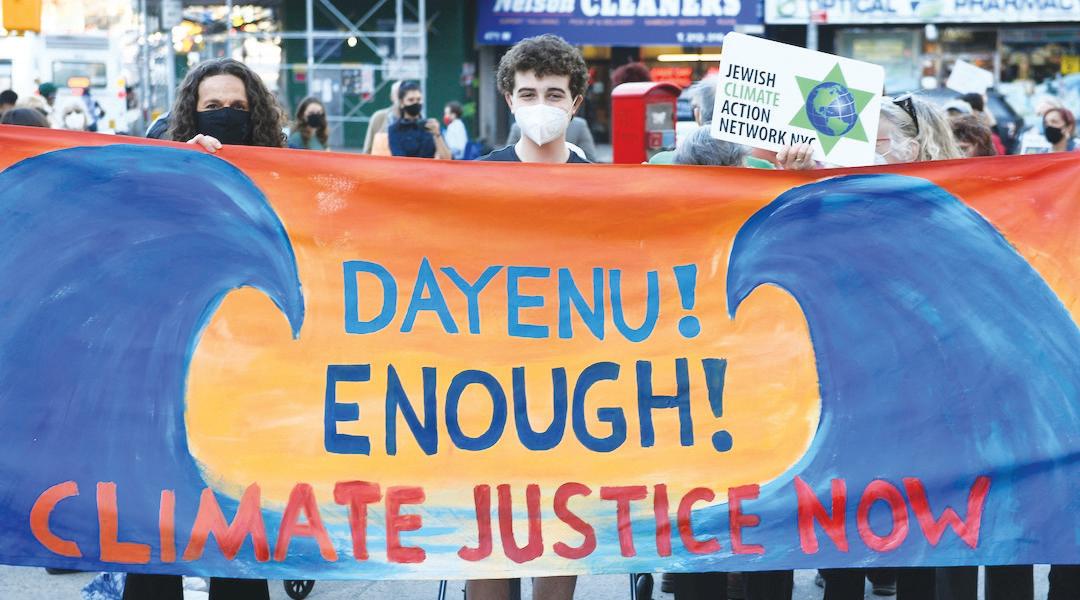

More than 300 congregations and nonprofits have joined. For Earth Day, Adamah announced a million-dollar fund offering interest-free loans and matching grants to Jewish groups for projects to reduce their greenhouse gas emissions.

If any single event can be said to mark the debut of the climate issue as a top Jewish communal priority, it is probably the recent annual conference of the Jewish Funders Network, which took place in March in Phoenix, bringing together thousands of donors and charity executives.
For the gathering’s first event, before the formal opening of the conference, a group of participants went on a field trip to downtown Phoenix to learn about the local effects of the climate crisis.
Far more people signed up than organizers anticipated, and with about 55 passengers, the tour bus chartered for the occasion reached capacity. Mizrahi, who was among the participants, said the trip was helpful as a networking opportunity for like-minded philanthropists.

Rabbi Shmuly Yanklowitz,
the founder of the activist group Arizona Jews for Justice, took the group to a local church where immigration officers drop off asylum seekers, so that conference attendees could hear about how environmental disasters drive cross-border migration. The trip continued with a visit to a downtown homeless encampment known as the Zone, where participants were invited to imagine the challenge of spending the summer season outside, with temperatures sometimes reaching 120 degrees. The conversation eventually turned to the issue of water scarcity across the state.
“We wanted to expose them to how the existential threats posed by climate change are not long term, but are already here,” Yanklowitz said.
“People down in the Zone are dying every summer from heat exhaustion and dehydration.”


Based on his debrief with the group afterward, Yanklowitz feels the trip left an impact on participants.
“I didn’t hear anyone say, ‘Oh, I’m changing my commitments.’ But I did get the sense that climate change was kind of abstract for many people, and that now it really hit home,”
Yanklowitz said.

The rest of the conference featured multiple talks and gatherings dedicated to climate, including on the main stage, and an announcement that Birthright, which offers free trips to Israel for young Jews, was increasing its own climate activism with the help of a new donation.
In an interview, Ellen Bronfman Hauptman and Stephen Bronfman, children of Birthright founder Charles Bronfman, said their $9 million gift is meant to honor their father on the occasion of his 90th
birthday, while also bringing Birthright more in line with the values of a new generation that is environmentally minded.
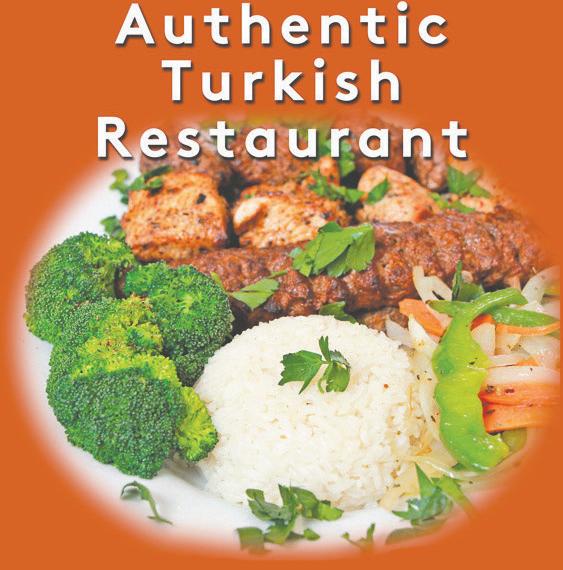
Birthright organizers will use the funding to develop programming focused on climate that could, for example, expose participants to Israel’s clean tech scene.
The money is also intended to help Birthright lower its own carbon footprint, potentially by switching to electric buses or adding more vegetarian meals.
The Bronfmans hope that Birthright’s significant purContinued on Page 14
The Jewish world is, in many ways, still lagging behind the larger climate movement.
Continued from Page 13
chasing power in Israeli tourism will nudge the industry toward more ecologically sustainable practices.
“To me, Birthright is like Walmart — everyone wants to do business with them,” Stephen Bronfman said. “They have the power to dictate terms to their service providers and affect the supply chain.”
The widespread interest in climate mobilization among Jewish groups comes after years in which the issue languished outside the mainstream.

Rosenn, the head of Dayenu, who has attended about 15 conferences of the Jewish Funder Network, noticed a change this year.
“There used to be half a dozen people at a breakfast before the program talking about climate. And it wasn’t even climate, necessarily — it was the environment writ large,” she said.

The Jewish world is, in many ways, still lagging behind the larger climate movement. Divesting endowment funds from the fossil fuel industry, for example, is seen as a bold step among Jewish groups even though at least 1,590 institutions representing nearly $41 trillion in assets have already publicly committed to doing so, according to a website tracking such pledges.
About a third of the groups on the
list are defined as faith-based organizations, but only three are Jewish:
Kolot Chayeinu, a congregation in Park Slope, Brooklyn; the Reform movement’s pension system; and the American Jewish World Service, a global justice group.
Adamah’s own climate plan doesn’t include a pledge to divest but only a promise that it will investigate the option of doing so for its endowment and employee retirement funds. Instead, the plan touts the group’s education and advocacy efforts, and focuses on reducing emissions at its retreat centers.
Adamah’s chief climate officer, Risa Alyson Cooper, acknowledged that Jewish community institutions have been “largely absent” from the divestment movement and said her group regards divestment as one of several required tools for addressing the climate crisis.
She said the Jewish community hit a
milestone when 12 of the 20 founding members of Adamah’s climate coalition said in their climate plans that they would consider amending their financial practices. That was significant, she said, in light of the organization's complex and deliberate governing structures, which can make executing such changes onerous.
“While the Jewish community may have lagged behind in years past, we are catching up quickly,” Cooper said.
Such a shift would mark not only a milestone for Jewish climate activism but also a departure from how the Jewish community has historically done philanthropy, said Rabbi Rachel KahnTroster, executive vice president of the Interfaith Center on Corporate Responsibility.
She said wielding financial holdings for social impact has been a hallmark of advocacy by Christian groups. Last year, the Presbyterian Church (U.S.A.) opted to divest from fossil fuels in light of the climate crisis.
The Jewish community, meanwhile, has tended to act primarily through charitable donations. One of the reasons for the difference, she said, is that the
Jewish community is much less centralized with communal assets spread across many endowments, making the actions of any single group relatively less impactful.
“Adamah had done some really important work to change individual behavior and grow people’s connections to the environment, but the bigger piece of bold collective action to fight the climate crisis was missing,” KahnTroster said. “The overall community is late to respond to the urgency of the problem. But I do think that the work of these organizations is very significant, so I’m excited to see it.”
Kahn-Troster’s historical view is informed by the legacy of her father, Rabbi Lawrence Troster, an environmental activist who had pushed for communal Jewish action on climate, and by the passion for climate justice displayed by her 15-yearold, Liora Pelavin, a member of the Jewish Youth Climate Movement, an arm of Adamah.
“Finding a meaningful Jewish space to do grassroots-level climate advocacy that many young people are demanding has been really important to Liora,” Kahn-Troster said.
The Jewish community is much less centralized, with communal assets spread across many endowments, making the actions of any single group relatively less impactful.
WEDNESDAYS, 12:30PM-3:30PM Canasta
THURSDAYS, 3PM-6PM Mah Jongg
THURSDAY, JUNE 1, 6:30PM-9PM JCC Film Festival Opening NightPersian Lessons
MONDAY, JUNE 5, Camp Shalom Begins

MONDAY, JUNE 5, 7PM-8PM JG&H – Daytonians and the Holocaust: The View From Here
TUESDAY, JUNE 6, 7:15PM-9PM JCC Film Festival - Where Life Begins
THURSDAY, JUNE 8, 7:15PM-9PM JCC Film Festival - Charlotte
TUESDAY, JUNE 13, 7:15PM-9PM JCC Film Festival - Reckonings
THURSDAY, JUNE 15, 7:15PM-9PM JCC Film Festival - Exodus
SUNDAY, JUNE 18, 7:15-9PM JCC Film Festival - Karaoke
TUESDAY, JUNE 20, 10AM-12PM JCC Film Festival - iMordecai
TUESDAY, JUNE 20, 7PM-9:30PM Camp Shalom and JCC at the Dragons
THURSDAY, JUNE 22, 7:15PM-9PM JCC Film Festival - The Man in the Basement
SUNDAY, JUNE 25, 8AM-5PM JFS Drive-Thru Mitzvah Mission
SUNDAY, JUNE 25, 7:15PM-9PM JCC Film Festival - Marrying Myself
TUESDAY, JUNE 27, 7:15PM-9PM JCC Film Festival - America
CONNECT WITH US! CHECK OUT OUR EVENTS. FOR MORE INFORMATION, SEE OUR CALENDAR AT JEWISHDAYTON.ORG.
THURSDAY, JUNE 29, 7:15PM-9PM JCC Film Festival Closing NightFarewell Mr. Haffman
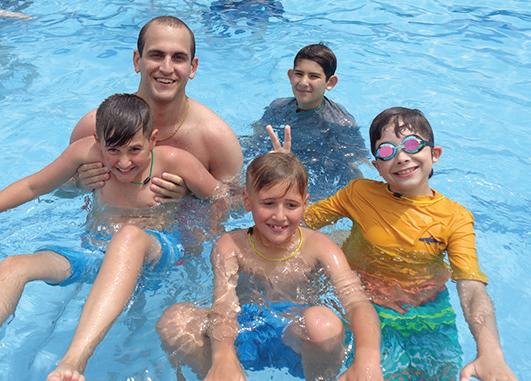

JUNE
SPOTS ARE FILLING UP QUICKLY. REGISTER YOUR CAMPER TODAY!
We offer a variety of specialty camps including tennis, golf, magic, art and theatre. We have field trips planned to fun destinations throughout the Miami Valley. And we’ll celebrate Israel’s 75th birthday!
See jewishdayton.org for more information.
Do you know someone 16 or older who is looking for a meaningful, challenging and FUN summer work experience?
Interested candidates should contact Meryl Hattenbach at mhattenbach@jfgd.net or 937-401-1550.
PERSIAN LESSONS PLAZA THEATRE
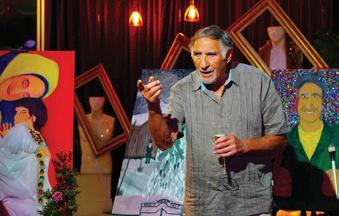

JUNE 1
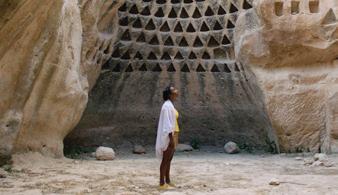

Reception 6:30PM | Film 7:15PM




Occupied France, 1942. Gilles is arrested by SS soldiers alongside other Jews and sent to a camp in Germany. He narrowly avoids sudden execution by swearing to the guards that he is not Jewish, but Persian. This lie temporarily saves him, but Gilles gets assigned a shocking mission. Can he devise a strategy to endure under these conditions? A satisfying thriller of resistance, resilience, and courage in the face of evil. Loosely inspired by a short story from German writer, Wolfgang Kohlhaase, Persian Lessons is an award-winning film that will inspire discussion about ingenuity, memory, and survival.
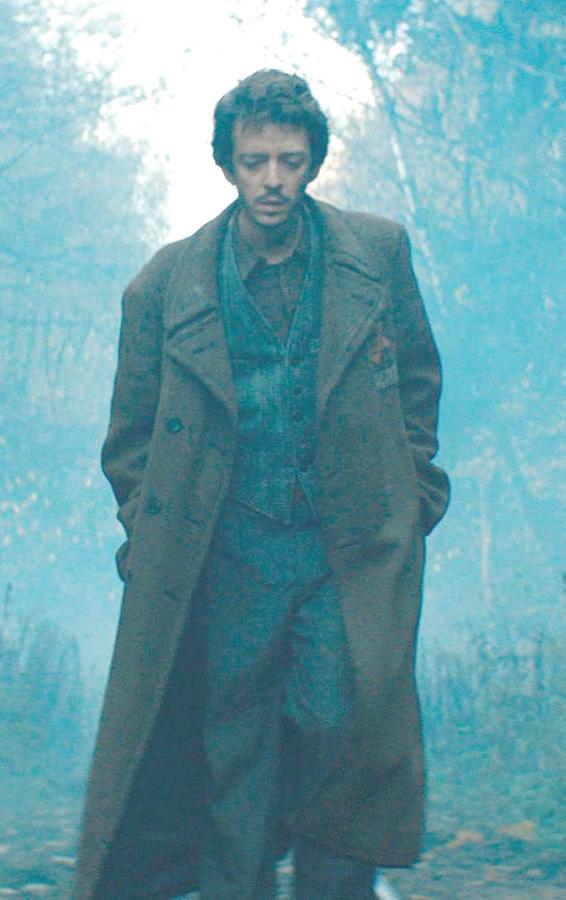
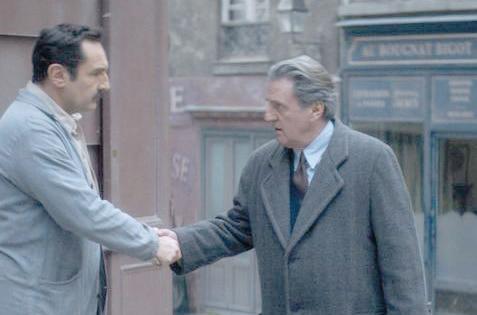

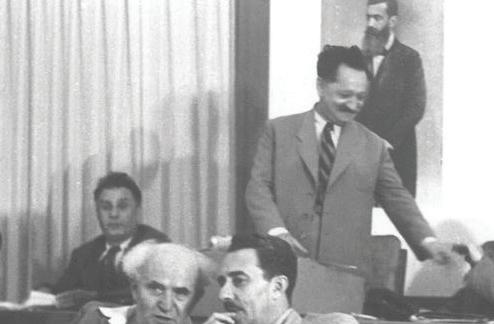
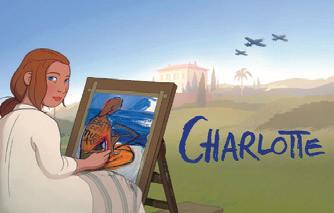

To purchase tickets or a festival pass, visit jewishdayton.org. All ticket and festival pass purchases will be through Eventive. For more information or assistance, contact 937-610-1555.
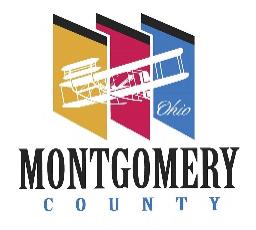


JEWISH FEDERATION of GREATER DAYTON & ITS AGENCIES





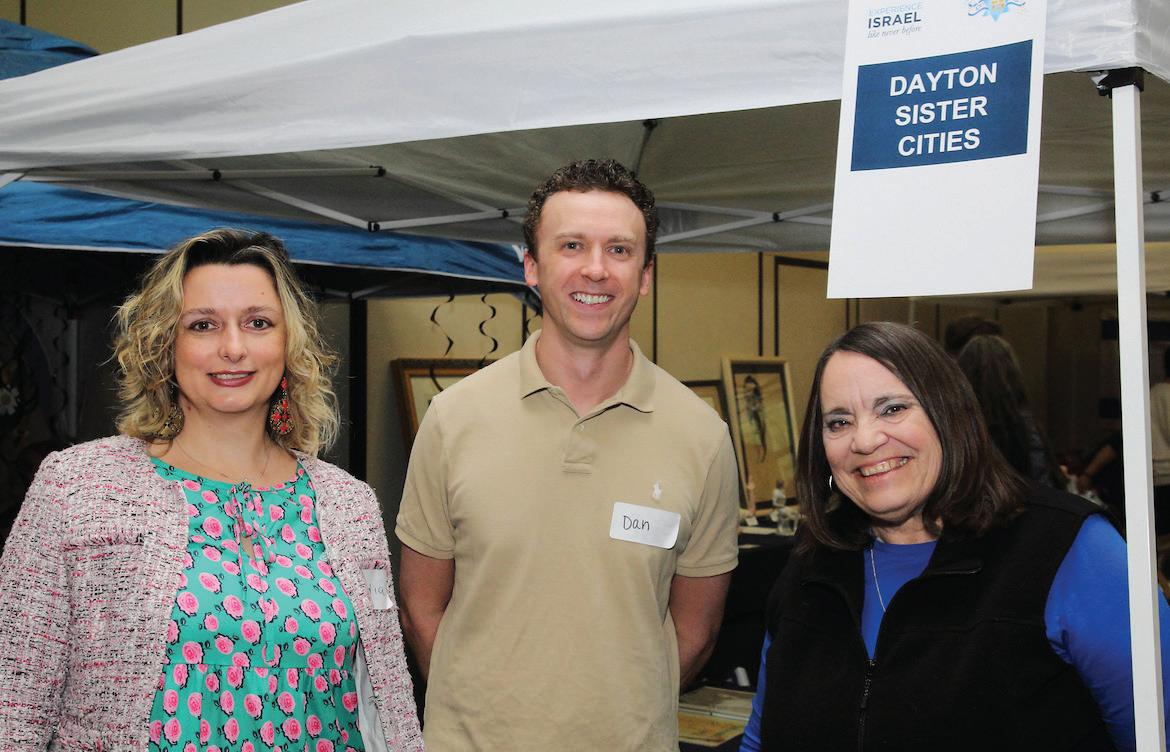
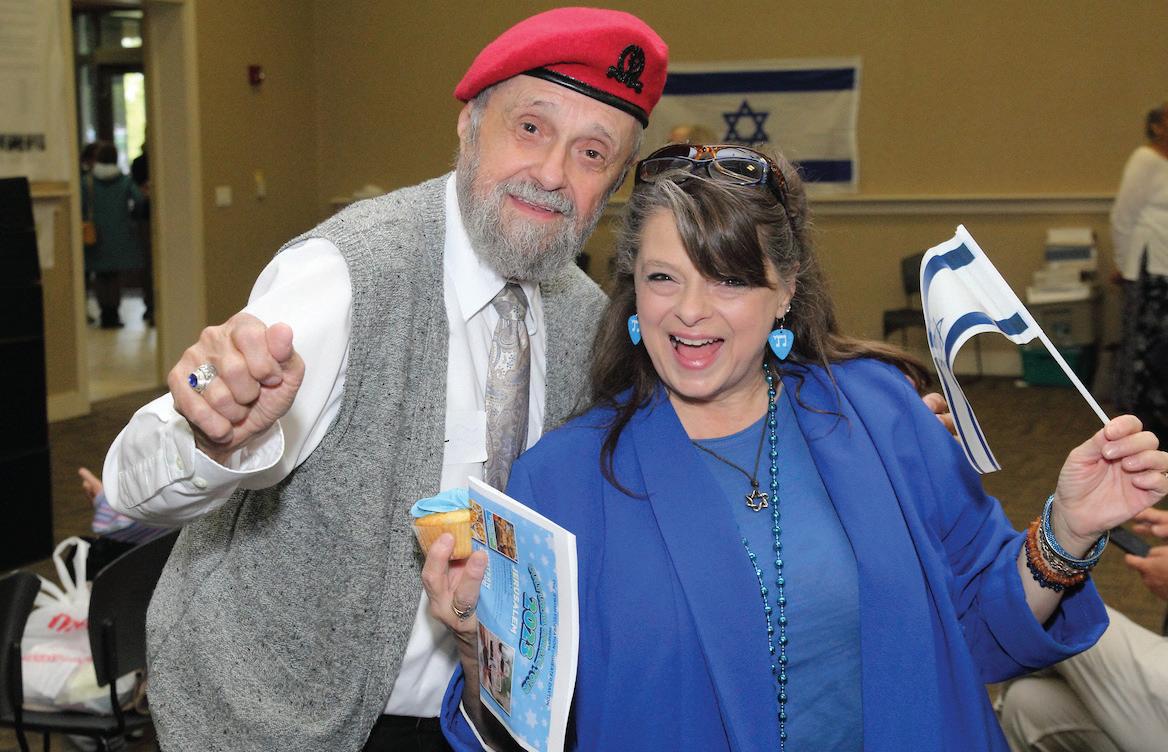
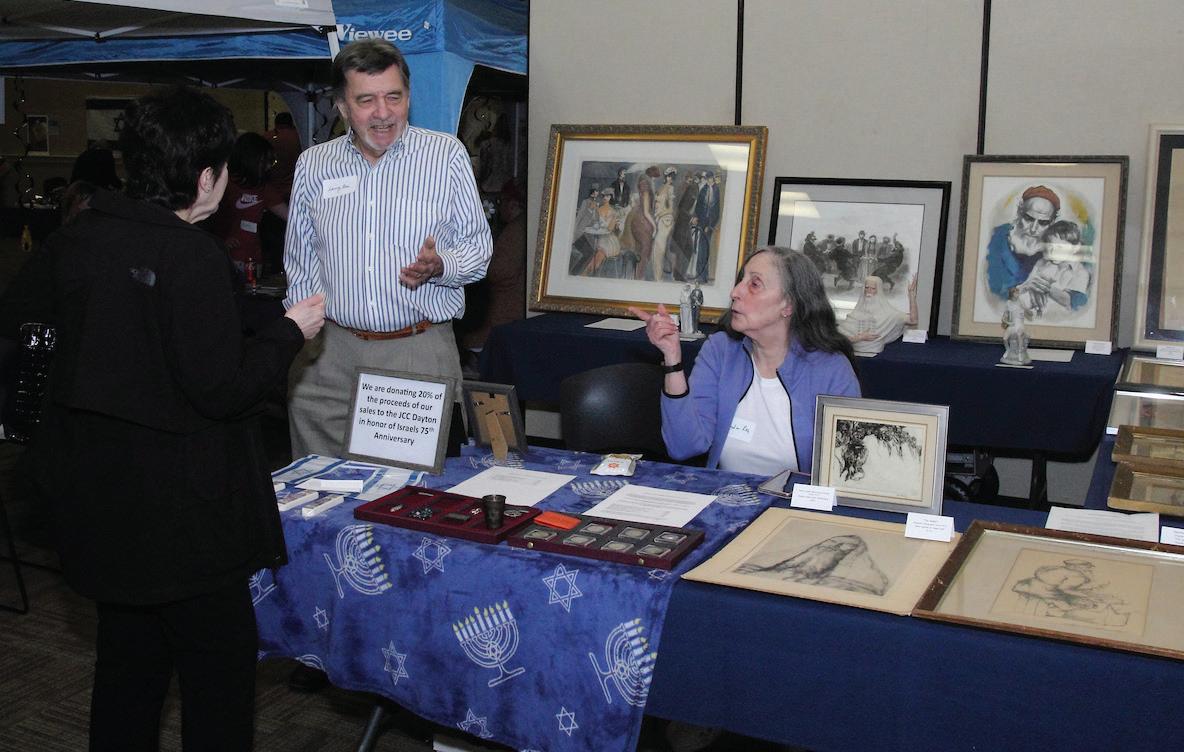

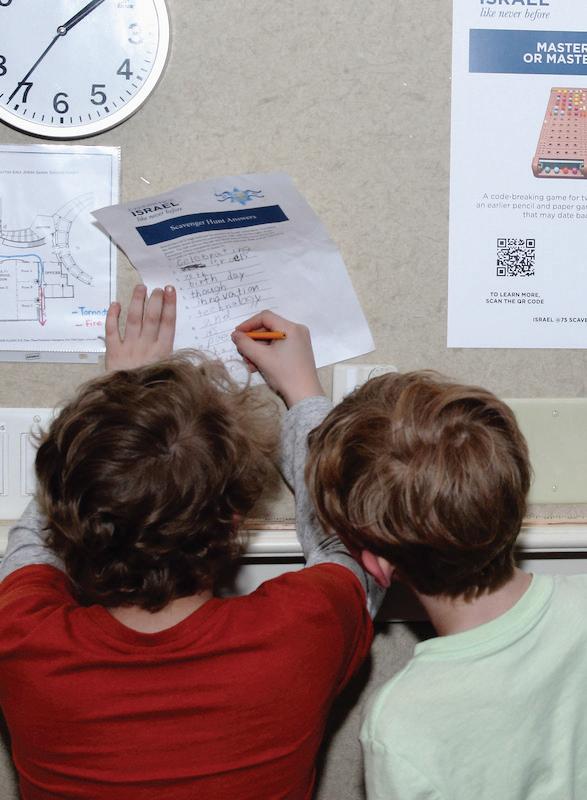
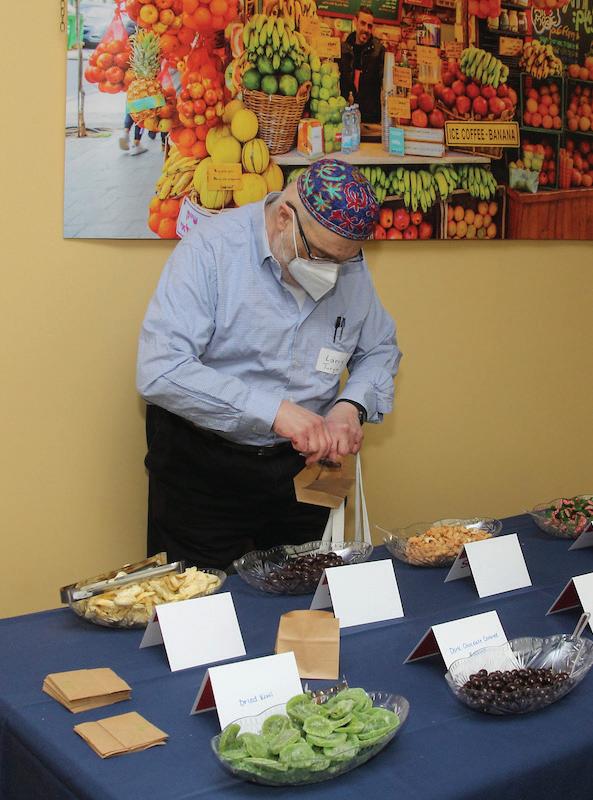

Yom Ha’atzmaut was a day to remember! We had booths filled with innovation, great food and music, a technology scavenger hunt, and an IDF obstacle course. We played board games invented by Israelis and tried our hand at Israeli trivia. It was a fun afternoon with new and old friends. The JCC thanks all its partners and our guests for helping us celebrate Israel’s 75th birthday!
This program was proudly supported by the Israel Engagement Fund: A JCC Association of North America Program Accelerator, and the Dayton Sister City Committee.


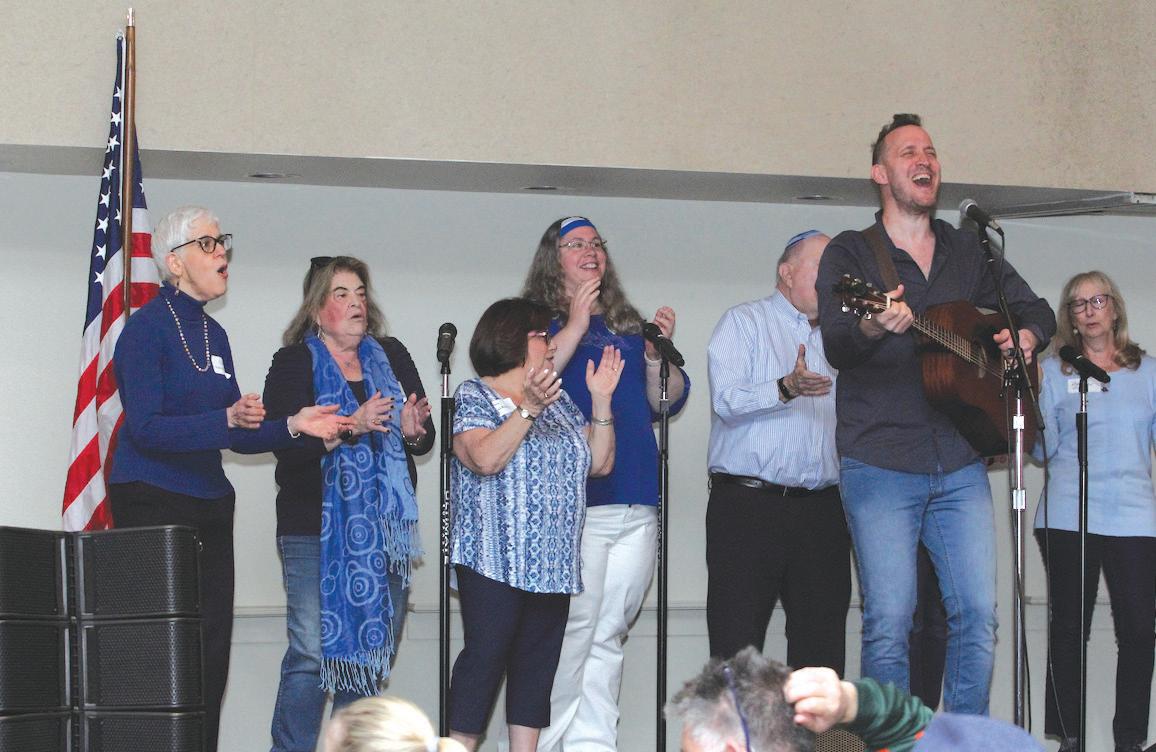

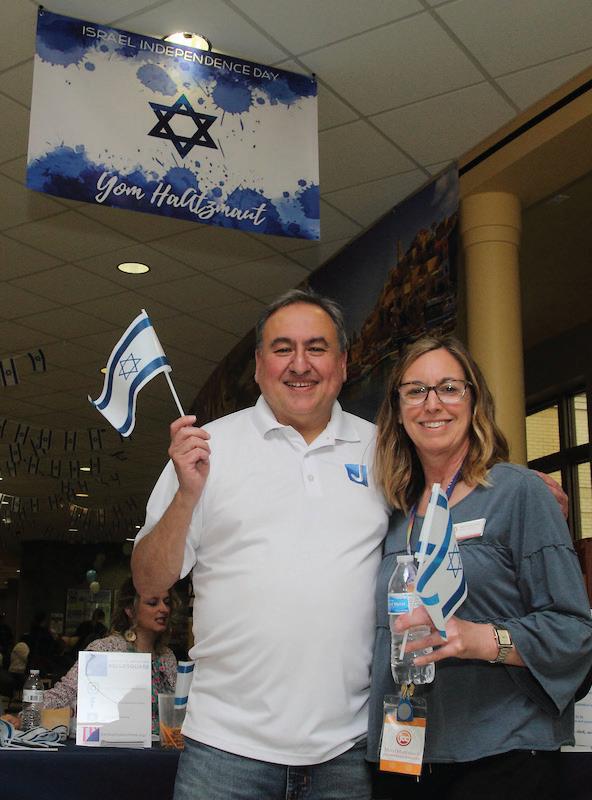
June 2023
JEWISH FEDERATION of GREATER DAYTON & ITS AGENCIES
JEWISH COMMUNITY RELATIONS COUNCIL
In Memory of Martha Jacob’s mother, Maurine Moody Scott
Susan and Jonas Gruenberg
CAROL J. PAVLOFSKY LEADERSHIP FUND

In Celebration of the Wedding of Jackie and Jake
Marilyn and Larry Klaben
HOLOCAUST PROGRAMMING FUND
In Memory of Rick Fishman
Beverly Farnbacher
HOLOCAUST EDUCATION COMMITTEE
In Honor of Renate Frydman, Named a Dangerous Dame of Dayton
Phil and Louisa Dreety
JOE BETTMAN MEMORIAL TZADIK AWARD
In Memory of Dr. Charlie Knoll
Jean and Todd Bettman
Elaine Bettman
JOAN AND PETER WELLS AND REBECCA LINVILLE FAMILY, CHILDREN AND YOUTH FUND
In Memory of Charlie Knoll
Congratulations, Linda Engel, for being honored by Echo
Wishing Judy Lipton a speedy recovery
Joan and Peter Wells
CALLING ALL SOCIAL WORKERS & COUNSELORS!
DID YOU KNOW THAT JEWISH FAMILY SERVICES IS PART OF A TRAINING COLLABORATIVE WITH CATHOLIC SOCIAL SERVICES OF THE MIAMI VALLEY, FAMILY SERVICES, AND GRACEWORKS LUTHERAN?
Each year, our Training Collaborative plans workshops on critical topics to enhance your knowledge and toolbox to support you as you support the community. Check out the sessions we are offering for CEUs and consider registering!
2023 COMMUNITY TRAINING COLLABORATIVE VIRTUAL SUMMER WORKSHOP SERIES


WHEN: The second Friday of every month, May–September, from 8:45 AM to Noon
COST: $35.00 per session
REGISTER: https://e.givesmart.com/events/wqN/
EARLY CHILDHOOD FUND
In Memory of Audrey MacKenzie
Sheila Myers
Heath Gilbert
Samantha Daniel
Gary and Mary Youra
Debby and Bob Goldenberg
Dick and Pat Jones
AUDREY MACKENZIE JCC
MEMORIAL FUND
In memory of Audrey MacKenzie
The Harvey Family
Cindy and Doug Turner and Family
The Compton Family
Arthur and Sandra Hanson
Jane and Gary Hochstein
Michele and Jay Dritz
Karen Sisco
Karen Steiger
Sunday, June 25
From 10:00 a.m. – 12:00 p.m. | Boonshoft CJCE | No cost
Back by popular demand, JFS is hosting another Drive-Thru Mitzvah Mission! Help us feed guests at St. Vincent de Paul’s shelters and provide high-need items for Brigid’s Path. JFS will take your donations and provide you with a sweet treat in return.
If you have questions, please contact Jacquelyn Archie, JFS Administrative Assistant, at jarchie@jfgd.net or at 937-610-1555.
Dr. Brown’s bottles, 8 oz; baby wash; baby lotion; hooded towels; and preemie diapers – Huggies, Pampers or Luvs.
• 1-1/2 lbs (24 oz)
elbow macaroni
• 2 lbs cheese, melted
•1 can (10.5 oz)
cream of celery soup
• 2-1/2 cups milk
Prepare frozen, unbaked macaroni and cheese casseroles following the required recipe and these directions. Cook macaroni and drain. Melt cheese separately and add to macaroni. Add milk and soup. Mix well. Pour into sprayed pan. Cover loosely and place in refrigerator until completely cooled. Then cover tightly with sturdy foil lid and freeze. Casserole should be frozen for 36 hours.
JEWISH FAMILY SERVICES of GREATER DAYTON
Classes
Beth Jacob Classes: Sundays, 10 a.m. & Wednesdays, 6 p.m.: Beginners Hebrew. $100. Beginning Sun., June 11. Sundays in person, Wednesdays on Zoom. Tuesdays, 7 p.m.: Torah Tuesdays on Zoom w. Rabbi Agar. Thursdays, 7 p.m.: Thursdays of Thought — Jewish Law on Zoom w. Rabbi Agar. 7020 N. Main St., Harrison Twp. bethjacobcong.org. Call to register, 937-274-2149.
Chabad Classes: Sundays, 8:15 a.m.: Deep Dive Into Inner Torah Teachings of Rebbe Rashab on Zoom. Sundays, 10:15 a.m.: Maimonides' Law Code on Zoom. Sundays, 4:15 p.m.: Reading Biblical Hebrew on Zoom. Sundays, 7 p.m.: Exodus on Zoom. Wednesdays, 8 p.m.: Chasidic View of the Parsha on Zoom. Saturdays, 8:30 a.m.: Chasidic Insights on the Parsha in person. 2001 Far Hills Ave., Oakwood. chabaddayton.com. 937-6430770.
Temple Beth Or Classes: Sun., June 11, 18, 25, 12:30 p.m.: Adult Hebrew. Thurs., June 8, 7 p.m.: Chai Mitzvah.
5275 Marshall Rd., Wash. Twp. 937-435-3400.
Temple Israel Classes: Wed. June 7, 14, 21, 10 a.m.: Social Justice Commentary w. Rabbi Bodney-Halasz at home of Cathy Lieberman. Saturdays, 9:15 a.m.: Virtual Torah Study. Sat., June 24, 9:15 a.m.: Hybrid Virtual Torah Study on Zoom. 130 Riverside Dr., Dayton. tidayton.org. 937-4960050.
Family
Temple Israel Prayer & Play: Sat., June 24, 10 a.m.: Infants2nd grade. Contact Rabbi Sobo, educator@tidayton. org for more information. 130 Riverside Dr., Dayton.



Children & Teens
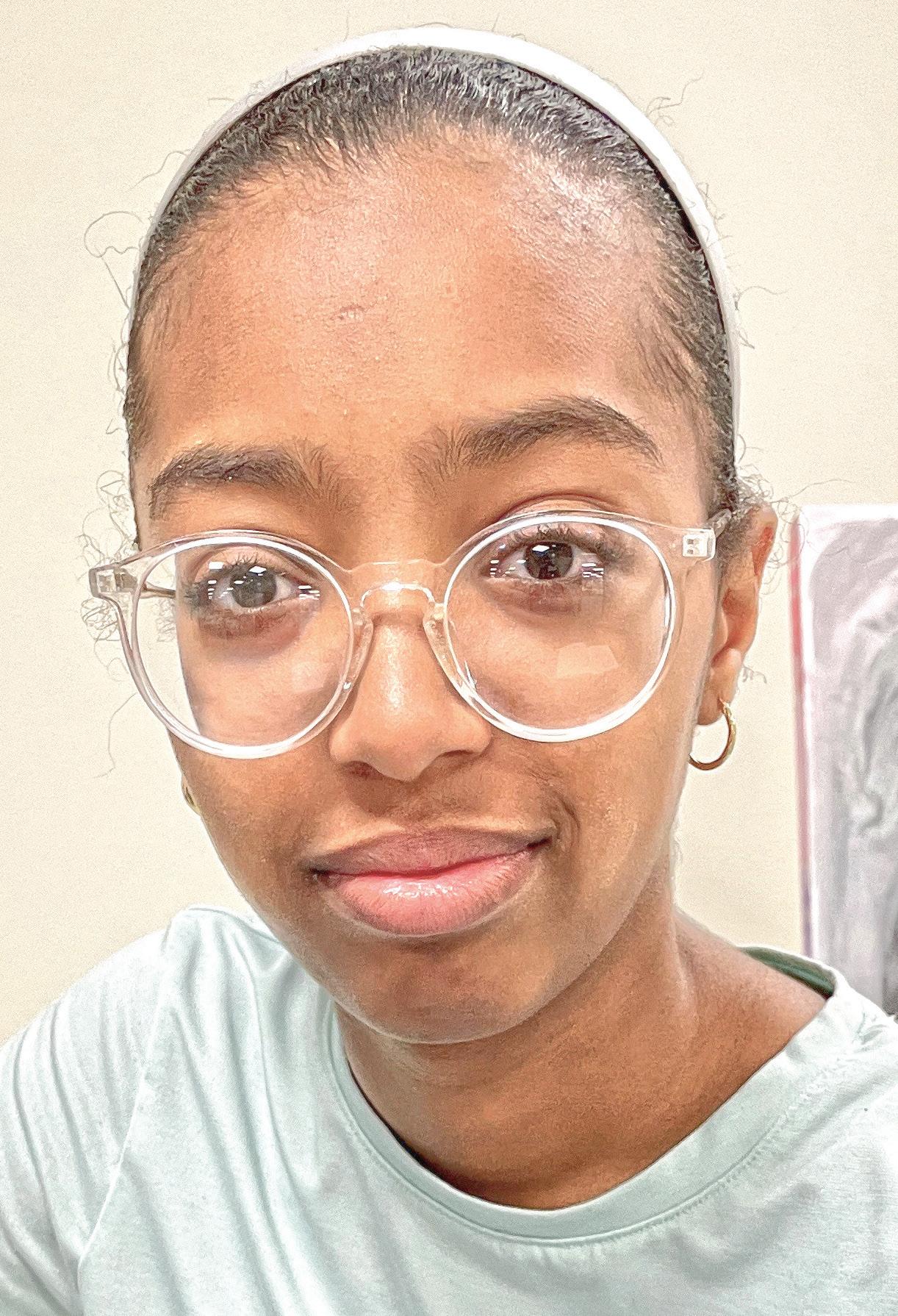
JCC Camp Shalom: June 5-July 28. At Temple Beth Or, 5275 Marshall Rd., Wash. Twp. jewishdayton.org.

Men
Chabad Bagels, Lox & Tefillin: Sun., June 4, 9:30 a.m. 937-643-0770. 2001 Far Hills Ave., Oakwood.
Adults
JCC Open Mah Jongg: Thursdays, 3-5 p.m. Boonshoft CJCE, 525 Versailles Dr., Centerville. 937-610-1555.
Temple Beth Or Exploration of the Jewish Short Story: Wed., June 28, 7 p.m.: Register at templebethor.com or 937-435-3400. 5275 Marshall Rd., Wash. Twp.
Americans & the Holocaust Exhibit: Through June 21. Free. Dayton Metro Library, 215 E. Third St., Dayton. 937463-2665. daytonmetrolibrary. org.
JCC Film Fest
For complete schedule, see Page 16.
Community
Beth Jacob 3rd Annual Jewish Women Inspiring Jewish Women: Sun., June 4, 11 a.m.: $18. RSVP to 937-2742149. 7020 N. Main St., Harrison Twp.
Chabad 30th Anniversary Gala: Sun., June 4, 6 p.m.: $100. RSVP at chabaddayton.
com. 937-643-0770.
Dayton Metro Library Americans & the Holocaust Exhibit Programs: Mon., June 5, 7 p.m.: Daytonians & the Holocaust: The View From Here w. The Dayton Jewish Observer's Marshall Weiss. Thurs., June 8, 7:15 p.m.: JCC Jewish Film Fest screening of Charlotte w. speaker Edna Carter Southard. Thurs., June 15, 6 p.m.: Belonging Versus Othering panel discussion on immigration w. UD's Theo Majka, Dayton Metro Library's Gabriela Pickett, Welcome Dayton's Desire Ntwayingabo & Eichelberger
Ctr. & WYSO's Neenah Ellis. Moderated by Amaha Sellassie. 215 E. Third St., Dayton. Reservations requested at daytonmetrolibrary.org.
Temple Israel's Jewish Cultural Festival: Sun., June 11, 11 a.m.-7 p.m. Free. tidayton. org/festival. 130 Riverside Dr., Dayton. 937-496-0050.

Jewish Dayton Dreams Big Community Video Screenings: Wed., June 14, 21, 28, 8:30 a.m.: Free. RSVP at jewishdayton.org or call 937-610-
1555. Boonshoft CJCE, 525 Versailles Dr., Centerville.
Temple Beth Or Adult Ed. at National Underground Freedom Center: Wed., June 14, 10 a.m.: Free, limited spots. Register at templebethor.com/ event/adult-education-eventfreedom-center. For info., contact Ruth Shumacher, ruth. schumacher@wright.edu. 50 E. Freedom Way, Cincinnati.
Jewish Family Services Drive-Thru Mitzvah Mission: Sun., June 25, 10 a.m.-noon. RSVP at jewishdayton.org. Boonshoft CJCE, 525 Versailles Dr., Centerville. Call Jacquelyn Archie, 937-6101555.
2313 Far Hills Ave., Oakwood 937-293-1196 www.oakwoodflorist.com family owned and operated military discount
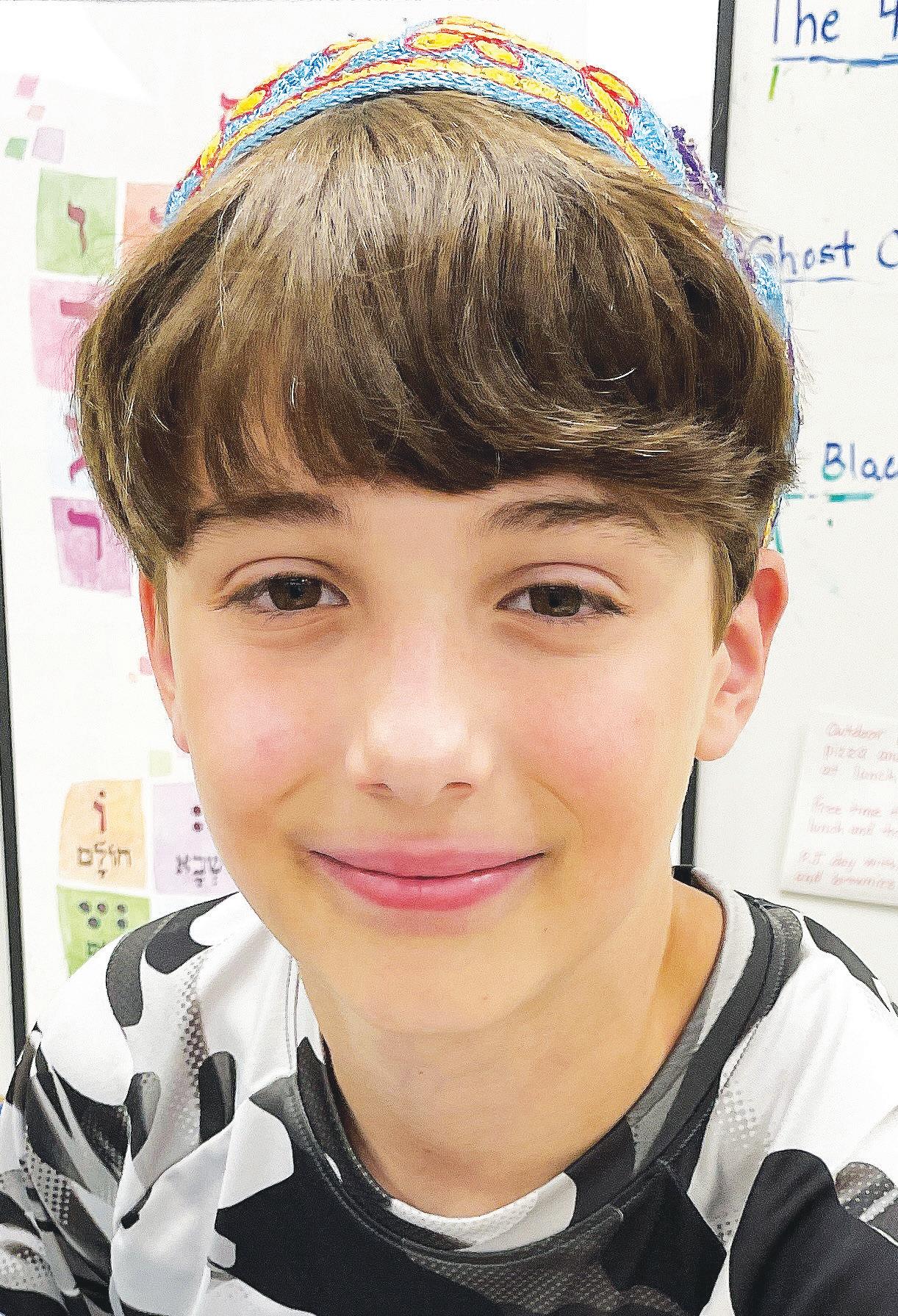
Ohio Senate Bill 83, which seeks to stifle discussion in the classroom and increase university costs, has faced widespread opposition from students, professors, and citizens.
The bill, introduced by State Sen. Jerry Cirino (RKirtland) in early 2023 and passed May 17, follows a litany of legislation proposed and enacted in other states, like Florida and South Carolina, which backers say defend free speech. This bill will ban free speech.
Senate Bill 83:
• Proposes limitations on faculty speech,
• Bans labor strikes from faculty,
• Bans diversity training with few exceptions,
• Requires annual faculty evaluations which weight student evaluations as only 50 percent of the teaching assessment,
• Increases bureaucratic and administrative costs for universities, which will have to pass those costs onto students.
The vague language in the bill has also created fears among professors and students that discussion in the classroom would be chilled, potentially leading to self-censorship for fear of lawsuits or job repercussions.
The Ohio State University is so concerned that its board of trustees released a rare public rebuke of the bill. The bill’s broad language has also sparked concerns from Jewish groups that it would require teaching “both sides” of the Holocaust.
Ohioans recognize the damage this bill could cause and are overwhelmingly opposed to the bill. During its initial hearing on April 18, over 500 opponents testified against the bill and only eight testified in favor and this opposition has continued with the new bill.
The breadth of this opposition from students, faculty, administrators, and citizens shows that Ohioans value our institutions being able to have robust conversations, which this bill threatens to chill with its vague limitations on speech in the classroom. If law schools and other higher-education institutions cannot discuss divisive concepts and challenge students to think critically, students will also choose to attend schools in other states and may not return to Ohio.
In our world, the true competition is for talent, and to get the best and the brightest, Ohio must have an education system that nurtures the best and the brightest. This bill does the opposite: it harms our educational system and chills discussion in the classroom.
Because of the overwhelming opposition, Sen. Cirino promised to make some amendments to the bill, but his changes have not addressed citizens’ concerns. Undeterred by the opposition, however, he vowed to press forward, saying, “I don’t get bullied very easily.”
Respectfully, senator, this isn’t students, higher institutions, professors, and citizens trying to bully you; we are trying to use our right to speak out against a damaging bill. I just hope you listen to us.
Attorney Addison Caruso of Oakwood is a fellow at Case Western University in its Environmental Law Clinic.
It’s not easy for a politician to criticize a popular ex-president from his own party. That’s why it is significant that President Joe Biden strongly criticized the refusal of President Franklin D. Roosevelt to bomb the railways leading to Auschwitz in 1944. Biden has spoken of his admiration for FDR’s leadership during the Depression and World War II; but it’s important to be equally frank about a president’s failures.
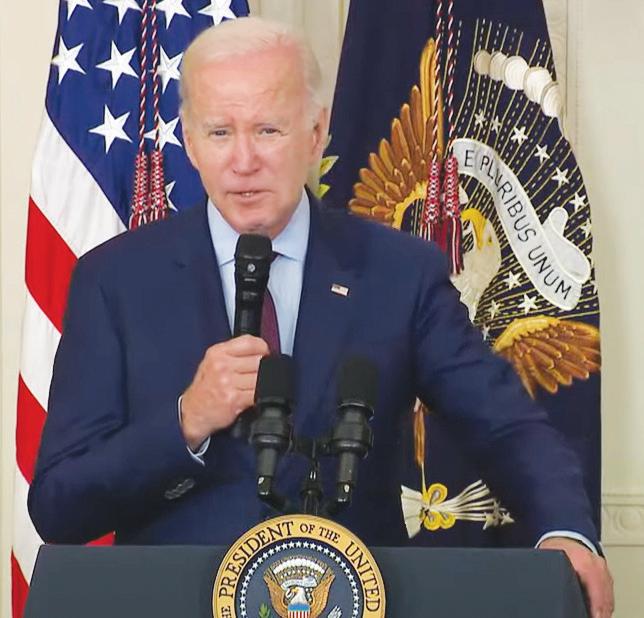
President Biden spoke on May 16 at a White House event celebrating Jewish American Heritage Month. He said he first learned about the Holocaust when his father, a World War II veteran, spoke at the dinner table “about how outraged he was about why we didn’t bomb the railroad tracks into the concentration camps, why we didn’t let the ship in with Jewish (refugees), and he talked about the need to make sure every generation understood.”
As a result, Biden later took his own children to visit the former site of the Dachau concentration camp. “I want(ed) them to see how no one could pretend they didn’t know,” the president explained. “I wanted them to bear witness to the perils of indifference.”
Biden is not the first president to publicly acknowledge FDR’s abandonment of the Jews.
At the opening of the U.S. Holocaust Memorial Museum, on April 22, 1993, President Bill Clinton said that even after America’s “awareness of (Nazi) crimes grew into indisputable facts, far too little was done” to help the Jews. “Before the war even started,” Clinton emphasized, “doors to liberty were shut and even after the United States and the Allies attacked Germany, rail lines in the camps within miles of militarily significant targets were left undisturbed.”
President George W. Bush, viewing an aerial reconnaissance photo of Auschwitz at Yad Vashem on Jan. 11, 2008, remarked, “We should have bombed it.” And President Barack Obama said on April 23, 2012, that the Nazis were able to carry out the Holocaust in part “because so many others stood silent.”
In the spring of 1944, American Jewish organizations received definitive information about Auschwitz and repeatedly urged Roosevelt administration officials to bomb the railway tracks and bridges over which hundreds of thousands of Hungarian Jews were being deported to the gas chambers.
U.S. officials responded that bombing the railways would require “diverting” planes from elsewhere in Europe. Even when Jewish leaders pointed out that the same railways over which Jews were deported were also being used for German military purposes, they still received the same answer: No.
Recently, some apologists for FDR’s Holocaust record have argued that there was no point in bombing
the railways because the Germans sometimes could repair railway lines fairly quickly.
That Monday-morningquarterback excuse ignores two crucial facts: the bridges along the railway routes were much more difficult to repair; and even though railroad tracks were sometimes repairable, that did not stop the Allies from making railways prime targets in their air war against the Germans.
No less than 32 percent of the bomb tonnage utilized in the Allies’ entire strategic air campaign in Europe was devoted to attacking railway routes. The impact was significant. The Nazis were compelled to divert tens of thousands of laborers from military construction in order to repair damaged railroads. Trains carrying military supplies were stranded, and war materials remained in warehouses because there was no way to get them to the front.
Hitler’s Ardennes offensive (better known as the Battle of the Bulge) was repeatedly postponed because the damage inflicted on transportation routes prevented resupplying German troops there. The bombing of rail marshaling yards destroyed freight cars, locomotives, and military goods awaiting shipment.
The Allies’ destruction of rail centers, bridges, and railroad cars in Germany’s key coal-producing region, the Ruhr, drastically reduced coal production and stockpiles, which in turn crippled other industries.
The U.S. government’s Strategic Bombing Survey found the destruction of the transportation routes “was the most important single cause of Germany’s ultimate economic collapse.”
The fact that American bombers were already attacking railways throughout Europe makes it clear why President Biden’s father was so “outraged” over the question of “why we didn’t bomb the railroad tracks into the concentration camps.”
The heart of the problem was that the Roosevelt administration was committed to the principle that military resources should never be used to assist Jewish refugees. President Biden, by contrast, appears to embrace the principle that the U.S. should use its military power to save lives when it can: recall that the Obama-Biden administration bombed Libya when Muammar Gaddafi was preparing to massacre civilians in 2011, and sent U.S. planes to break the ISIS siege of the Yazidi refugees in the mountains of Iraq in 2014.
With his remarks, President Biden in effect reaffirmed that he is determined not to repeat Roosevelt’s mistakes.
Biden is not the first president to publicly acknowledge FDR's abandonment of the Jews.whitehouse.gov Pres. Joe Biden at the White House Jewish American Heritage Month Celebration, May 16.

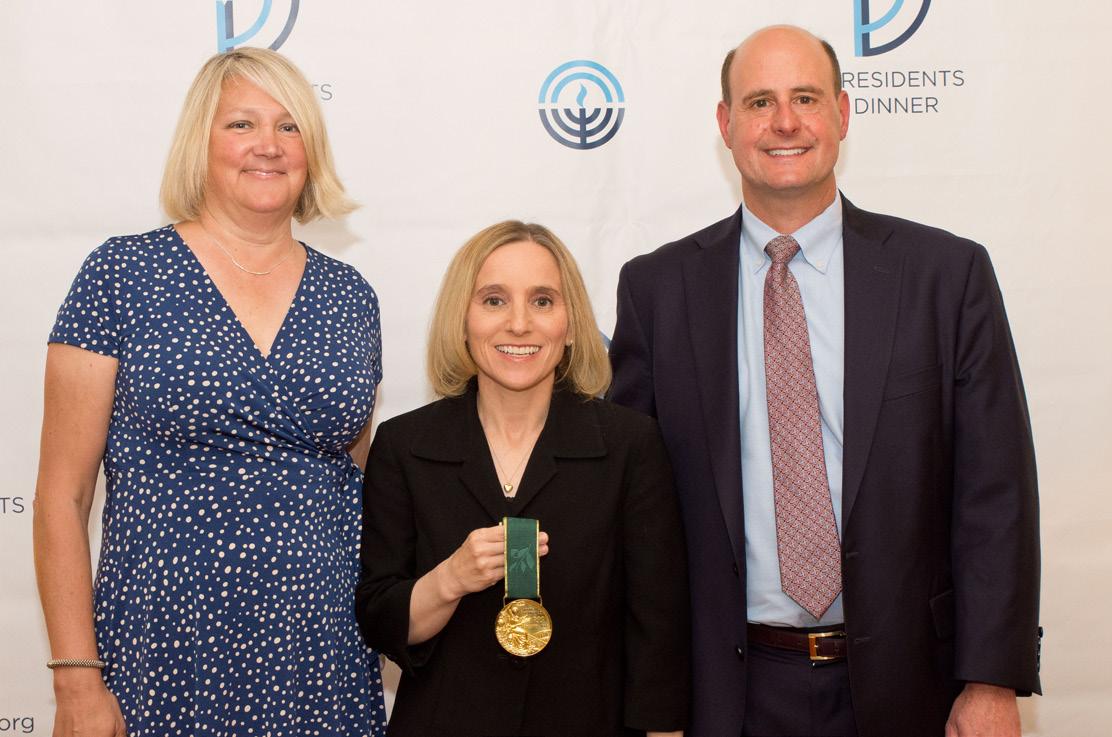










My grandmother Rachel was a gifted cook. After moving as a young mother from Baghdad to Tel Aviv in 1943, she kept cooking the same dishes she grew up with in Iraq. From her small kitchen, out came fried eggplant slices, ground chicken and parsley meatballs, rice with vermicelli that she cooked in freshly made chicken broth, and chopped spicy vegetable salad with tons of black pepper.
But the highlight was her assortment of stuffed foods that Iraqi and wider Middle Eastern cuisine is famous for: sambousek pastries with chickpea filling; kubbeh (farina dumplings) stuffed with meat in okra, pumpkin or beet sauce depending on the season; stuffed chicken with rice (t’beet) for Shabbat; cookies stuffed with dates (baba b’tamar); and sweet sambousek with sugar and nuts.
My favorites were the stuffed vegetables, particularly stuffed onions and tomatoes, and especially when they got a little burnt at the bottom, releasing their sugars that caramelized their skin.
My grandmother’s stuffing was made of rice and a little ground beef, and had a slight lemony taste, which, with the natural sweetness of the onions and tomatoes, made the dish sublime.
Stuffed vegetables are a cornerstone of
Iraqi cuisine, dating to 13thcentury Baghdad. The Book of Dishes by Al Baghdadi includes a recipe for madfuna, which means buried, and is also the root of the name of North African Shabbat overnight stew known as tfina or adafina.
Al Baghdadi describes how to pound cooked meat, mix with chickpeas and then stuff eggplants with the mixture. He spices the dish with saffron, coriander and cinnamon,
sprinkles with rose water and cooks on a “gentle fire.”

Stuffed food, whether it’s a stuffed dumpling or pastry, leaf or vegetable, requires a lot of practice, patience, and time — things my grandmother never questioned when she’d lovingly roll kubbeh, stuff sambousek or separated onion layers to fill and roll.
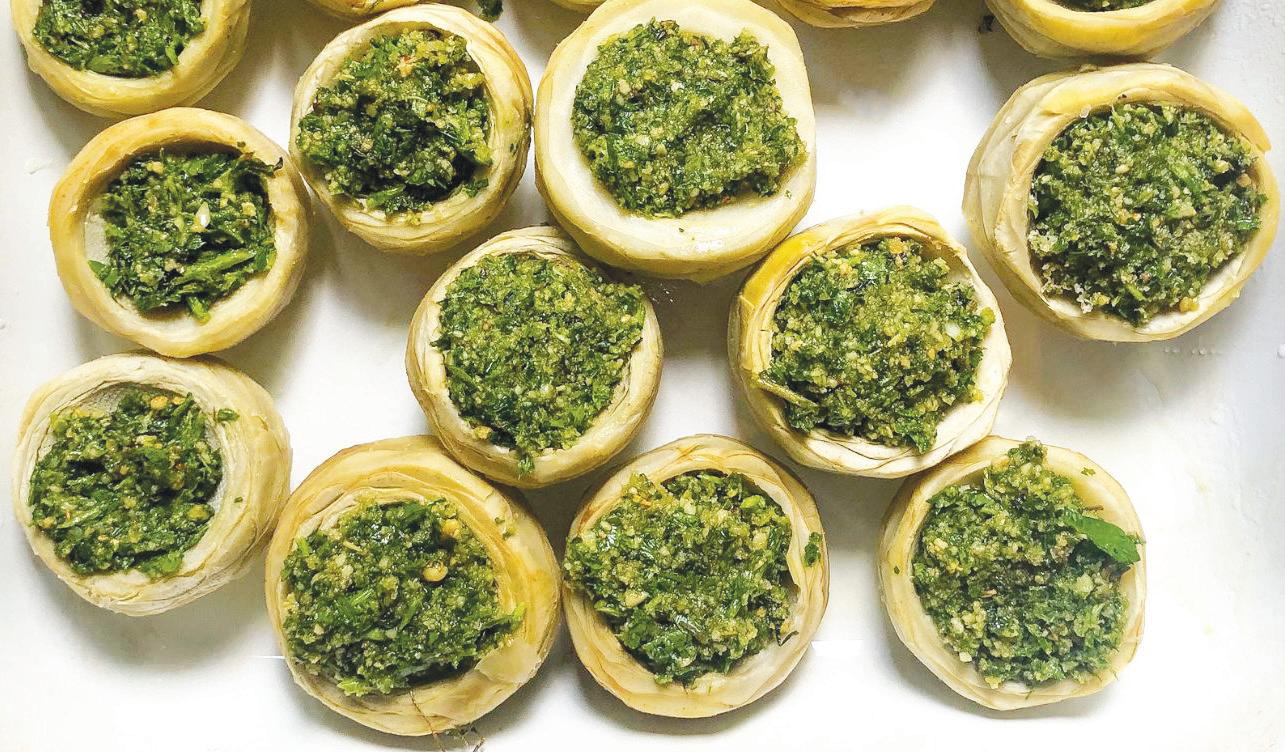
She started her day early in the morning, cooking her own chicken broth that she later used in the stuffed vegetable and the kubbeh sauce.
To make the stuffed onions, she first cooked then separated the onions into layers so she could fill each layer separately.
From time to time she sat at a chair near the large window, letting her feet rest, looking outside, feeding Tel Avivian cats
with some scraps, before she went back to roll kubbeh and stuff onions.
And she’s not the only one. Grandmothers from around the Jewish world have been stuffing vegetables for generations. More specifically, at least since the Ottomans started spreading the technique of making dolma, a general name for stuffed vegetables and leaves, throughout the empire, making it a popular practice that’s open to creative interpretation.
“There’s seven different ways to cook an eggplant… The second one to make it is the wife of the Shammash she hollows it and fills it with herbs, and lots of rice they call this meal: a dish of dolma.”
– Seven Ways To Cook An Eggplant, a Ladino folk song.
Over the years, inspired by friends and colleagues in Israel,
I’ve added to the vegetablestuffing techniques and recipes my grandmother taught me. Driven by a desire to keep her beautiful culinary traditions alive, I prepare stuffed vegetables regularly. I find the slow and repetitive labor of stuffing relaxing, and delight that the final flavor is somehow greater than the sum of its parts.
Whenever I walk through a farmers' market or supermarket vegetable aisle, I find myself drawn to veggies that I can stuff in various ways: Eggplants stuffed Sephardistyle, with a mixture of ground meat, rice, and herbs, or rainbow chard for a colorful pot of mashi — the Arabic term for stuffed vegetables used by Jews from the Middle East.
While these dishes invite creativity when it comes to flavors, there are some rules when it comes to the cooking method. Here are six of my best veggie-stuffing tips:
1. Choose firm vegetables of about the same size. If you’re mixing a variety of vegetables, try to keep them all of the same firmness.
For example, potatoes and beets need more time to cook than zucchini and tomatoes.

Onion layers are adjustable in that sense, and can be cooked for a longer or shorter time.
2. Melon ballers, serrated grapefruit spoons, and apple corers are all helpful in emptying veggies, especially zucchini and root vegetables.
3. Soak the rice in cold water for at least one hour before mixing the stuffing, to make sure it is moist enough and will not dry during the cooking process.
4. Ground beef, chicken or lamb add good flavor to the stuffing, but that’s all you need meat for: a bit of flavor. There’s no need to add too much of it.
A quarter pound of ground beef mixed with two cups of rice is more than enough. Vegan meat substitutes work very well, too.
5. Have patience and cook your stuffed vegetables slowly over 90 minutes to two hours. After that, especially if the filling includes rice, let the dish stand covered for at least another 30 minutes before serving.

The rice will absorb all the steam and will have the best texture this way. This is true for any cooked rice dish.
6. Never overstuff vegetables and leaves with rice. The rice expands as it cooks and will rip the vegetables if they’re filled too much.
Graham Henry Glovka
Parents: Todd and Mindy Glovka
Grandparents: Linda and the late Michael Novak, Robert and Mary Glovka
School: Kettering Fairmont
Activities: Tennis, French Club
President, Academic Team, Latin Club, Dulcimer Club

Volunteering: Tutoring, Rachel & Friends, Firebird Camp, Kettering Rec Center
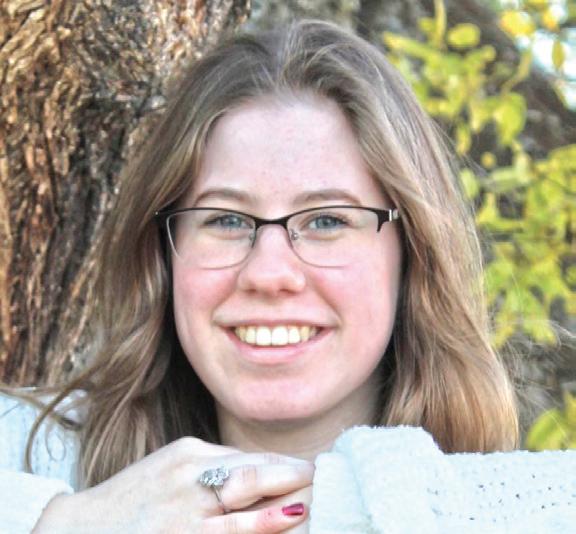
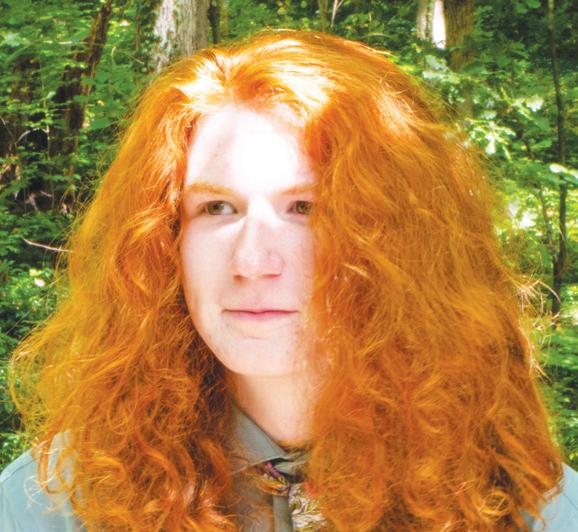

Honors: National Honor Society, Psi Alpha
Congregation: Temple Beth Or After Graduation: Brandeis University, majoring in Linguistics and English
Parents: Miriamne Krummel and Matt Adkins
Grandparents: Bill and the late Rifka Krummel, Marguerite and the late Greg Adkins School: Oakwood
Activities: Varsity Girls Tennis, Symphony Orchestra, National Honor Society Treasurer, Ohio Model U.N., Dayton Performing Youth Strings
Volunteering: Dayton Metro Library, Wright Memorial Public Library, Humane Society of Greater Dayton
Honors: Honors Diploma, French Honors Society
Congregation: Beth Abraham After Graduation: New York University, Liberal Studies Core

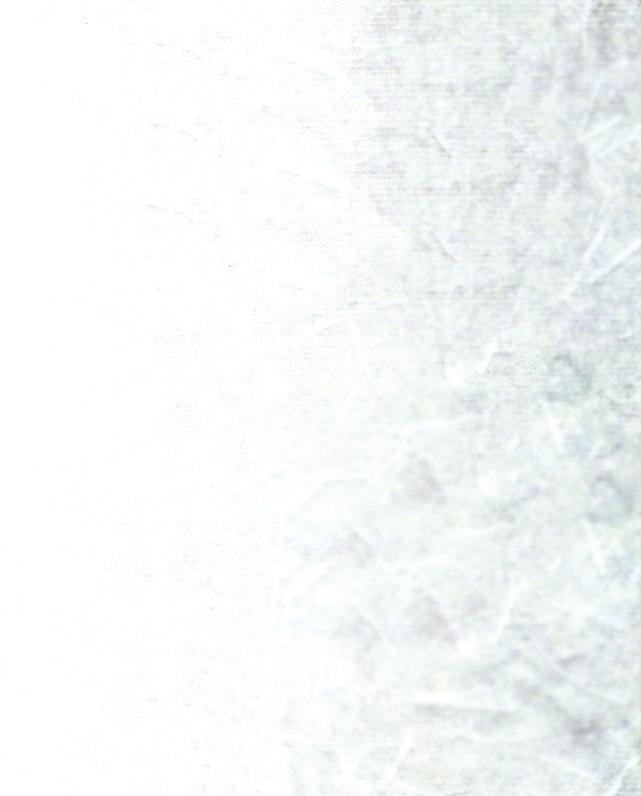
Alayna Poch
Parents: Eric Poch, Sheri Poch Grandparents: Phyllis Froug (Leet), Ronald Froug, the late Gloria Kobrin, Honore and the late Richard Poch
Great-grandparents: The late Jack and Freida Leet, the late David and Bess Froug School: Weiss High School, Pflugerville, Texas
Activities: Varsity Choir Officer, Health Occupations Students of America Officer, National Honor Society
Volunteering: Rotary Interact Club
Honors: Salutatorian, Honor Roll, AP Scholar Biomedical Science Award
After Graduation: University of Texas at Austin, Astronomy Major in the College of Natural Sciences
The Better Business Bureau of Dayton and Miami Valley honored Ohlmann Group with its Legacy Award at BBB's Torch Awards for Ethics Awards Dinner, May 9. Ohlmann Group marketing and advertising agency is owned by Linda Kahn and Lori Ohlmann. Every year, Ohlmann Group donates hundreds of hours of creative time to small businesses, and encourages its employees to become involved in causes they care about. Each month, the agency schedules a half-day volunteer outing for its team to give back together.
Primary grade Judaics teacher
Sandy Sloane-Brenner is retiring from Hillel Academy after 50 years of service to the Dayton area's Jewish day school. Word has it that she'll continue helping in the classroom and teaching prayers to the youngest students part time. Sandy easily holds the record as Hillel's longest-serving teacher.
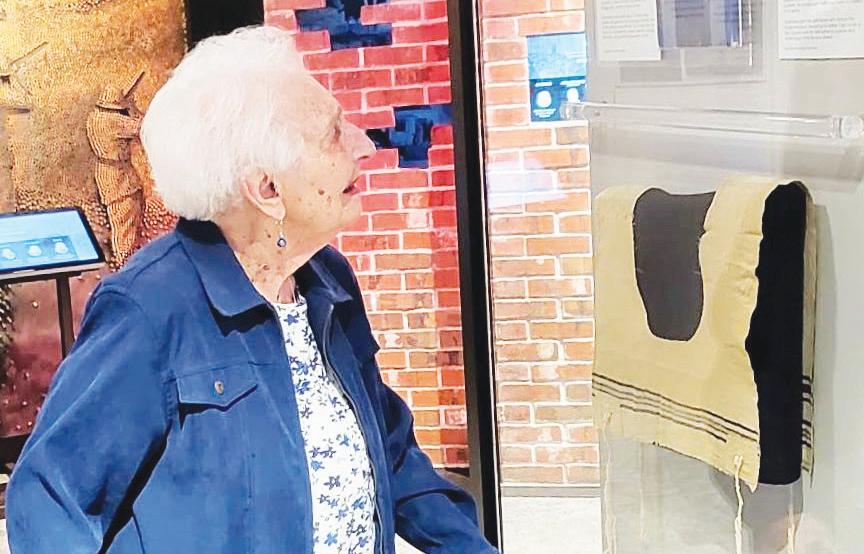
Holocaust survivor Ira Segalewitz of Kettering was the speaker for this year's Colum-
bus, Ohio Holocaust Remembrance, held at Columbus City Hall, April 21.
Beth Abraham Synagogue congregant Alan Chesen was honored as the Federation of Jewish Men's Club's KIO Region Man of the Year at its annual meeting in Cleveland, May 21.
Mary Rita and Norm Weissman received the 2023 Miami
Valley School Legacy Award.
Benjamin Guadalupe is graduating from the University of Rhode Island with majors in psychology and biology, and a minor in French. He's now applying to graduate programs in psychology. Benjamin is the son of Melissa and Harold Guadalupe
Send your Mazel Tov announcements to mweiss@jfgd.net.
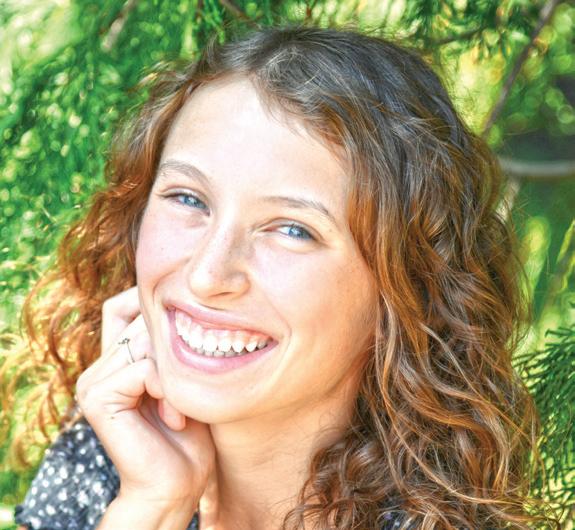




Beth Abraham Synagogue
Conservative
Rabbi Aubrey L. Glazer
Cantor/Dir. of Ed. & Programming
Andrea Raizen
Fridays, 5 p.m.
Saturdays, 9:30 a.m.
305 Sugar Camp Circle, Oakwood. 937-293-9520. bethabrahamdayton.org
Beth Jacob Congregation
Traditional
Rabbi Leibel Agar
Saturdays, 9:30 a.m. Evening minyans upon request.
7020 N. Main St., Dayton. 937-274-2149. bethjacobcong.org
Temple Anshe Emeth
Reform
320 Caldwell St., Piqua.
Fri., June 2, 7:30 p.m. led by Jese Shell. Contact Steve Shuchat, 937-726-2116, ansheemeth@ gmail.com. ansheemeth.org
Temple Beth Or
Reform
Rabbi Judy Chessin
Asst. Rabbi/Educator Ben Azriel
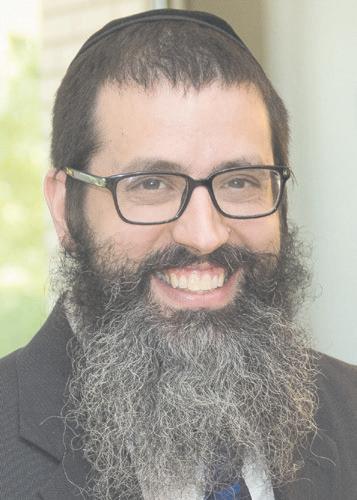
Fridays, 6:30 p.m. 5275 Marshall Rd., Wash. Twp. 937-435-3400. templebethor.com
Temple Beth Sholom
Reform
Rabbi Haviva Horvitz
610 Gladys Dr., Middletown. 513-422-8313. templebethsholom.net
Temple Israel Reform
Senior Rabbi Karen BodneyHalasz Rabbi/Educator Tina Sobo
Fri., June 2, 6 p.m.
Fridays, June 9, 16, 23, 30, 6:30 p.m. Sat., June 24, 10:30 a.m. 130 Riverside Dr., Dayton. 937-496-0050. tidayton.org
Temple Sholom Reform
Rabbi Cary Kozberg 2424 N. Limestone St., Springfield. 937-399-1231. templesholomoh.com
Rabbi Nochum Mangel
Associate Rabbi Shmuel Klatzkin Youth & Prog. Dir. Rabbi Levi Simon. Beginner educational service Saturdays, 9:30 a.m. 2001 Far Hills Ave. 937-643-0770. chabaddayton.com
Yellow Springs Havurah
Independent
Antioch College Rockford Chapel. Contact Len Kramer, 937-5724840 or len2654@gmail.com.
of Greater Dayton
On Shavuot, this year on May 25-27, Jews around the world commemorate the monumental event of the Giving of the Torah on Mount Sinai.
However, the significance of this event reaches far beyond
the past; it is an experience that is relived every year and, to a lesser extent, every day.
We can discover valuable insights on how to approach the Torah and its acquisition in our lives from the teachings of our sages and the significance of the physical setting.
The choice of Mount Sinai as the site for the Giving of the Torah holds symbolic meaning.
Despite being the smallest of all mountains, it was precisely this mountain that God chose for this transformative event.
The emphasis on humility becomes apparent, as Torah
requires a balance between humility and self-esteem.
Humility allows us to connect with God, recognizing our smallness in comparison to the Divine, while self-esteem empowers us to overcome obstacles and fulfill God's will.
This delicate combination of humility and pride was exemplified by Moses himself. As the leader of the Jewish people, he had unparalleled spiritual achievements, yet he remained "more humble than all the men on the face of the earth."
His humility stemmed from the understanding that his gifts were bestowed upon him by God, and his self-esteem arose from his unwavering dedication to fulfilling God's will.
The setting of Mount Sinai in the desert holds further lessons. The desert represents a place
without an owner, emphasizing that the Torah is not the sole possession of a select few.
It is accessible to every Jew, regardless of background or status or intellectual capabilities. Our ancestors demonstrated this commitment when they unequivocally accepted the Torah before fully comprehending its commandments.
The barrenness of the desert also teaches us a valuable lesson.
Just as our ancestors relied on God for sustenance and trusted in His providence, we too should prioritize our dedication to the study and observance of the Torah over material concerns.
Even in times of hardship and uncertainty, we must have faith that God will provide for our needs as He did for our ancestors.
Moreover, the metaphor of the desert extends to spiritual barrenness and emptiness.
When we feel spiritually depleted, we must remember that the Torah was given in the desert, and even in our present circumstances, God grants us the opportunity to connect with Him through His precious gift.
We must share this gift with others, reaching out to even the seemingly barren souls among us, and through the power of Torah, help them flourish and grow.
As we celebrate Shavuot, let us reflect on the profound teachings of our sages and the symbolic lessons of Mount Sinai.
May we embrace the balance of humility and self-esteem, transcending our personal limitations to connect with God through the study and observance of His Torah.
May the lessons of unity, humility, and dedication to God's will guide us toward a meaningful and transformative Shavuot experience. Chag Sameach!
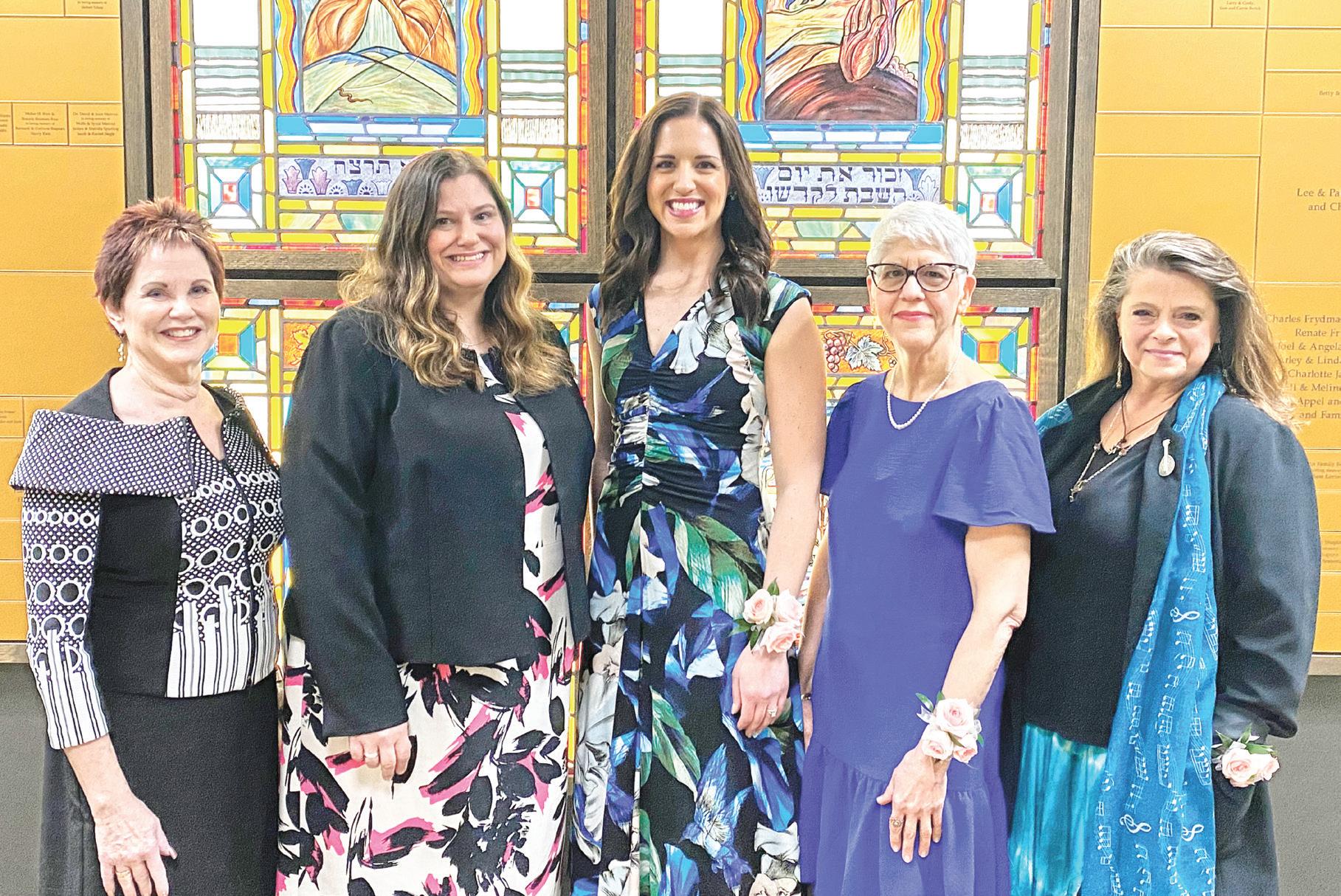 Marshall Weiss
Marshall Weiss
Shabbat Candle Lightings
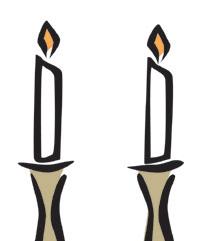
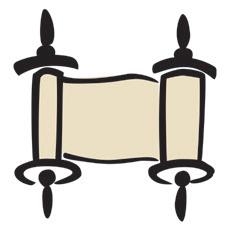
June 2: 8:41 p.m.
June 9: 8:46 p.m.
June 16: 8:49 p.m.
June 23: 8:50 p.m.
June 30: 8:51 p.m.
Torah Portions
June 3: Naso
(Num. 4:21-7:89)
June 10: Behalotecha
(Num. 8:1-12:16)
June 17: Shelach
(Num. 13:1-15:41)
June 24: Korach
(Num. 16:1-18:32)
Nearly 2,200 years ago, Antiochus IV seized the throne in the Seleucid Empire, an enormous Greek state that included Judea. To unify his kingdom, he embarked on an aggressive Hellenizing mission specifically targeted toward the Jews, outlawing the Torah, forbidding all Jewish religious practice,
and forcing the consumption of pork and the sacrifice of pigs on the altar of the Holy Temple.
When Antiochus’ troops arrived at the town of Modiin and demanded that its Jews offer up a pig to the pagan gods (to be followed by the obligatory feast), the elderly local priest, Mattathias, replied, "Though all the nations that are under the king’s dominion obey him…I and my sons…will not hearken to the king’s words, to go from our religion."
When another Jew stepped forward to make the sacrifice, Mattathias killed him, setting in motion the world’s first ideological religious war, that of the Maccabees.
Why the widespread Jewish aversion to pork? How did swine become symbols of Jewish oppression and antisemitism? And what lessons can we learn from the chazer, the lowly pig?
First appearing in the Bible alongside the camel and hare, the pig is one of the specified mammals prohibited as food to the Israelites, each lacking one of the characteristics of being kosher: cud chewing and cloven hooves.
“In other words,” writes food journalist Alix Wall, "pig was no more or less treyf (unkosher) than these other animals during the biblical era.”
This changed during the late Hellenistic and Roman periods, notes Prof. Jordan Rosenbaum, when Judea’s foreign rulers imported swine herding, pork as a food staple, and the pig as an essential pagan sacrificial animal.
Unsurprisingly, the significance of the pig became inflated in the Jewish mind, reflected in its “abhorrent status” both in Jewish and rabbinic sources and as a prohibited food.
Even today, the pig remains the ultimate Jewish symbol of loathsomeness, captured in colorful Yiddish colloquialisms: chazer (acting or eating like a pig, a selfish person); chazer shtahl (pigsty); and chazerai (junk, junk food).
At the same time, refusal to adopt these pig-centered pagan practices became a key marker of Jewish identity and otherness in the minds of the Jews’ adversaries.
As a consequence, the pig evolved into an antisemitic trope, starkly evident in Judensau, medieval folk and church sculptures of Jews in "obscene contact" with a sow; the epithet for Inquisition-era secret Jews, Marrano (swine); and modern antisemitic caricatures of Jews and Israel as pigs.
With the continuous negative association between pigs and food in Jewish text, history, and language, it’s inconceivable that the infant toe-wiggling rhyme, "This little piggy went to market" and the fable of the Three
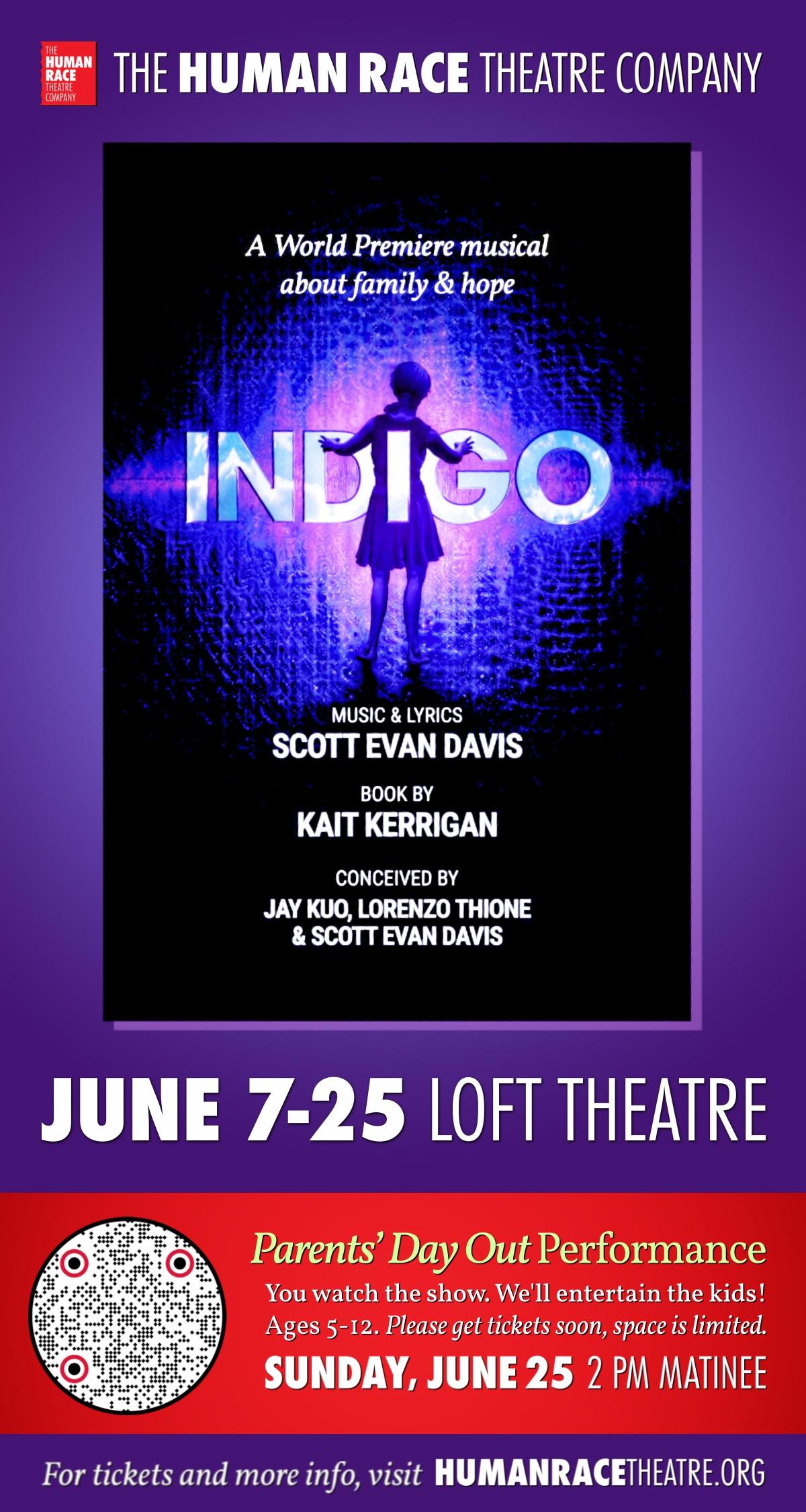
Professor Buber and His Cats by Susan Tarcov. About to lose his bookstore home in Jerusalem, Ketem the cat decides to relocate to the book-filled home of the famous philosopher and author Martin Buber. Tarcov’s charming picture book for young readers explores Buber’s life and unique worldview from a cat’s point of view, expressed in dreamy thoughts and feline fantasy. The values of respect, relationships, communicating with God, and the surrounding world permeate the story. An engaging introduction to a significant Jewish historical figure.
Little Pigs have Jewish origins. But there are Jewish pig tales with unexpectedly nourishing themes.
Pig's feet. Although the pig doesn’t chew its cud, it does have split hooves. So why is it reviled more than other mammals that display neither cudchewing nor split hooves?
The Midrash explains that when the swine sprawls on its side, it showcases its cloven feet as if to say, “I’m kosher!”
Outwardly kosher, but inwardly not. So too, the Midrash continues, the Roman Empire gives the appearance of holding court and pursuing justice while obscuring its underlying robbery, violence, corruption, and oppression.
Thus pig’s feet, chazer fissel, have become synonymous with hypocrisy and superficial righteousness that doesn’t reflect inner sincerity.
Whole hog. According to Prof. Beth Alpert Nakhai, meat wasn’t a significant part of the diet in the ancient world.
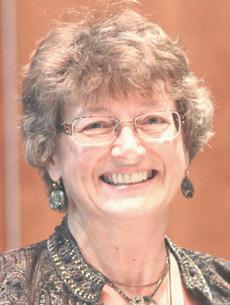
Living animals were much more valuable as ongoing sources of labor, transportation, milk, wool, multi-use dung, and offspring.
Pigs were the one exception, notes the author of Jewish Eating and Identity Through the Ages, David Kraemer. Providing neither food, nor fabric, nor any practical economic function while alive, pigs were simply exploited for their meat: their lives devoted to wholehog consumption, oppressed like slaves, intended solely for death. Each portrait is an abominable life in Judaism’s worldview.
Impossible Pork. “When the vegan meat manufacturer Impossible Foods requested kosher certification for its new line of Impossible Pork, the OU
The Escape Artist: The Man Who Broke Out of Auschwitz to Warn the World by Jonathan Freedland. The book opens with 19-year-old Rudolf Vrba and 26-year-old Fred Wetzler poised to escape from Auschwitz. After three days hiding in a pile of discarded wooden boards, they would be the first Jews ever to escape from the death camp. But their journey was just beginning. Freedland seamlessly weaves together memorable characters, detailed experiences, evocative descriptions, and heart-stopping suspense into an award-winning page-turner.
balked,” Rabbi Chaim Steinmetz recounts. “Although the actual product is made of kosher ingredients, the OU found that certifying Impossible Pork as kosher was…simply impossible.”
Despite the increasing variety of “faux unkosher” products from fake bacon to imitation crab to dairy-free cheeseburgers, it seems pork carries a weight all its own.
After all, Steinmetz concludes, the pig, with its centuries-long legacy of antagonism and antisemitism, is the metaphor for something absolutely, unequivocally, and unquestionably non-kosher: chazer treyf, as unkosher as a pig.
Pig in the mud. Rabbi Mendy Kaminker tells a Chasidic story of two brothers, one a wealthy magnate and the other a God-fearing pauper. When the poor brother’s daughter was
to be married, he approached his rich sibling for help with the wedding expenses.
Delighted to host his brother, the rich fellow invited him on a tour of his palatial home. After a while, however, the poor brother tired of viewing the spacious rooms, opulent furnishings, and lavish gardens and asked to cut the tour short. Puzzled, his bigwig brother responded, “But there’s still more to see!” His poor brother replied, “There is a creature that wallows in the mud all day.
If you ask it what it wants, all it can think of is, ‘More mud!’ You, too, are sunk in the mud of possessions and material pleasures, and all you want is more mud instead of focusing on the truly important things in life.”
Although rare, Jewish pig tales reveal surprising insights about culture, conduct, and character worth pondering.
There are Jewish pig tales with unexpectedly nourishing themes.Kwiatek
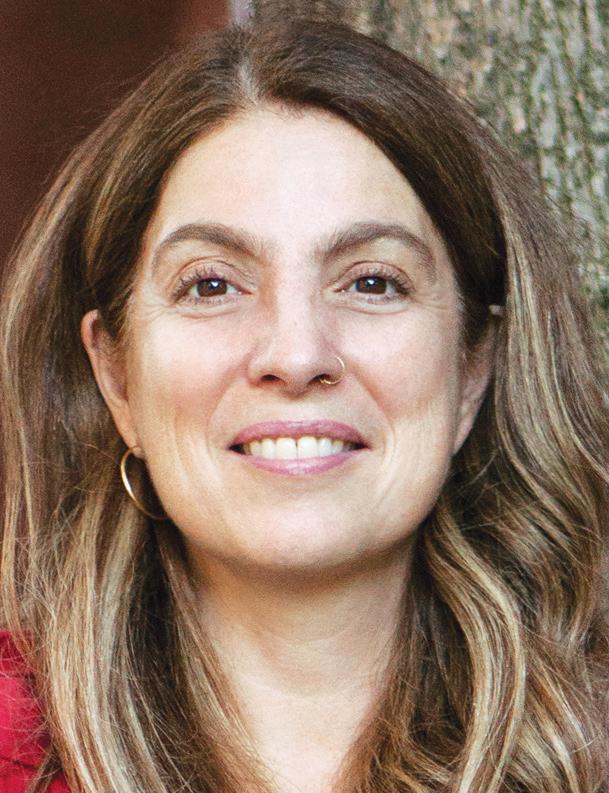
Just prior to her murder in Auschwitz in October 1943, artist Charlotte Salomon completed what many consider the world’s first graphic novel. She was 26 years old and six months pregnant when she died.
Her unique, avant-garde work, titled, Leben? oder Theater? Ein Singspiel (Life? or Theater? A Song-play), seamlessly blends fact and fiction in its 1,325 expressionist-style gouache paintings and overlay transparencies.
Whittled down to over 800 pages, it is an entire play replete with characters (fictionalized versions of people in her life), original text, literary references, and musical cues. It speaks of love, uncertainty, suicide, and possibly even a murder committed by the artist.
Entrusted in the care of a non-Jewish family friend ahead of her deportation, since its recovery, the semi-autobiographical multi-media work has been subjected to censorship, speculation, and scholarly research.
Its newest incarnation is as an animated film, titled Charlotte, with an all-star cast of voice characters. Dayton's JCC Film Fest will screen the film June 8 in conjunction with the Americans and the Holocaust exhibit at the Dayton Metro Library's main library.

Although the artist’s life and work also have been documented in books, exhibition, and films, this is the first time anyone has approached the narrative using a visual style evocative of the one used by Salomon herself.
Charlotte features voice acting by a team of A-listers, including Keira Knightley as Charlotte, Brenda Blethyn, Jim Broadbent, Sam Claflin, Eddie Marsan, Sophie Okonedo, Mark Strong, and the late Helen Mc-
In conjunction with the Americans and the Holocaust exhibit at the Dayton Metro Library's main library, the JCC Film Fest will screen Charlotte at 7:15 p.m., Thursday, June 8 at the Main Library, 215 E. Third St., Dayton. With guest speaker Edna Carter Southard. Free. Reservations are requested at daytonmetrolibrary.org. Charlotte will also be available to view online, June 8 beginning at 7 p.m. through June 10 at 7 p.m. The cost is $12. To view online, go to jewishdayton.org/events.

Crory in her final role prior to her death in April 2021.
“We’re doing this for Charlotte. She has been overlooked and under-appreciated. This film is meant to bring attention to her,” said Julia Rosenberg, one of the film’s producers.
Born in Berlin in 1917, Salomon is primarily known for Life? or Theater? which has remained in print. The seed for Charlotte was originally planted when Rosenberg received a published copy of Life? or Theater? as a bat mitzvah gift four decades ago.
“I don’t remember who gave it to me, but someone brought it into my life and it struck a chord with me as a young woman,” Rosenberg said.
“It was a classic coming-of-age story she told about herself, and I saw myself in her story. As a girl, I found resonance in it even if I couldn’t articulate my feelings about it at the time. As an artist, she gave me a lot to think and dream about,” she said.
Salomon’s romantic yearnings spoke so strongly to Rosenberg that she bought a copy of Life? or Theater? for every man she fell in love with — “Like a totem,” she said.
Writer David Bezmozgis was brought in to write the final draft of the film’s script. Having written and directed live-action movies, Bezmozgis ensured that the animation did not paint a falsely rosy picture.
“The film changed tonally when I came in. It became more serious. I made it more cinematic, which can be done by inventing sequences that are highly visual, where you let the images do the speaking,” Bezmozgis said.
Unlike Rosenberg, Bezmozgis was only vaguely familiar with Salomon before joining the project. He delved into Life? or Theater? and a variety of secondary sources to learn more about her.

Salomon was the only child of a prosperous German Jewish family. Her father, Albert Salomon, was a surgeon. His study of mastectomies and breast X-rays eventually led to the widespread use of mammography many years
later. Salomon’s mother, Franziska Grünwald Salomon, died in 1926, when her daughter was a young girl. Salomon was told it was from influenza.
When she was 16, Salomon left school after the Nazis came to power in 1933. She applied to the prestigious Vereinigte Staatsschulen für freie und angewandte Kunst (United State Schools for Pure and Applied Arts) in 1936, and managed to be accepted despite her lack of prior training and the strict quotas on Jews accepted to institutions of higher learning. She studied there for two years, until she was forced to leave due to increased enforcement of Nazi race laws.
After Kristallnacht in November 1938, Salomon’s father was sent to Sachsenhausen concentration camp. Upon his release, he and Salomon’s stepmother, opera and classical singer Paula Salomon-Lindberg, decided that the family must flee Germany. They sent Salomon in January 1939 to join her maternal grandparents at the villa of a wealthy American named Ottilie Moore in Villefranche-sur-Mer, who was sheltering refugees. Salomon’s parents went to Amsterdam, planning to meet up later with their daughter and head together to America.
Salomon’s parents didn’t make it out of Holland in time, and were deported to the Westerbork transit camp. They managed to escape, and survived in hiding until the end of the war.
This is the first time anyone has approached the narrative using a visual style evocative of the one used by Salomon herself.Producer Julia Rosenberg Angela Lewis
In the meantime, Salomon’s grandmother died by suicide in the south of France. It was then that it was revealed to Salomon that her mother had also taken her own life, as had her aunt and a number of other relatives.
Salomon and her grandfather were interned at Gurs, but they were released due to her grandfather’s ill health. Upon returning to Villefranche, Salomon was in extreme emotional distress from learning of her family’s history of suicides and the political situation. She felt her days were numbered as both a Jew in Europe, and as someone genetically predisposed to mental illness.
This was the catalyst for Salomon’s 18 months of feverish work producing Life? or Theater? between 1940 and 1942. The artist expressed enigmatically that it was a work depicting her life and the life of family members — including things that may or may not have happened.
“Charlotte Salomon invites us to think about truth and representation,” Rosenberg said.

Upon the opus’ completion, Salomon dedicated it to Ottilie Moore and handed it to a family friend named Dr. Moridis for safekeeping.
“C’est toute ma vie” (It’s my whole life), Salomon told the doctor.
In October 1943, Salomon was deported along with her new husband, Austrian-Jewish refugee Alexander Nagler, to Auschwitz. It is believed that Salomon was sent to the gas chambers immediately, while her husband died a few months later of exhaustion.
According to Bezmozgis, there was a robust discussion within the film’s creative team as to what to put in the script, and what to leave out. It wasn’t easy in some instances, because of the blurring of fact and fiction in Life? or Theater?
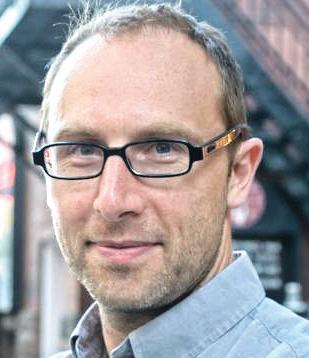
It was decided to include a scene in which Salomon kills her grandfather by poisoning an omelette she prepared for him. The official record states that his death was due to a head injury, however a 35-page letter in painted lettering surfaced in 2011 in which Salomon confessed the poisoning to her former lover Alfred Wolfsohn.
It appears that the letter was originally included in Life? or Theater? and removed by her parents, after they retrieved the work after the war from Ottilie Moore,
who had received it from Dr. Moridis.
“There was enough supporting material, including a ‘death mask’ drawing Salomon purportedly made of her grandfather as he was dying in front of her. We could make a strong case that this could have really happened,” Bezmozgis said.
The creators, however, decided to stay away from hints in Salomon’s work that her grandfather was a sexual molester. A 2017 article in The New Yorker makes a case for the sex abuse, even linking it to the suicides of Salomon’s female relatives.

“To include this in our film would be to validate that it (the sexual abuse) happened, and we don’t have enough evidence to do so. I’m OK with crimes of omission, but not of commission, in a biographic film,” Bezmozgis said.
Eliad Moreh-Rosenberg, curator and director of the art department at Yad Vashem, advised against dwelling on the sensational aspects of Salomon’s life, rather than on Salomon’s multi-layered and innovative artistic point of view.
“It’s more important to focus on her amazing artwork. She was a gifted visual artist with a great sense of color and original composition. We see the influence of cinema, photography, and cartoons on her expressive style. She blew categories away and pushed boundaries,” Moreh-Rosenberg said.
While Life? or Theater? was gifted to the Jewish Museum of Amsterdam by Salomon’s parents, Yad Vashem, Israel’s Holocaust history authority and memorial, holds 24 of Salomon’s works in its collection. Eleven are currently on display in a special gallery dedicated to Salomon in Yad Vashem’s art museum. In addition, Salomon’s story and some reproductions from Life? or Theater? are included in the section of Yad Vashem’s history museum dealing with the rise of Nazism in Germany.
“If Salomon created such a powerful artwork at age 23, who knows what she could have created later,” Moreh-Rosenberg said.
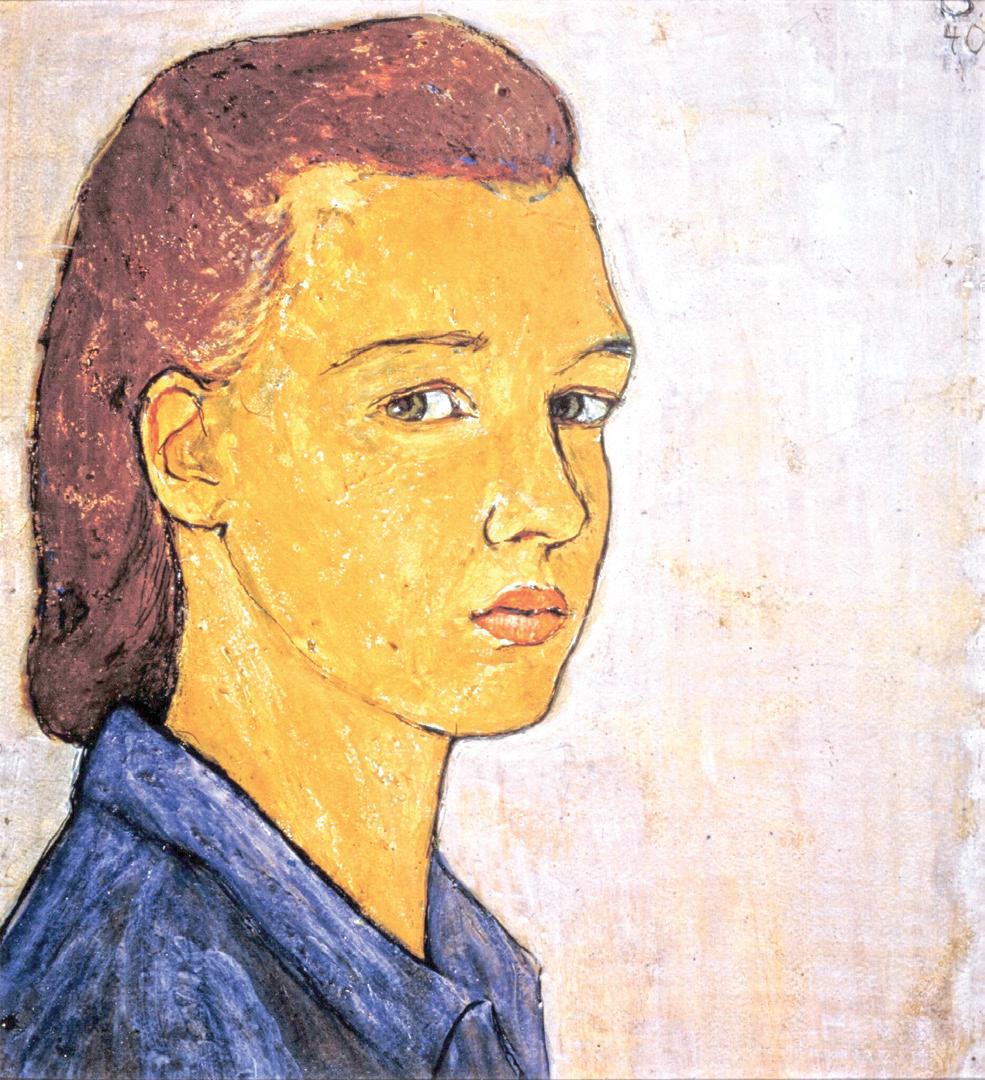
“In a way, she epitomizes the loss brought about by the Holocaust for the Jews and humanity,” she said.
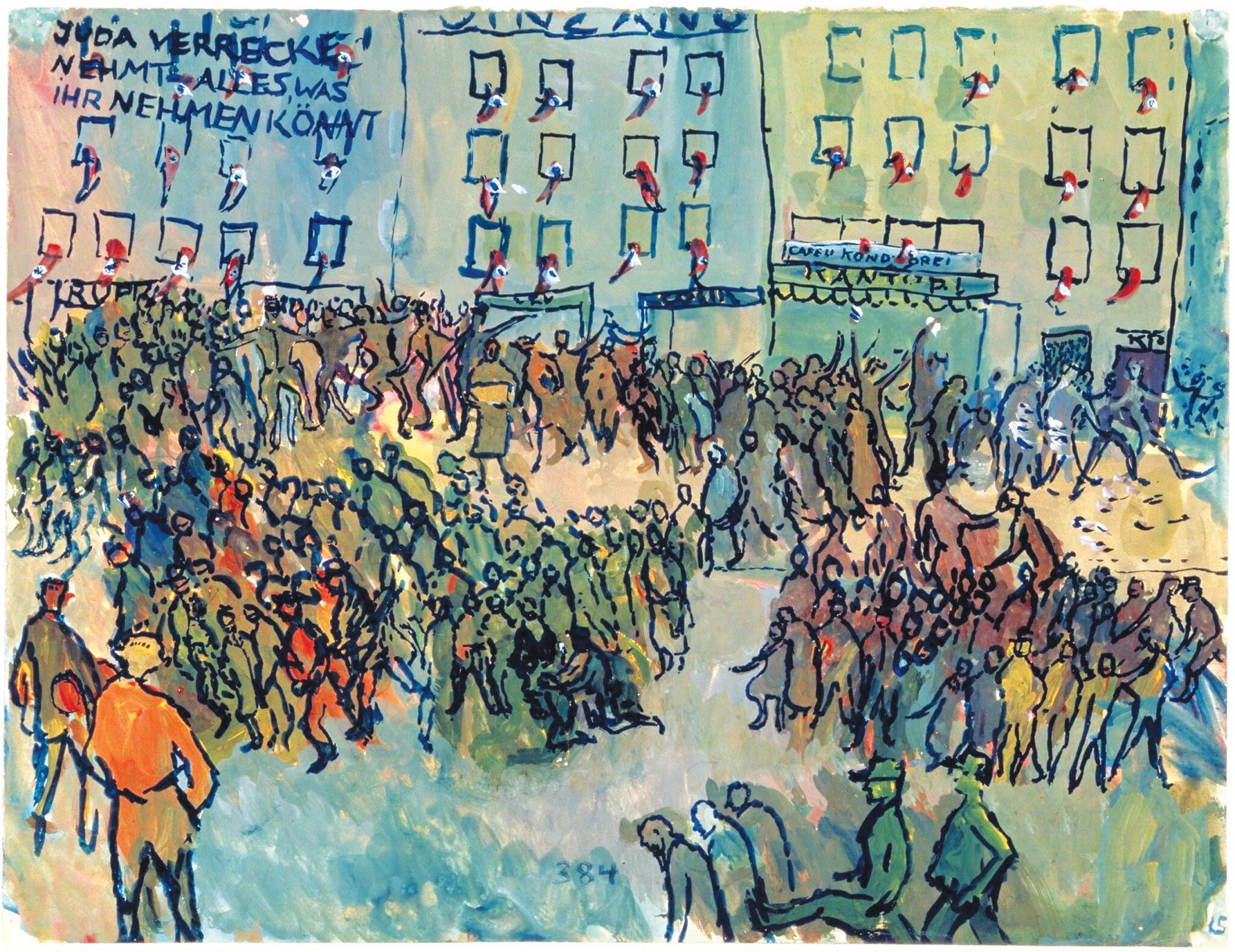
The real Mordecai Samel, at the time in his late 70s, really didn’t want an iPhone in 2015.
The Holocaust survivor who had been living in south Florida since 2004 didn’t see a need. His taped-together flip phone worked fine. But his son Marvin insisted.
One thing that helped convince Mordecai to give in: the ability to listen to the klezmer music of his youth that the iPhone provided.
“One day I got off a plane, and I called my dad, and all I could hear was static,” Marvin Samel said.
Soon Mordecai was going to iPhone lessons at a local store six times a week.

“It’s there that I see my father holding court, telling stories,” Marvin said about the lessons, “and I said, this is it. This is the vehicle to tell the story as a screenplay.”
Thus sprung an unusual comedy film inspired directly by first-time director Marvin Samel’s life, centered on a Jewish family that is split by a stark generational divide.

In the film — as in the Samels’ real lives — Marvin (Sean Astin) attempts to sell his cigar company while his father’s antics continually get in the way and his mother (Carol Kane), who has Alzheimer’s disease, sometimes wanders off.
JCC Film Fest will screen iMordechai at 10 a.m., Tuesday, June 20 at The Neon, 130 E. Fifth St., Dayton. Sponsored by Hadassah, the screening includes a 9:30 a.m. reception and speaker Tara Feiner, JFS senior director, after the film. Tickets are $12 and may be purchased at jewishdayton.org/events or at the door. The film will also be available to view online.

At the same time, Marvin’s wife, who has just given birth to twins, is upset with him about delays in the company sale and the family’s resulting cash crunch. Mordecai agrees to take the iPhone lessons and befriends the instructor (Azia Dinea Hale) whom he calls “Einstein Nina,” someone with a surprising family backstory of her own.
Mordecai tells her stories about his family’s escape from the Nazis when he was a child, showing her family pictures from before the war and noting that he can’t remember his mother’s face.
These stories, Marvin Samel said, were inspired more by the stories told by Mordecai’s brother, who was older when the family fled, than by his own. The family left Poland in 1939, when Mordecai was 3 and his older brother was 6. They first went to the Soviet Union and eventually to Brooklyn.
Mordecai’s family was from Janów Podlaski, a small town in Poland at the center of the territory split by Hitler and Stalin in 1939. Some flashback sequences are presented in animation.
Marvin Samel sold his company, Drew Estate Cigars, in 2014. The film was mostly self-financed, in part from the proceeds of the cigar company’s sale, “all the way through distribution.”
He had never before set foot on a movie set prior to the first day of filming of iMordecai
Samel taught himself filmmaking in Continued on Page 31
For a movie about the Holocaust, the Belarussian film Persian Lessons has some comic potential. Set in a concentration camp somewhere in Western Europe, it involves a Jewish inmate who survives by giving Farsi lessons to a Nazi officer who dreams about opening a restaurant in Tehran.
One problem: The inmate doesn’t speak Farsi. Instead, he comes up with his own language and teaches it to his captor, trying not to raise suspicions. If that sounds like a comedy of errors, it’s no accident. Persian Lessons is based on a short story by the screenwriter Wolfgang Kohlhaase, who specializes in tragicomedies. Der Spiegel describes Kohlhaase as a master of “dialogue jokes.”
But Persian Lessons is a somber thriller about surviving while obtaining justice against the odds. And the film sets itself apart from others in its genre in how it puts a deeply human face not only on the victims, but on the perpetrators as well.
Belarus submitted the movie for Oscar competition because it was filmed there, but it was disqualified from competition because it’s not actually about that country.
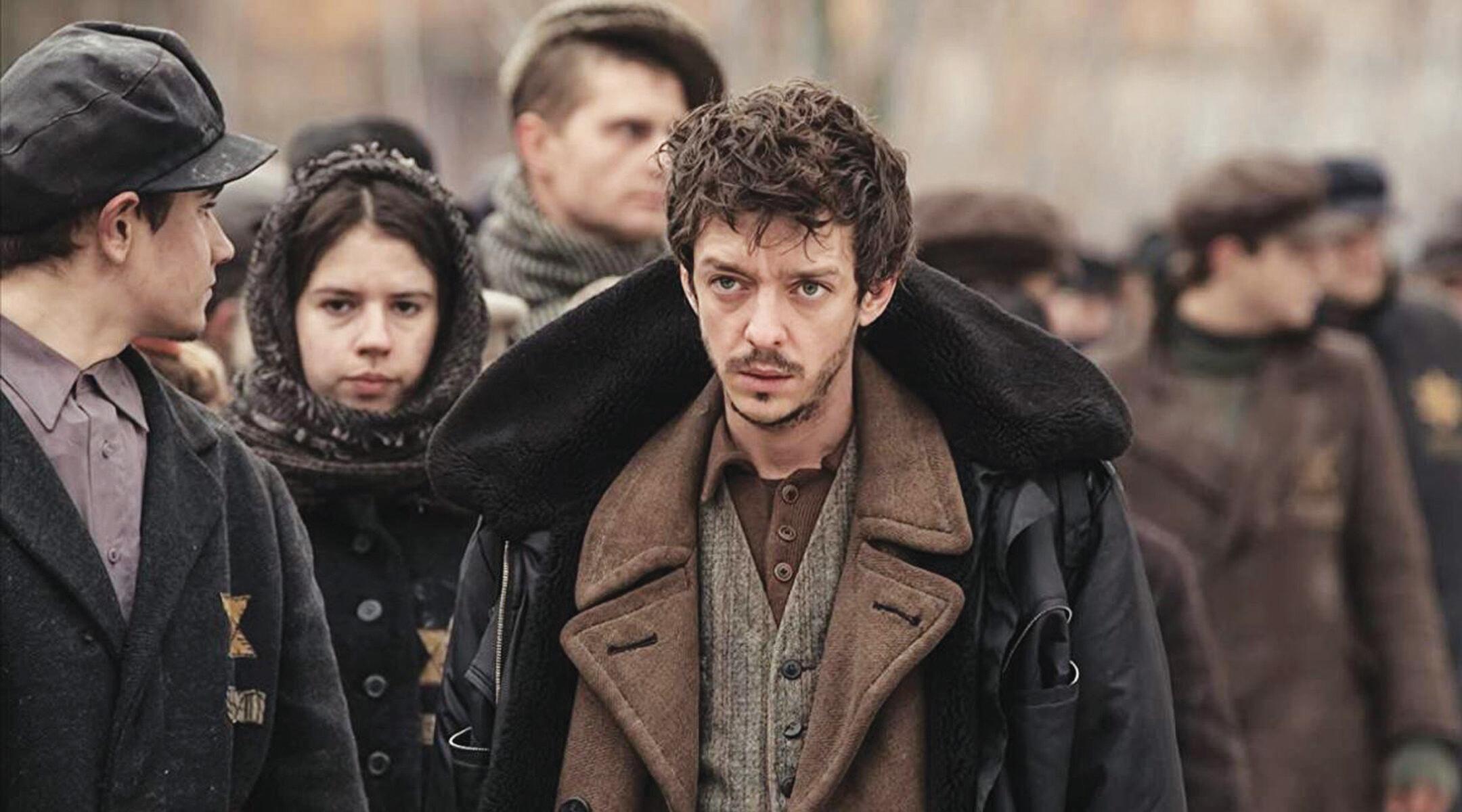
Persian Lessons opens Dayton's JCC Film Fest, June 1. The film, which is mostly in German (and fake Farsi), begins in a truck packed with Jewish men being driven to an execution site. One man offers Gilles, a young Belgian Jew, an expensive-looking book in Persian in exchange for Gilles’ sandwich. Shortly after the transaction is made, the men are taken to the place of execution. With nothing to lose, Gilles tells the Nazi soldiers he is in fact Persian, not Jewish, and presents the book as proof.
He can hardly believe his luck when the soldiers decide to keep him alive because their commander is looking for a Farsi speaker.
But Gilles’ troubles are only beginning. Sleep deprived, malnourished, and terrified, he must find a way to consistently teach a nonexistent language to a man who would kill him instantly if he slips up.
Gilles comes up with a code system using the only reliable foreign vocabulary at his disposal: the names of the inmates around him.
To each inmate, he assigns a foreignsounding mashup of their first and last names. To each mashup he assigns a
JCC Film Fest will screen Persian Lessons for its opening night, 7:15 p.m., Thursday, June 1 at The Plaza Theatre, 33 S. Main St., Miamisburg. Tickets are $18 and include a 6:30 p.m. reception. Purchase tickets at jewishdayton.org/events.
word that captures something about the personality or appearance of the inmate. Then he teaches that word to the officer, who ends up unwittingly memorizing his victims’ names.
Much of the critically acclaimed film is devoted to the development of Gilles’ scheme. But as it progresses, the film distinguishes itself from other Holocaust films in its treatment of the daily lives of the Nazi soldiers running the camp: the romance between female and male guards, the rivalry and politics between the officers, and how Nazism divided their own families back home.
This window into the routine of perpetrators was the main motivation for director Vadim Perelman, a Ukraine-born Jew whose family lost many relatives in the Holocaust.
“What I mostly wanted to do is to show the Germans, their humanity. To
show that they were just like us, that they’re not any different at all,” he said.
Doing this is a more powerful indictment against the Nazis than their frequent dehumanization as monsters in the film industry, Perelman argued.
This view, famously argued by philosopher Hannah Arendt in her 1963 book Eichmann in Jerusalem: A Report on the Banality of Evil, has gained popularity but remains disputed by historians and jurists, including Justice Gabriel Bach, who prosecuted Adolf Eichmann.
They argue that Arendt’s analysis ignores both the remarkable ideological fervor of Nazi antisemitism and its deep roots predating the Reformation.
Perelman — whose best-known film is House of Sand and Fog, an award-winning


tragedy from 2003 about immigration and depression starring Ben Kingsley and Jennifer Connelly — believes there’s a perpetrator in each of us.
“Myself, as a child, I was playing with the idea of being a bully. Pushing around the weak, calling them names. Everybody has that in them,” he said.
Perelman, 59, was an only child in Kyiv. His father died in a car accident when he was 9 years old, and he and his mother immigrated to Italy in 1977. They lived in extreme poverty in Rome — Perelman was once treated by a veterinarian because a doctor was too expensive, he told the Jewish Journal of Los Angeles in 2003.
Perelman (who now lives in California) and his mother later moved to Canada, where he got in trouble with the law for burglary. He eventually completed his high school diploma and became a director specializing in commercials.
His personal history may have informed his perspective on morality, he said.
In Persian Lessons, the Nazi officer, portrayed by Lars Eidinger, reflects on some of the choices that led him to run part of a concentration camp that is under threat of being captured by enemy troops. In one of the film’s most dramatic moments, the officer confides to Gilles that his plan to move to Tehran is born from the desire to reconnect with his older brother, who fled Germany because of Nazism.
“Evil isn’t something you’re born into,” Perelman said. “It grows out of a set of choices, some pretty small at first.”

When we’re children, we are taught — and naturally tend to believe — that good things happen smoothly, that goodness always is straightforward. We don’t learn about complications and doubts, much less about working through them, until much later.

We are taught and believe that Ethiopian Jews were flown to Israel "on the wings of eagles." If we’re lucky, we learn that goodness is strengthened through complications and doubts.
We learn that there were politics involved in getting Beta Israel to Israel; at times, it was ugly. There was racism. There was White-saviorism. There was cultural condescension. There was cultural confusion. And there was no happy-ever-aftering for the group, although many of its individual members have thrived. The community still faces poverty, racism, stereotyping, and bigotry, even at home in the Promised Land.
But Operation Solomon did get 14,325 Ethiopian Jews to Israel in 36 hours in 1991. It was a heroic undertaking, and it was led by an Israeli diplomat named Asher Naim.
OpenDor Media is a punnily named nonprofit organization (door as in a door that opens, and dor as in generation, specifically the younger generation that’s the intended audience for much of the company’s work) that makes video content about Jews and Israel for young people. It has made a film about Asher Naim, a docudrama called Exodus 91. It will be screened June 15 as part of Dayton's JCC Film Fest.
Naim’s two sons live in the United States: Gideon is in Manhattan, Ari is in Tenafly, N.J. Their sister, Ronit, lives in Israel.
Recently, I interviewed Ari Naim about his father.
“The history behind the movie is that my father was a career diplomat,” he said. But Asher Naim’s childhood didn’t make such a career seem likely. Or even, for that matter, possible.
“My father was born in Tripoli, Libya, in 1929,” Ari Naim said. “The family goes all the way back to the expulsion from Spain; they had lived in Libya for hundreds of years. Everything was fine — and then Mussolini came in, and then there was World War II, and things changed.
“So the whole family decided to leave. There were seven brothers and sisters; they and their parents all got on a truck and drove to Israel. As the story goes, it was my father who really pushed them to immigrate.”
That was in 1946, so the Naims found themselves in Palestine. “The children dispersed around the country. The parents got an apartment in Yaffo (Jaffa), and they had their eighth child, the only one born in Israel. My father went to some kibbutz, and then fought in the
JCC Film Fest will screen Exodus 91 at 7:15

p.m., Thursday, June 15 at The Neon, 130 E. Fifth St., Dayton. With guest speaker Michal Avera Samuel. Tickets are $12 and may be purchased at jewishdayton.org/events or at the door.
1948 war.”
The family was very poor, Naim said; so was the country, as it struggled to survive in those first few years as an independent Jewish state. But his father knew what he wanted.
“He decided that he was going to get educated. He didn’t even know what a university was.”
After the War of Independence ended, the government “gave the soldiers pieces of land to build houses on,” Naim said. “He went up to the Hebrew University in Jerusalem, and talked to a professor there. My father said, ‘I want to learn.’"
He would become a lawyer. He also had to work. “He worked as a laborer and sent money home to his family so they could eat,” Ari Naim said. “He worked in construction as a plasterer. He was a very dynamic person, and he knew people. Someone in the foreign ministry,” where Asher Naim was working in construction, “told my father that when he gets his degree, he also should apply for a job in the foreign ministry.” So he did. “And they said OK and gave him a job as a low-level diplomat.”
He had married during that time. His wife, Hilda Glick Naim, was born in Boston. “She won a scholarship when she was 18, took a boat to Israel, studied at the Hebrew University, and got a teaching degree,” her son said. Hilda and Asher met at the university, and soon they married.
Asher Naim’s first posting was in Japan. He and his wife, Hilda Glick Naim, went together.
“Golda Meir was my father’s boss at one point, when she was the foreign minister, and she liked to say that with Naim, they got two for the price of one,” Ari Naim said. “My mom was the ultimate diplomat.”
Ronit Naim was born in Tokyo, and Ari Naim was born in Nairobi, Kenya. “When they were in Kenya, Golda Meir came to visit them,” Naim said. “They were at their house, having dinner, and my mom said to Golda, ‘I have two kids, but I don’t have a sabra (native-born Israeli).’ Golda said, ‘You’re right,’ so they sent them back to Israel, and my brother was born there.”
But that didn’t stop the Naims. They represented their country — Asher officially, Hilda unofficially but effectively — at the Israeli embassy in Washington, at the consulate in Philadelphia, and later at the United Nations. “Eventually my father became an ambas-
sador, and he opened the Israeli embassies in South Korea and Finland,” Naim said.
“So time passes, and they finished serving in Finland — it was 1990, and they move back to Jerusalem. And then Israeli’s foreign minister said, ‘We have a problem in Ethiopia. We have 14,000 Jews, there are rebels taking over the government, and we need someone to go over there and figure out what to do to solve the problem.’”
The problem was serious. The country was poor and violent; the Jews had gathered in Addis Ababa, the nation’s capital city, living in crowded, unsanitary conditions, standing on interminable lines as they waited to get Sisyphean amounts of paperwork done, so they could go on to the next pile of paperwork. The Israelis already had airlifted about 7,000 Jews to Israel in 1984 in Operation Moses and had managed to get a few hundred out after that. But political corruption and violence in Ethiopia, and the reluctance of many Israeli rabbis to accept the Beta Israel as Jews, mixed in with some pure racism, kept the Ethiopian Jews stuck in Addis Ababa, unwilling to give up and go home but unable to get out.
“This problem comes up. And because my father was at the end of his career by then, he’d been doing this work for a very long time and was a very savvy diplomat, and because he was also from that region, and he was an immigrant himself, those were some of the reasons they sent him there.”
And there was an opening at the Israeli embassy because someone had tried to kill Meir Joffe, the ambassador Asher Naim was replacing.
The movie shows the way that Operation Solomon eventually happened; the often bad-faith negotiations and determination and desperation that led to the escape.
“When my parents got back to Israel, they realized that bringing 14,000 Ethiopians into this high-tech environment was not simple,” Naim continued. “They devoted the rest of their lives to raising funds for scholarships for the kids. They gave out hundreds of scholarships.” Asher Naim died in 2016, “but my mom is a Hebrew teacher, and she’s still teaching at 91. She’s in the same house in Jerusalem that they lived in ever since they went back. She teaches Ethiopian kids. My parents both believed that education was the way out, just as it was for my father. That’s how he got out.”
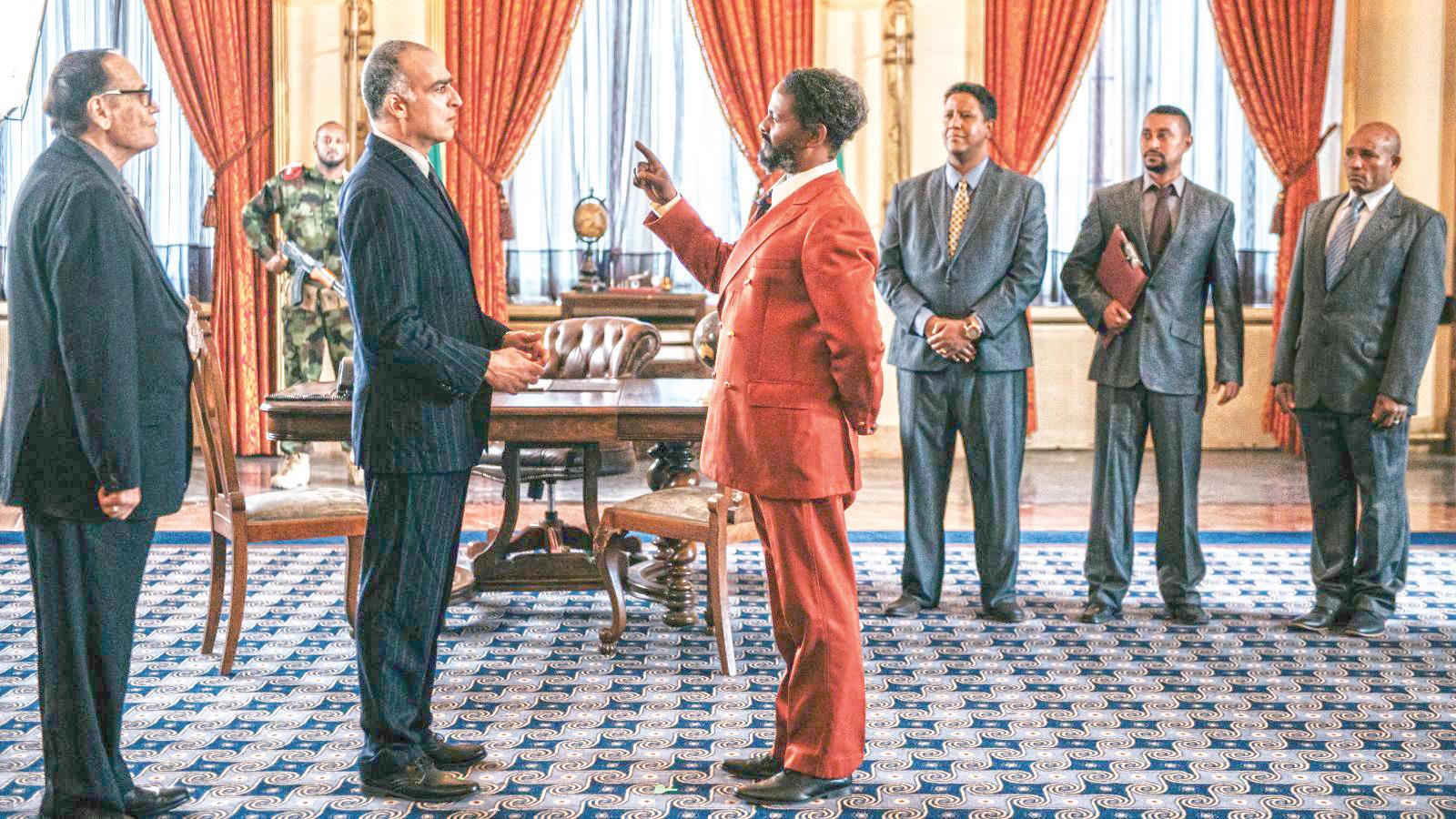
Got out of poverty, got out of hopelessness, got out of despair.
“After our father died, Gideon and I thought that we should do something to continue their mission, of getting Ethiopian Jews a proper education, so we created this movie. We are co-executive producers.
“We started with the idea of a 10- or 15-minute movie, but the director, Micah Smith, had a really good vision about it. He wanted to expand it; to make it not just a legacy film, but to encompass the issues the story brings up. It just evolved, and to Micah’s credit, one of things he did was incorporate the perspectives of the Ethiopians.”
The film mixes scenes done by actors with talking-head shots of the people those actors portray, and at times it pulls back from the actors to show the set they’re on as an artifice as it reveals the people around them, who normally are not on camera.
Some of the staged scenes are quite stagy; others, with children, are less so. Often it’s not clear whether something is real or staged. It does make clear that diplomats are actors, as it tells us at the very beginning, and it impresses on viewers how hard it can be to retain moral clarity when the path to that clarity can be obscured by competing demands, shoving themselves in the way.
“It wasn’t like the Entebbe mission, when the Israelis came, they conquered, they left,” Naim said. Operation Solomon was far messier than that, and “when it was over, there were real people, 14,000 of them, in a small country.”
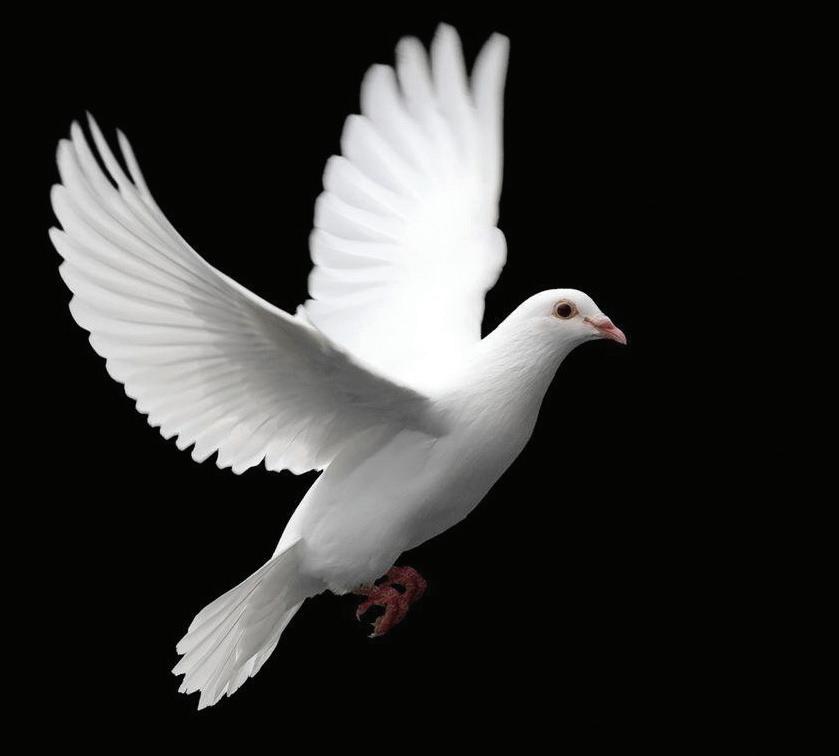
In 1975, the United Nations passed a resolution determining that Zionism is a form of racism. In 1991, Asher Naim gave an impassioned speech to the body in which he served, talking about the way Israel had gotten Black Jews out of Ethiopia and now was trying to assimilate them.
“One of the things that my father did that I am the proudest of is that shortly after he was sent to the U.N., based on his speech, the U.N. repealed that resolution,” Naim said. “His speech was asking how we could be racist, when we are doing what we are doing? Here I stand? Who am I? An immigrant! A North African Jew!”
The story of the Naims is a story of real belief in goodness as it is battered by reality. It’s about understanding that there are competing realities; at times they’re equally true. It’s about realpolitik and compromise and dashed dreams and misunderstandings and the need to keep trying.
Continued from Page 28

part by taking online courses through MasterClass from the likes of Martin Scorsese, Ron Howard, and Jodie Foster, and he also had a chance meeting at a dinner with retired basketball star Ray Allen, who had made a novice acting appearance in Spike Lee’s He Got Game when he was in his early 20s.
Allen’s advice was to spend some time on movie sets to get a feel for things, but not much was filming in south Florida at the time.
iMordecai was shot in 23 days in late 2019, meaning that Samel filmed a movie that starred Hirsch as a heavily-accented, old-world Jewish immigrant inspired by a relative of the filmmaker at least a year before Steven Spielberg did the same for The Fabelmans
Hirsch was nominated for an Oscar for his role in that movie, his first Academy Award nomination since Ordinary People more than 40 years earlier.
Samel’s film, which features the city of Miami extensively, has been a hit in Florida. It had its world premiere in January 2022 at the Miami Jewish Film Festival, where it won the audience award for best narrative film.
“I think that this film has the capacity to possibly impact and resonate with people of all ages,” said Igor Shteyrenberg, executive director of the festival.
Perhaps the success with the older Florida crowd has to do with the universality of the film’s subject matter. Even Warren Buffett, the famed investor, turned in his flip phone for an iPhone back in 2020, when he was nearly 90, even though he had bought many billions of dollars in Apple stock by that point.
Marcie E. Mazer, age 70 of Dayton, passed away April 28 in Columbus. Marcie was a devoted mother and grandmother, a passionate supporter of the State of Israel, a dog-lover, an avid gardener, and a member of Beth Jacob Congregation. She was preceded in death by her parents, Marshall and Shirley Mazer, and son, Edward Buren. Marcie is survived by her sons and daughters-in-law Elliott and Sara Buren of Orlando, Jeffery and Meagan Buren of Columbus, and Marc and Luxuan Buren of San Francisco; sisters and brother-in-law Andrea and William Franklin of Israel, Bonnie Mashiach of Florida; brother and sister-in-law, Dr. David and Cherie Mazer of Florida; nine grandchildren, numerous nieces, nephews, and many other relatives and friends. Interment was at Beth Jacob Cemetery. Memorial contributions may be made to Friends of the IDF in Marcie's memory.


Continued from Page 11
sing, feast, light candles and write their wishes on hardboiled eggs.
In the 1990s, the pilgrimage attracted some 10,000 people, according to a report in The Conversation, and attracts thousands today. Since 2011, Israelis have been able to enter the country for the pilgrimage even though Israel and Tunisia do not maintain diplomatic relations. The pilgrimage was canceled in 2011 following the Arab Spring, which began in Tunisia, and attendance dipped in subsequent years. The pilgrimage was also canceled in 2020 and 2021 due to the Covid pandemic.
Has the synagogue been attacked before?
Yes. In 2002, al-Qaeda set off a truck bomb near the synagogue that killed 20 people, most of them German tourists, about six weeks before the pilgrimage. Tunisia’s government denounced the attack and paid to restore the damage.
And in 2018, five men were arrested in connection with a firebomb attack at the synagogue. A suspicious fire also broke out at the synagogue in 1979.
How will this attack affect the pilgrimage?
The May 10 attack, and the fact that it was perpetrated by a security official, have led to despair among current and former
Robert Douglass Stomel, 59, of Springboro, passed away on April 25. Bob is survived by his wife, Susan (nee Lustig) of almost 20 years, and their two sons, Matthew and Ethan. He is also survived by his mother, Arlene (nee Korsin). He was preceded in death by his father, Murray Allen Stomel. Bob is also survived by his brother, Marshall Stomel, and his wife, Pam (nee Bank), their children, nephew Mitchell and niece Peyton; brother-in-law Steven Lustig and his wife, Nora, and their son, nephew Daniel; brother-in-law David Lustig and his wife, Dottie (nee Mountel), and their children, niece Chloe, nephews Adam, Sam, and Caleb. Bob was in the bicycle business his entire life, working the last 25 years at Huffy Bicycles. He was a staunch advocate of bicycle

pilgrims to the synagogue. Avi Chana, who has gone on the pilgrimage, told the Times of Israel, “I think it’s a death blow, at least for the foreseeable future, to a beautiful tradition and pilgrimage, and it is causing palpable pain. This is dealing the pilgrimage a mortal blow.”
Tunisian President Kais Saied, who has been accused of gutting Tunisia’s democracy, met with the country’s chief rabbi May 17 and pledged to protect Tunisian Jews and their houses of worship. Saied had also drawn scrutiny over comments he made May 14, in which he pointed to Israeli violence against Palestinians and claimed his grandfather saved Jews during World War II. Critics said he was trying to downplay the issue of antisemitism in Tunisia.
safety and was an integral part of the creation of bike lanes and many biking events in Springboro. Bob was also an avid fan of Frank Sinatra, gathering a collection of memorabilia that would impress Sinatra himself. Although Bob moved away from his hometown of Philadelphia, his love for the Eagles and cheesesteaks never wavered, and he beamed with pride whenever anything came up relating to Philly. Interment was at Riverview Cemetery. Contributions in Bob’s memory may be made to Middletown Hospice, ACS, or Springboro Safety/ Planning Committee.
12:00PM
Mary “Mahira” Rogers with Steve Wyke and Marc Gilbert Jewish & Yiddish favorites
1:15PM
Dayton Metro Barbershop Chorus Barbershop Classics
2:30PM
The Shimmy Cats
Israeli folk & Middle-Eastern dancing
3:45PM
The Flying Klezmerians
Eastern European & Klezmer favorites
5:00PM
Miami Valley Symphony Orchestra Jewish Orchestral Settings & Movie

Soundtrack Classics
11:30AM, 12:00PM, 1:30PM, 3:00PM, 4:30PM, 6:00PM
Guided Building Tours
12:30PM
Bonnie Beaman Rice and Jayne Klose
Combatting Stereotypes & Antisemitism







2:00PM
Meredith Moss Levinson (moderator)
Diversity of Jewish Culture and Tradition
3:30PM
Tom Bainbridge, Jese Shell, Vicki Kemmerer Jews Can Be Farmers Too
5:00PM
Rabbi Karen Bodney-Halasz
Diversity of Jewish Practice in America
Raffle Prizes


Take a chance to win one of 5 prize packages. Tickets available online.
Outdoor Market
Judaica, jewelry, accessories, gifts, clothing, and more













Children’s Area Family story time, games, crafts, and a petting zoo
Mitzvah Alley

Learn about Sidewalk Soldiers, Montgomery County Prevention Coalition, Brunner Literacy Center, and the Soroptimists


Learn more, become a sponsor, pre-order baked goods, and buy raffle tickets online: www.tidayton.org/festival


Thank you to our lead sponsors:

